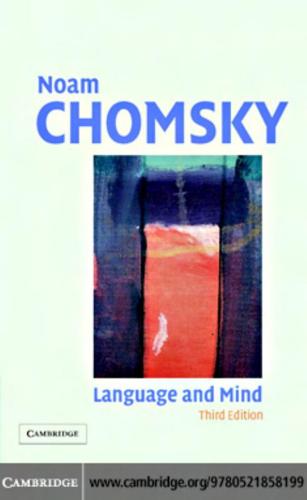
Language and Mind
by
Noam Chomsky
Published 1 Jan 1968
Even the most cursory attention to the facts of second-language acquisition is sufficient to establish this. Hence, although second-language acquisition is, indeed, to be distinguished from first-language acquisition, the distinction is not of the sort that Goodman suggests. While it may be true that “once some language is available, acquisition of others is relatively easy,” it nevertheless remains a very serious problem – not significantly different from the problem of explaining first-language acquisition – to account for this fact. Consider now the more important matter of first-language acquisition, the problem to which the empirical hypotheses regarding innate schematism have 6 For some discussion, see my paper “Explanatory Models in Linguistics,” in E.
…
Furthermore, as Thomas Reid pointed out, if we use “idea” in the nontechnical way, then not only the position of Descartes, but also that of Locke and Hume reduces to absurdity – an observation that is correct, but that shows nothing more than the absurdity of insisting that a technical term must be understood in “the normal use” of the homonymous nontechnical term of ordinary discourse. Let me turn, however, to the substantive problem of acquisition of knowledge, as Goodman formulates it in the specific case of language acquisition. Quite properly, he distinguishes two cases: initial language, and second-language acquisition. But his analysis of the two cases leaves much to be desired. Consider first the problem of second-language acquisition. In what I understand to be Goodman’s view,5 second-language acquisition poses no problem, since “once one language is available and can be used for giving explanation and instruction, the limitations [determined by an innate schematism] are transcended.”
…
This seems to me to be obscurantism, which can be maintained only so long as one fails to come to grips with the actual facts. There is, furthermore, a non sequitur in Goodman’s discussion of first- and second-language acquisition. Recall that he explains the presumed ease of second-language acquisition on the grounds that it is possible to use the first language for explanation and instruction. He then goes on to argue that “acquisition of an initial language is acquisition of a secondary symbolic system,” and is hence quite on a par with second-language acquisition. The primary symbolic systems he has in mind are “rudimentary prelinguistic symbolic systems in which gestures and sensory and perceptual occurrences of all sorts function as signs.”
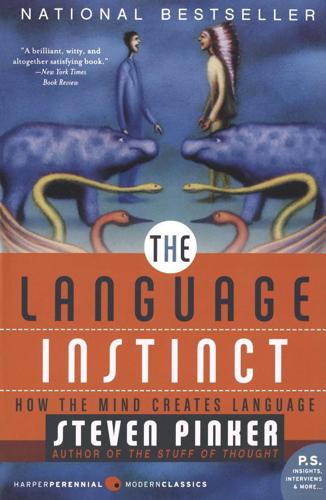
The Language Instinct: How the Mind Creates Language
by
Steven Pinker
Published 1 Jan 1994
Raven, Trans.). Philadelphia: University of Pennsylvania Press. Hurford, J. R. 1989. Biological evolution of the Saussurean sign as a component of the language acquisition device. Lingua, 77, 187–222. Hurford, J. R. 1991. The evolution of the critical period in language acquisition. Cognition, 40, 159–201. Huttenlocher, P. R. 1990. Morphometric study of human cerebral cortex development. Neuropsychologia, 28, 517–527. Ingram, D. 1989. First language acquisition: Method, description, and explanation. New York: Cambridge University Press. Jackendoff, R. S. 1977. X-bar syntax: A study of phrase structure.
…
Language learnability and language development. Cambridge, Mass.: Harvard University Press. Pinker, S. (Ed.) 1985. Visual cognition. Cambridge, Mass.: MIT Press. Pinker, S. 1987. The bootstrapping problem in language acquisition. In B. MacWhinney (Ed.), Mechanisms of language acquisition. Hillsdale, N.J.: Erlbaum. Pinker, S. 1989. Learnability and cognition: The acquisition of argument structure. Cambridge, Mass.: MIT Press. Pinker, S. 1990. Language acquisition. In Osherson & Lasnik, 1990. Pinker, S. 1991. Rules of language. Science, 253, 530–535. Pinker, S. 1992. Review of Bickerton’s “Language and Species.” Language, 68, 375–382.
…
Greedy neural tissue lying around beyond its point of usefulness is a good candidate for the recycling bin. James Hurford, the world’s only computational evolutionary linguist, has put these kinds of assumptions into a computer simulation of evolving humans, and finds that a critical period for language acquisition centered in early childhood is the inevitable outcome. Even if there is some utility to our learning a second language as adults, the critical period for language acquisition may have evolved as part of a larger fact of life: the increasing feebleness and vulnerability with advancing age that biologists call “senescence.” Common sense says that the body, like all machines, must wear out with use, but this is another misleading implication of the appliance metaphor.
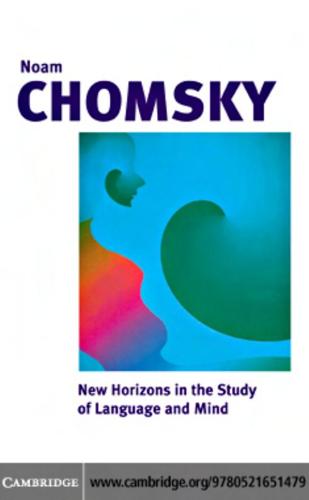
New Horizons in the Study of Language and Mind
by
Noam Chomsky
Published 4 Dec 2003
The trouble with this stage of the theory was that the resultant complexity made it look as if languages were unlearnable: how could a child master this dramatic complexity in the few years during which first language acquisition takes place? Chomsky’s response was that much more of our knowledge of language is innate than had been previously suspected. Specific languages like English or Japanese could obviously not be innate – as witness the environmentally triggered differences between them – but the course of normal language acquisition makes it equally clear that a huge amount must be innate. It is not just that there are constraints on the kind of Foreword xi hypothesis the child learning its first language can entertain, all the core properties of language are built in from the start.
…
Minneapolis, MN, University of Minnesota Press. 214 Index Index abduction 80 ability, distinguished from knowledge 50–2, 97–8 abstract see concrete–abstract dimension access: to consciousness 93–8, 141, 147 – in principle 96–8, 141, 143 acoustic phonetics 174 acquisition 6–8, 181; and concept formation 61–6; “initial state” as a device for 4–5; innateness and selectivity x–xi, 121–2; labelling of innate concepts 61–2, 65; and lexical access 121–2; and sensory deficit 121–2; see also child language acquisition; Language Acquisition Device (LAD) adjacency 11, 121 agency, and objects 21–2 agreement 14 algorithms 113, 147, 159 Almog, Joseph 42 analytic–synthetic distinction xiv, 46–7, 61–5 anaphora 39, 140 animal, man and 3 animate–inanimate dimension 126 anthropological linguistics 6 anthropology 136 anti-foundationalism 76–7 arbitrariness, Saussurean 27, 120 argument-structure 11 Aristotle 187, 204n articulatory phonetics 174 articulatory–perceptual systems 28, 120, 123–6, 180 214 artifacts, capacities of 114 Artificial Intelligence 200n assertability conditions 109 assignment of derived constituent structure 199n association 92, 93 Atlas, Jay 151 “atomic” units 10 atomism, physical 111 auditory cortex 158 Austin, John 45, 132 authority: deference to 155; firstperson 142–3 autosegmental 40 Baker, Lynne Rudder 153–4 Baldwin, T.R. 79–80, 81, 144 Barinaga, Marcia 158 Bedeutung (Frege) 130, 131–2 Beekman, Isaac 110 behavior, causation of 72, 95 behaviorism 46–60, 80, 92, 93, 101, 103 belief systems: and the language faculty xiv, 63–4, 129; lexicon and 32; and the terms of language 21–2, 137, 148–9 beliefs: absence of term in other languages than English 119; attribution of 91, 119, 135, 146–7, 153–4, 200n; convictions about the nature, as a posteriori or a priori 89; different about the same subject 149, 192–3; false 33, 43; fixation 63–4; individuation of 165, see also I-beliefs justification Index as interest-relative 196n; and meaning 137; and properties of expressions 178–9; relation to the world 47, 135, 197n; similarity of 43–4, 152; social role of 197n; that correspond literally to animistic and intentional terminology 135–6 Berthelot, M. 111 “best theory” 112, 136, 142, 145, 173 “bifurcation thesis” xiv Bilgrami, Akeel 137, 150, 154–5, 190 binding theory 10, 11, 31, 39, 50; use of principle (C) 93, 99 biology vii, 1–2, 3–6, 139; of language 1–2, 3–5, 34; meaninglessness of intuitive categories for 161–3; and study of the mind 5–6 Black, Joseph 166, 184 blindsight 95–7 body: Cartesian theory of viii, 103; limitations of naturalistic theory of the 28, 143; as mental and physical 113, 167; theory of the 84, 86, 87, 199n body–mind problem see mind–body problem Bohr, Niels 43, 111, 151, 152 Boltzmann, Ludwig 110 boundary conditions 7–8 Boyle, Robert 108 Bradley, David 163, 203n brain: auditory, visual and tactual inputs 121–2; biochemical laws of 16; configurations relevant to meaning 19–20, 24–40; and consciousness 86, 145; electrical activity of the viii, 116–17, 140; homogenity of structure not found 184; language faculty xii, 73, 77–8 – computational theories 116–17; localization of analytic mechanisms of 121–2; properties of 27; shared initial state 5, 33–4, 73 – mental and organical structure of the 215 167–8; and mind 76; neural structure as natural realization of rule systems 54–5; provides mechanisms of thought 113–15, 183; scans 171; as solving problems and adapted to normal situations 159, 161; study at various levels 6, 24, 103; as thermoregulator 195n; things mental as emergent properties of 1–2; in a vat 158–9 brain sciences x, 19–20, 116 Brentano, Franz 22 Brock, William 110–11 Bromberger, Sylvain 82, 203n Burge, Tyler 72, 159, 171, 184, 192–3, 195n, 202n, 204n; on eliminativism 88, 92, 138; on naturalism 87, 109, 144 c-command 11, 40 C–R theories 24, 25–7, 40, 45, 104–5; as a form of syntax 34, 40; see also I-language Carnap, Rudolf 186, 187 Cartesianism 80, 83–4, 85, 132, 145, 167; collapse of 103, 108–9 case systems, language differences in 11–12 Case theory 10 categories 138–9 causality viii, 47, 72, 95, 137 “causative” properties 179 cellular theories 116 chain condition 10 Chastain, Charles 115 child language acquisition x–xi, 6–7, 101, 186; assigning labels to concepts 61–2, 65; compared with foreign adult’s 49; and the computational system 120; early exposure and language development 201n; and the LAD 92–3; limited exposure to semantic aspects in ambiguous circumstances 120, 185; rate of 120; of a specific language 53, 54 216 Index children: attribute beliefs to others before development of language 119; blind and language acquisition 121–2; innateness of the property of discrete infinity 3–4; intuitive understanding of concepts 62; phonetic data available to 185; usage differs from adult usage 191–2 Churchland, Patricia 107, 115 Churchland, Paul 64, 107, 115, 183, 184 clicks, displacement to phrase boundaries 25, 55, 58, 140, 201n cognition: internally generated modes to which experience conforms 182–3; knowledge of language and x, 73, 134 cognitive deficits, with intact language faculty 121, 146 cognitive development: and language growth 62; uniformity not found 184 cognitive reach 107 cognitive revolution (1950s) vi, 5–6 cognitive science 23, 33, 112, 116, 165; status of 165–6 cognitive state 55, 81, 82–3, 154 cognitive system 117–19, 125; and complex relational words 128–9; phonetic aspects of 118; and semantic representation 174; state changes that reflect experience 118–19; use of resources 129, 135 “cognoscitive powers”, innate 181–3 “coherent–abstraction test” (Almog) 42 common language approach 29–32, 33, 37, 99–100; see also “public language” common sense xvi, 80, 135, 138, 146, 163–4; and naturalistic inquiry 20–4, 37–45 communication 30, 78, 130, 154, 164, 202n community norms 40, 49, 71, 72, 142, 148, 155 competence: assumptions about drawn only from behavior 57–8; as a generative procedure 60; grammatical 26; pragmatic 26; see also I-language “competing hypothesis” 183–4, 185 complexity xii, 7, 13, 124, 169 computational approach to language xiii, 6, 10, 103–4, 116–17, 124, 159 computational procedure: “austerity” of 120–1; maps array of lexical choices into phonetic and logical form 125, 170; registers adjacency, but no “counters” 121 computational systems: complexity of 123–4; (generative) 78–9; with largely invariant principles 120, 169; properties 107, 120–1, 123, 145 computational–representational systems see C–R theories concepts: construction of artificial 51–2; as determining reference of a word 187; innate labelled in language acquisition 61–6; link with sound 120; locational 62; Putnam on short theories and formation of 66; use in understanding ordinary life 90 conceptual–intentional systems 9, 10, 28, 61–6, 124–6, 180 concrete–abstract dimension 126, 180–1 concreteness 168–9, 176 conditions, philosophically necessary 146–7 “Connection Principle” (CP), Searle’s 96–8 connectionism 103–4, 116 consciousness xiv, 83, 108, 145; “access in principle” to 96–8, 141, 142, 143; access to 93–8, 141, 147, 169; nature of 115, 143, 145; potential 86–7, 91–2, 93, 97; potential for, and blindsight 96–8; relation to neural structures 144–5; Searle’s “radical thesis” 86–7 Index constitution/constituency 189–90, 191 content: of fixed reference in natural language 42; locality of (Bilgrami) 150, 190; phonetic 151; as a technical notion 137, 153; wide and narrow 165, 170; see also perceptual content coordinate structure constraint, Quine on 55–6, 198n Cordemoy, Géraud de 114 covert movement 14–15 creativity, of language use 16–18, 145 cultural studies 157–8 D (domain) 39–40 Darwin, Charles, Origin of Species 163 Davidson, Donald 46, 61, 136; “A Nice Derangement of Epitaphs” 56, 67–70; “anomalism of the mental” 88–9; “interpreter” example 29–30, 56, 67–70, 102; “no such thing as language” 136, 202n Davies, Martin 23, 195n deep and surface structure x, xvi, 10, 28, 203n deference, patterns of 171 Dennett, Daniel 79, 91, 107–8, 144, 200n denotation, use of term 130 denotational theories of interpretation 131, 136, 177–9, 192 Descartes, René ix, xiii, 3, 17, 108, 112, 114, 133, 182 description xi, 145 descriptive adequacy 7–8, 120, 122, 165, 185 descriptive linguistics 54, 122, 184 descriptive semantics 47, 61 design of language 9–13 designer’s intent 125, 136–7, 180 deviance viii, 78–9; and computational theories of the language faculty of the brain 116–17; distinctive brain responses 217 to language 24; from community norms 98–9, 142 Dewey, John 47 dialect: as a nonlinguistic notion 31; prestige 156 dictionary, compared to complexity of human lexical recording 120, 185 Diderot, Denis 110 Dijksterhuis, E.J. 108 discourse representation 129 discrete infinity 3–4, 184 displacement property: explained 12–14; and legibility conditions 13–15 dissociations 117, 184 distal properties, correlation of internal processes with 162 distributional properties 179 division of linguistic labor 71, 187–8 du Marsais 196n dualism vii, xiv, 75–105, 117, 140, 142, 163; varieties of 98–105; see also Cartesianism; metaphysical dualism; methodological dualism Dummett, Michael xiii, 46, 56, 57, 102, 143; on LAD 94; on language as a social practice 48–9, 50; on naturalistic inquiry as psychological not philosophical 140–1 Dupoux, E. 118 economy conditions 123–4 Edelman, Gerald 103–4, 116 Egan, Frances 162 electrophysiological responses, to syntactic versus semantic violations 116–17 eliminativism see materialism, eliminative embedding, multiple 124 “emergent laws” 145 empirical inquiry 46–74, 76, 92–3 empty category 15, 181 English: importance of Japanese for the study of xv, 53–4, 58, 102; left-headed 93 218 Index entailment relation 34, 174 entities, beliefs about 135 environment: influence on initial state of language faculty 78, 162, 166, 189–90; role in specification of reference 41 epistemic boundedness, Dennett on 107–8 epistemic naturalism 79, 80–1 epistemology: evolutionary 80; naturalized (Quine) 46–7, 80, 81 Epstein, Samuel 11 error, problems of 142, 143 ethnoscience xv, 90–1, 135, 155, 160, 164, 165, 172–3 event-related potentials (ERPs) viii, 24–6, 38 evidence: intuitive categories as 162; legitimacy of wide use of x, 53–8, 60, 102, 139–40; linguistic 55, 57, 58, 139–40, 201n; psychological 55, 57, 58, 201n; role of initial state in determining what counts as 197n; useful about reference 171–2 evolution: of brain’s administration of linguistic categories 183; and innate concepts argument 65–6; and questions for empirical inquiry 73–4; theory of 139, 163 experience: effect on state changes of the cognitive system 118–19; and “initial state” 4–5, 7–8; sets boundary conditions 7–8 experts: deference to 155–6; role in determining reference of terms 41–2, 71, 72, 190–2, 196n explanation, and description xi explanatory adequacy 7–8, 45 explanatory models 19, 45, 183–4 explanatory theory 103, 106, 110, 115, 166; and intuitive judgements 171–2 expression, ways of thinking and means of 15–16 expressions: class generated by Ilanguage 78–9, 169; computational procedures that access the lexicon to form 170, 173–4, 180; internally-determined properties of 34–6; as a pair <PHON, SEM> 173, 175; relation with external world 129–30; structural problems for interpretation 124; universal and language-specific properties 35 extension 148 extensional equivalence (Quine) 132 externalist approaches xiii, 38–40, 43, 148–63, 190; and Twin-Earth thought experiments 148–50, 155 fact, truths of and truths of meaning 62–4 faculty of language vii, x–xi, xiii, 77–8, 168–73; assumes states that interact with other systems 168; “austerity” of 120–1; common to the species 70, 168; components of 117; evolution of 2, 3–5; as a function that maps evidence into I-language 73; innate structure and effect of external environment 60, 168; intact but cognitive deficits 121, 146; intrinsic properties of 121, 127; as natural object 119; perfection of 9–15; relations with mind/brain systems xii, 73, 77–8; specific structures and principles of 183–4; triggering of the analytic mechanisms 121–2; see also initial state; state L fallibility 191 features 10, 120, 179; attraction of 13–15; legibility conditions and 11–12; not interpreted at either phonetic or semantic interface 12 field linguist 46–60 first-person authority 142–3 “fitting”, and “guiding” (Quine) 94–5 Flaubert, Gustave 90 Fodor, Jerry 107, 117, 139, 184; “First Law of the Non-Existence of Cognitive Science” 165; “language of thought” 19 Index folk psychology 23, 28, 89, 154–5, 196–7n folk science xv, 84, 91, 127, 135, 137, 164, 172–3; and cultural conditions 119 folk semantics 172, 188 forces, immaterial 108–9, 144, 167 formal languages 12, 57, 199n, 202n free will ix, 108 Frege, Gottlob 30, 36, 80, 85, 130, 187, 188; “common public language” 30, 33, 131–2 Friedman, Michael 112 front-wh-phrase 56, 198n Galileo Galilei xiii, 4 “garden-path sentences” 124 generalizations, psychological 165–6, 168–9 generative faculty of human understanding 16–18 generative grammar vi, 132, 174; computational operations 13; explained 5–7; goals of study of mechanisms in everyday life 17; and grammaticality 63; and principles-and-parameters approach 122 generative phonology 44, 151 generative procedure; isolating a 29–32, 69; the right 132 genes, and “initial state” 4–5 Gestalt 182 Gibson, Roger 198n Goodman, Nelson 181 government 11 grammar: and descriptive adequacy 7, 120, 185; uses of term 5, 201n grammars: “innate skeletal” (Quine) 199n; as specific internalized rule systems 57–61 grammaticality, Quine on 63, 199n gravity, Newton’s 108–9, 166 “guiding”, and “fitting” (Quine) 94–5 Haas, W. 199n Halle, Morris 203n 219 Harris, James 64 Heisenberg, Werner 167 Herbert, Edward, Baron of Cherbury 80, 85 Higginbotham, James 73 Hobbes, Thomas, on names 182 holism 46, 48, see also meaning holism homonymy 181 Huarte, Juan 17 human being: concept of xv, 3, 20, 139; and language speaking 20–4 human faculty of language see faculty of language Humboldt, Wilhelm von 6, 73 Hume, David 4, 64, 80, 85, 133, 170; on fictitious ascribed identity 16, 182–3; on Newton 110, 167; “science of human nature” 141, 164, 173 Huygens, Christiaan 82, 108 hypotheses, Newton’s refusal of 109 I-beliefs xiii, 32–3, 193; changes in 193; expressed in I-language 72 I-conceptual system 193 I-language vii, ix, xi–xii, xiii, 123; as generative procedure 70–3, 78, 119–21, 203n; C-R theory of 26, 32, 38, 40–2, 78; and construction of semantic and phonetic representations 174; followed by principles-and-parameters approach 123; has computational procedure and a lexicon 120–1; as instantiation of the initial state 123; internal and individual and intensional 5, 70–3, 118–19, 132, 169; language-like accretions 42–3; and language-world relations 188–9; mastery and internal representation of a specific 73; normativity aspects of 99; and performance systems 27–32, 34–6; as a product of the language faculty 27, 42–3; relation to external events 174–5; restricted variety of 27, 33, 44–5; specifies 220 Index form and meaning and accounts for properties of complex expressions 26–7; use of term 131, 201n I-linguistics 171; and common-sense notions of language 169, 170, 173, 192–3; and use of properties which might include I-sound and I-meaning 187 I-meaning 170, 173, 175, 179 I-sound 170, 173, 175, 179 idealization 49–50, 100, 123, 197n ideas: history of xiv; as not things but ways of knowing 182; people have about meaning and sound 173; theory of 182 identity, ascription of fictitious (Hume) 16, 182–3 idiolect, communication between time slices of an 30 immunology, selective theory xi, 65 impairment, selective 117 indeterminacy, empirical 57–8, 198n indeterminacy of translation (Quine) 132, 140, 147, 198n indexicals 42, 181 “individual sense” 70, 72 individualist approach vii, 32, 162, 164;, see also internalist approach individuation: and nameable things 126–7; and referential use of language 180, 182–3 infants: with performance systems specialized for language 118; reification of bodies in 92–3 inference 121, 180; as interestrelative 196n inflection: as special property of human language 12; variations in richness 120 inflectional features, role in computation 10 inflectional systems: basically the same 120; language differences in 11–12 initial state x–xi, 4–5, 77–8, 123; and attained state 95; common to the species 4–5, 50, 53–4, 119; determines the computational system of language 27; as a fixed biologically-determined function that maps evidence 53–4; genetically determined 27, 53–4, 118; incorporates general principles of language structure 60; incorporates principles of referential dependence 50; integrated conceptual scheme 62; with parameters fixed 123; plus course of experience 4–5, 7–8; and postulated identity of all languages 122; richness of the 35–6; as shared structure 30, 33–4, 50; as Universal Grammar (UG) 73, 81, 101; see also I-language innate component, identifying the 172 innate endowment: and environmental factors 166; and impoverished input 121–2; role in understanding the world 90–1 innate semantic representations, theory of (TISR), Putnam’s critique of 184–9 innate structure of the organism, theory of and the mapping M 60–1 innateness, of knowledge of language x–xi, xiii, xv, 2, 3–4, 126 “innateness hypothesis”, Putnam on Chomsky’s 65, 66–7, 100–1, 187–9 “innatism” see “innateness hypothesis” inner states, ideas about 164–6, 168–9 input–output systems, of the language faculty 117–18 instinct 91 institutional role 180 intelligence 6, 122, 182; accessibility to human ix, 91; and language use 147; mechanisms of general 185; scope and limits of 107; see also Artificial Intelligence Index intelligibility, in scientific discourse 151–2 intention 62, 91, 125, 137, 180; referential 130–1; see also conceptual–intentional systems “intentional laws” 166 intentional terminology 113–15 intentionality: Brentano on 22; naturalistic inquiry and 45, 132 interests 125, 128, 137 interface: between language faculty and other systems of the mind 123; legibility conditions at the 10–12; levels 10, 28, 39, 173–5; location of the 174; phonetic and semantic representations at the 10–12, 160, 173–4; properties 124–6; weakest assumptions about relations 10, 128–9 interface condition, requires erasure of uninterpretable features 14–15 internal processes, correlation with distal properties 162 internal relational structure 22 internalism vii, xiv, xv, 15, 125; critique of 162; defined 134; form of syntax 129 internalism–externalism issues 148–63 internalist approach 33–4, 38–45, 134–63, 164–94; legitimacy of inquiries that go beyond 156; and other domains of psychology 158–9; to differing beliefs 193; to language-world relations 15–16 internalist linguistic theory (T) 142–3, 146 internalist semantics 34, 38–9, 45 interpretation, language and xiii–xiv, 46–74 interpretations, assignment of 160–1 “interpreter”, Davidson on the 29, 56, 67–70, 102 intuitions 44, 70, 84, 119, 130, 135, 138, 161, 197n intuitions: limits of xiv–xv; as subject of linguistic study 171–2; and technical terms 148–9 221 intuitive categories, meaninglessness for science 161–3 intuitive judgements: about statements 40–2; as data to be studied as evidence 171–2; different 64; forced with ordinary expectations withdrawn 172 invented forms 181 invented system, designed to violate principles of language 121 Jacob, François 139 Jacob, Margaret 108, 110 Jakobson, Roman 140 James, Henry 47, 90 Japanese: anaphora in 140; evidence from about referential dependence 53–4, 58, 102; importance for study of English xv, 53–4, 58, 102; right-headed 93 Jerne, Niels Kaj 65 Jespersen, Otto 73 K, as constant knowledge of language 51 K-ability 51 Kant, Immanuel 112, 182; method of transcendental argument 165 Kayne, Richard 123, 131 Kekulé von Stradonitz, August 111 Kenny, Anthony 50, 197n knowing-how 51–2 knowledge: distinguished from ability 50–2, 97–8; nature of 170; nature of tacit xiii knowledge of language vii, ix, xiv, 50–2; and cognition x, 73; defined 73; in English usage 170; as the internal representation of generative procedure in the brain 50–2; as learned ability 50; partial 48–9, 99–100, 146; uniform among languages 126; see also innateness Kripke, Saul 37, 141–2; Naming and Necessity 41 Kripke’s puzzle 191 222 Index La Mettrie, J.O. de 84, 113, 167 labels, assigning to concepts 61–2, 65 Lange, Friedrich 167 language: as a biological object vii; as a community property 99–100; elementary properties 6; as the finite means for infinite use (Humboldt) 6, 73; as a generative procedure assigning structural descriptions 50–2; internalist perspective on 134–63; and interpretation 46–74; as a natural object xiv, 106–33; naturalism and dualism in the study of 75–105; in naturalistic inquiry 77–9; no useful general sense in which to characterize 48–9; as a notion of structure that guides the speaker in forming free expressions 73; notions of in ethnoscience 90–1; as a portable interpreting machine 29, 68, 202n; as a process of generation 73; as property of organized matter 115; as a social fact 197n; specific properties of human 16; study of 3–18; terms for something like 119; use of term 106, 130–1 – in different speech communities 157–8 – views on the concept of 73 Language Acquisition Device (LAD) 81, 86, 92–3; as a physical not psychological mechanism 93–4 language change, the study of 6 language faculty see faculty of language language speaking, and human being 20–4 language use see use of language language-external systems 175, 179 language–thought relations 135–6 language–world relations: at the phonetic interface 175; internalist approach 15–16, 129–30; truth of 188–9 languages: apparent variability of 122; as cultural artifacts 157; diversity of 7; head-first or head-last xi; no such things as (Davidson) 136; in part unusable 124, 161 Lavoisier, Antoine 110 learnability of languages xiv, 124 learning: as acquiring rules that map LI into some other system of mind 176; “by forgetting” 118; generalized mechanisms 66, 101; incremental 30; selective process 65 left–right orientation 93 legibility conditions xii, 9–11; and the displacement property 13–15; impose three-way division among features 11–12 legitimacy, questions of 183–94 Leibniz, Gottfried Wilhelm 82, 108 Leonardo da Vinci 163 levels of analysis (Marr) 118, 159 Lewis, David 57 Lewis, G.N. 111, 112 Lewontin, Richard 161, 195n lexical items 10, 175–83; acquired on a single exposure 120, 185; attribution of semantic structure to 61–2; constituted by properties approach 120, 170, 179; different approaches to study of 36, 175–83; dissociation of either sound or meaning 175, 176–7; may be decomposed and reconstructed in the course of computation of SEM 175; relational approach to 179–83 “lexical semantics” 174 lexical structure 181; generative factors of (Moravcsik) 182–3, 204n lexicon: defined 10; mental 32; and properties of computation 123, 170; subject to a complex degree of conscious choice 170–1; things selected and individuated by properties of 137 LF see Logical Form Index lingua mentis, representations generated by I-language map into 185–9 linguistic, use of term 106, 134 linguistics: explanatory insight for vii; and science-forming faculty (SFF) 101; scientific status of xiv, 112; subject matter of 1–2, 139–40 linguosemantics 165 Llinás, Rodolfo 128 Locke, John 1, 167, 182–3 locomotion 147 locust–cricket example (Baker) 153–4 Logical Form (LF) xi–xii, 124–5, 129–30; instructions at the interface 128–9; origins of 28 “m-events” (events mentalistically described) 89–90 McGinn, Colin 145, 201n machine: ability to think debate 44–5, 114, 147; man and 3, 17, 84, 132 machine intelligence 114 malapropisms 70–3 mapping, and neural interaction 116 marked options 125 Marr, David 23, 118, 158–9, 161, 195n, 202n material: and abstract factors, simultaneity in meaning 16; or physical 91–2, 143 materialism 109–10, 144, 167; eliminative 26, 85, 87, 88, 90, 91, 92–3, 104, 117, 138, 144; and its critics 85–93; Nagel on 87–8 matter: altered concept of 113, 133; dark 85; thought and action as properties of organized 84, 86 meaning: analogies with sound 15–16, 175–9; and beliefs 137; disagreements about study of 15–16; “in the head” or externally determined 148–51; inquiry into meaning of 2, 173; internal conditions on 36; relevance of mental/brain configurations to 223 19–20, 24–38; as semantic features of an expression 125; and sound xi–xii, 9–10; theory of, and internalism–externalism debate 147–63; truths of and truths of fact 62–4 meaning holism xiv, 61, 66–7, 152, 186–7, 195n mechanical philosophy 83–4, 86, 104, 108, 110, 144, 163, 167 mechanics, laws of 82 mechanisms 17–18, 56 Mehler, J. 118 mental: all phenomena potentially conscious 86–7; “anomalism of the” (Davidson) 88–9; bridge laws relating to physical 89–90; characterized as access to consciousness 93–8; location within the physical 103; as the neurophysical at a higher level 104; phenomena described in terms of the physical 109; and physical 113; and physical reality 166–8; replacement by physical 138; to define in neurological terms 103; use of term xiv, 75–6, 106, 134 mental construct vii mental event tokens, and physical event tokens 89 mental properties: approaches to 147; and nervous system 167 mental representations: internalist study of 125; specifications of 165; see also C–R theories mental states, attribution of 91, 160–1, 169 Mentalese 176–8, 185–9 Merge operation 13 messages, decoding 185–9 metaphorical use of terms 114, 131, 159, 161 metaphysical, extracting from definitions 75–7 metaphysical dualism 108, 112, 163 metaphysical naturalism 79, 81–2, 85, 144 224 Index metaphysics vi, 112 methodological dualism 76, 77, 93, 112, 135, 140–1, 163 methodological naturalism 76, 77–8, 79, 81, 91, 135, 143 Mill, John Stuart 187 mind: architecture of the 14, 121, 135, 174;Cartesian theory of 83–4; as a computational state of the brain 128; as consciousness 86–7; as “Cryptographer” 185–9; explanatory theories of in study of language 77; history of the philosophy of 109; as mental aspects of the world 134; naturalism and dualism in the study of 75–105; naturalistic inquiry into 103; reflection on the nature of the 165; as res cogitans 83; study of in biological terms 6; theory of (TM), scientific status of 85–6; unraveling the anatomy of the 173, 183; use of term 75–6, 106, 130–1 mind–body problem vi, vii–viii, xiv, 84, 86–91, 88–9; as how consciousness relates to neural structures 144–5; lacks concept of matter or body or the physical 110, 199n; Nagel on 86–8; no intelligible 103, 112, 138; as a unification problem 108–9 mind/brain interaction 1–2, 9–11 mind/brain systems: integration of states of language faculty with 173–5; internalist study of 164–5 Minimalist Program x, xi, xv, 9–15 misperception 159–60 misuse of language, notion of 49, 70–3, 200n “MIT mentalism”, Putnam’s critque of 184–9 models: computer 105, 116, 157; constructing to learn 114 modifications, nonadaptive 163 modularity: of mental architecture 121; use of term 117–18 Moravcsik, Julius 128, 182–3, 204n motion: inherent in matter 167; studies using tachistoscopic presentations 159 motivation 162 motor systems 17–18 Move operation 13 movement xii, 13, 14–15 multilinguality 169 mutations 96–7 mysteries ix, 83, 107, 133 Nagel, Thomas 86–8, 90, 95–6; Language Acquisition Device (LAD) 92–4;on mind–body problem 86–8, 109, 115; on naturalistic theory of language 143 names: have no meaning 24, 42, 173, 181; Hobbes on 182 naming, as a kind of world-making 21, 127, 181 national languages, as codifications of usages 100 natural kinds xv, 19, 20–2, 89, 105, 137, 204n natural language: apparent imperfections of xii, 9–15, 123–4; properties of terms of 126–7; sometimes unparseable 108; and use of technical terms 130–2 natural object 117, 119; language as a 106–33 natural sciences vii, 135; defining 81–5, 92; as “first philosophy” 112; and knowledge of language 51; and notions of belief and desire 146; and psychic continuity of human beings 139; Quine’s definition 144; standard methods of 52–6 natural selection: replaced God 110; unselected functions in 163 “natural-language semantics” 174, 175 naturalism vii, xiii, xiv, xv, 109; Baldwin on 79–80; in the study of language and mind xiv, 75–105; use of term 76–7, 135; varieties of 79–85; see also epistemic Index naturalism; metaphysical naturalism; methodological naturalism naturalistic approach 1–2, 103, 106; compared with an internalist approach 134, 156 naturalistic inquiry; and commonsense perspectives 37–45, 85; defined 115, 134; detailed 117–33; divergence from natural language 23–4; and intentionality 45, 132; language in 77–9; as “Markovian” 196n; nature of 76–9, 82–5; as psychological not philosophical 140; scope of 19–24, 28–9, 90, 97; symbolic systems of 153 “naturalistic thesis”, Quine on 92–3, 144 nature, belief as unknowable 110 negation 124 nervous system 103–4, 116; and mental properties 167 neural net theories 103–4, 107 neural structures, relation of consciousness to 144–5 neurophysiology 25–6, 103, 104, 116 Newton, Isaac viii, 80, 83–4, 86, 93, 141, 163, 167; anti-materialism 1, 82, 84, 108–10, 144, 199n; on gravitation 108–9, 166 norms 49, 72, 148, 157, 171–2; violation of 98 numbers 121 object constancy 94, 97, 135 objectivity premise 159 objects: and agency 21–2; discontinuous 127; nameable 136–7; problems posed by artifacts compared with natural 105 observation, of linguistic aligned with non-linguistic behavior 46, 52 “observational adequacy” 198n “occult qualities” 83–4 ontology 184 optimality conditions xii, 10–11, 123, 125 ordinary English usage, Pateman’s description 169 225 ordinary language: accounts of mental and physical events 89–90; philosophy 46, 203n; use and terminology 141–2, 169 organic unity, and personal identity 182 organism: analogy 4, 17–18, 59–60; constraints on computing a cognitive function 162–3; dedicated to the use and interpretation of language 168; internal states of an 134; “solving problems” 159, 161 organization, “from within” 182 “p-events” (events physicalistically described) 89–90 “p-predicament” (Bromberger) 82 parameters see Principles and Parameters approach “parser” 69–70, 200n parsing 107–8, 124 Pateman, T. 169, 197n Pauling, Linus 106, 111 Peirce, Charles Sanders 80, 83 perception 2, 124–6; and the computational system 120, 180; as a dream modulated by sensory input 128; empiricial theories of 161–2; language-related differences in 118; veridical 23; see also articulatory–perceptual systems perceptual content 23, 196n perceptual organization, reduction to 183–4, 185 perfectness of language xii, xvi, 9–15, 123–4 performance: competence and ix; and computation theories 124 performance systems 45, 117, 118; fallibility of xiv, 124; and I-language 27–32, 143; I-languages embedded in 34–6; internal representations accessed by 160; specialized for language 118; use of expressions generated by I-language 124–6; see also articulatory–perceptual systems; conceptual–intentional systems 226 Index perspectives 40, 88, 150, 151–6, 180; conflicting for words 126; linguistic agent’s 137; range of 36–7; see also point of view PF see Phonetic Form philosophical explanation 142, 147; science and 140–1 philosophy vi, 46–74; causality and core problems of 145; naturalization of 144; and science 81–2, 87, 94, 140–1 philosophy of language xiii, 16–17, 46, 61 relations between expressions and things 129–30 PHON(E) 173, 175, 177, 180, 203n phonetic aspects, abundance of variety 185 phonetic features 12, 15–16, 44, 125; accessed by articulatory– perceptual systems 123, 180 Phonetic Form (PF) xi–xii, 28, 124–5, 129 phonetic level 11, 173 phonetic realization, different of inflectional systems 11 phonetic relations 179 phonetic representations 9, 10, 174, 185–9 phonetic value 129, 177 phonetics 174 phonological features 170, 192 phonological levels, in terms of intention 203n phonological units 43–4, 151–2 phonology 43–4, 147 phrase boundaries: and perceptual displacement of clicks 25, 55, 58, 140, 201n; and referential dependence in Japanese 53–4, 58 phrase-structure rules 10, 13, 53–4, 58 physical: anomalism of the 138; mechanical concept of 167; and mental reality 166–8 physicalism 117, 144 physics xv, 82, 84, 87–8, 112; development to permit of unification 166–7 Platonism 80 “Plato’s problem” 61 Poincaré, Jules 110 point of view 40, 164, 182; nameable objects and 136–7; and status of things 126–8; see also perspectives Popkin, Richard 57, 76–7 Port Royal Grammar 4 power and status issues 156 pragmatic competence, limited, and language faculty 146 pragmatics 132 pragmatism 46–7 Priestley, Joseph 84, 112–13, 115, 116, 167 priming effects 140 “primitive theory” 90 principles 138–9, 184, 192; fixed and innate 122; and underlying structures 168–9 Principles and Parameters approach x, xi, 11; explained 8–9, 121–3; see also Minimalist Program “prior theory” 67–70 problems, ix, 83, 107, 115 production 2 projection principle 10 pronominalization, “backwards” 196n pronouns 181; anaphoric properties of 39; dependency of reference 126 proper names, no logical (Strawson) 24, 181 properties: partial account of language 184; of sensation or perception and thought 113 propositional attitudes, attribution of 192–3 Proust, Marcel 90 psycholinguistic experiment 171 psychological evidence 139–40 psychological generalizations 165–6, 168–9 “psychological hypotheses” 140–1 Index psychological mechanisms 117–18 psychology: internalist 143; invented technical term 153; and software problems 105 psychology vi, vii, 1, 80, 136, 138, 154, 160, 181, 202n psychosemantics 165 “public language” 30, 32–3, 37, 38, 40, 127, 131–2, 136, 148, 155–8, 187–8 purposes 136–7 Pustejovsky, James 128 Putnam, Hilary xiii, 19, 41, 152, 156–7; on alleged facts 136; on Bohr 43; Chomsky’s critique of 19–45; critique of “MIT mentalism” 184–9; division of linguistic labor 71, 187–8; on impossibility of explanatory models for human beings 19–20; on intentionality 45; on languages and meanings as cultural realities 157–8; rejection of the “innateness hypothesis” 65, 66–7; “The Meaning of Meaning” 41–2; Twin-Earth thought experiment 40–1, 148–9, 155; on water 127–8 quantifiers 11, 124 quantum theory 111 Quine, Willard xiii, 46, 57, 61, 101, 141; coordinate structure constraint 55–6; displacement of clicks study 55, 58, 140; distinction between “fitting” and “guiding” 94–5; epistemology naturalized 46–7, 80, 81; on extensional equivalence 132; on grammaticality 63; indeterminacy of translation 132, 140, 147; “naturalistic thesis” 92–3, 144; no fact of the matter 58, 59; radical translation paradigm 52–5, 101–2; “revision can strike anywhere” 66–7, 188 R (“refer”) relation 38–40; and Rlike relation 41–2 227 rational inquiry, idealization to selected domains 49–50 reduction viii, xiv, 82, 87, 106, 144–5 reference 2, 148; as an invented technical notion 148–50, 152–3; causal theory of 41; choices about fixing of 67; cross-cultural similarities 171; fixation of 42, 44, 128; notions of independent 137; in philosophy of language 16–17; problem of relation 37–42; the “proto-science” of 171; in the sciences 152; semantics and 130–2; as a social phenomenon relying on experts 188; social-cooperation plus contribution of the environment theory of specification of 41–2; specification of 41–2; technical notion of 202n; transparence of relation 39–40; as a triadic relation 149–50; two aspects of the study of 171; use of term 36, 130, 188; usefulness of concept 38–45, 181 referential dependence 47, 50, 126, 180–1, 196n referential properties, debate on 24–5 referential use of language 180–1 reflection: evaluation by 166; operations of the mind which precede 170 regulative principle 46, 52 Reid, Thomas 80, 182, 196n, 203n reification 92–3, 94, 201n relatives 181 representations: “informational” with intentional content 195n; as postulated mental entities xiii, 159–60; two levels of phonetic and logical xi–xii, 173 rhyme, relations of 174 Richards, Theodore 111 rigidity principle 94 Romaine, Suzanne 156 Rorty, Richard 46–7, 52, 61, 63 Royal Society 110 228 Index rule following 48–9, 98–9; in terms of community norms 31, 142 rule system: attribution of a specific internalized 57–61; problem of finding general properties of a 7–8 rules: and behavior 94–5; and conditions of accessibility to consciousness xv, 99, 184; status of linguistic xiv, 98–9, 123; unconscious 184, 204n Russell, Bertrand 187 sameness 40–2; and referential dependence 126 Sapir, Edward 140 Sapir–Whorf hypothesis 136 Saussure, Ferdinand de 27, 120 Schweber, Silvan 145 science: boundary of self-justifying 112; and categories of intuition 162–3; history of xiv, 43, 109–12; origins of modern 83–5, 109; and philosophy 81–2, 87, 94; unification vi, viii–ix, x, xiv, 111, 145, 166, 168; unification goal 82, 106–7, 112; unification problem 79, 84, 85, 91, 103–4, 108, 116 science fiction, and theories about the world 152 “science of human nature” (Hume) 164, 165, 166, 169, 173, 183, 190 science-forming faculty (SFF) ix, 22, 33, 34, 82–3, 121, 133; and common-sense belief 43; and the linguist 101; property of constructing Fregean systems 131 sciences: “hard” 139; language of ordinary life and language of the 186 scientific discourse, intelligibility in 151–2 scientific inquiry see naturalistic inquiry scientific revolution 6, 110 scientism 153 SDs see structural descriptions Searle, John 94, 95, 113, 115, 141, 184, 203n, 204n; “Connection Principle” (CP) 96–8; “radical thesis” on consciousness 86–7 second-language learners xii segments, postulated 43 semantic connections 47, 61–5, 67, 137, 179 semantic features 12, 15–16, 125, 170, 173, 182–3, 192 semantic interpretation: approaches to 15–16; process of 14–15; and syntax in the technical sense 174 semantic level 11, 173 semantic properties 104, 137; innate and universal 185 semantic relations 179 semantic representations 9, 10, 170, 185–9; and relations of FL with cognitive system 174–5 semantic resources, gap between and thoughts expressed 135 semantic values 129–30, 178, 204n semantics: event 24–6; referential vii, 132, 174 SEM(E) 173, 175, 180 “sense”, of fixed reference in natural language 42 sensorimotor system 9, 10; inactivation of 14–15; as languagespecific in part 174; use of information made available by I-language 174–5, 180 sensory deficit, and language faculty 121–2 Shaftesbury, Anthony Ashley Cooper, 3rd Earl of 182 shared language/meanings thesis 29–32, 100, 148, 156–8 sign language of the deaf 121–2 signs 78, 182 similarity relation 40–2, 43–4, 152 “simplification” 56, 198n simulation, machine 114 Smith, Barry 142 Smith, Neil vi–xvi, 121 Soames, Scott 132 Index social co-operation, in specification of reference 41–2 social practice 32, 49, 50, 72; and different languages 48–9 sociolinguistics 156, 200n sociology of language 169 sound: analogies with meaning 15–16, 175–9; inquiry into meaning of 173; location by the auditory cortex 158; and meaning xi–xii, 9–10, 11, 168, 170; as phonetic features of an expression 125; the study of systems 6 space–time continuity, of things 127 species property 2, 3 speech acts 78 Spelke, Elizabeth 195n standard languages, partially invented 157–8 state L 78–9, 119, 170–1 Stich, Stephen 103, 149, 171, 196n stimulus, poverty of 56, 65, 126, 171 “strange worlds” scenario 172 Strawson, Peter 24, 181 structural descriptions (SDs), generation of 26, 27, 39–40, 199n structural linguistics, mentalistic approach to 5–6, 122 structural phonology 43–4, 151–2 structural representation 39 structure: degree of shared 152; and explanatory adequacy 7–8 structure dependence 121, 184 substances, special mental design for 127–8 “superlanguage” 189 switch settings, for particular languages xi, 8, 13 symbolic objects, properties and arrangements of 174 symbolic systems 12, 131 syntactic relations 63 syntax xii, xv, 132; “autonomy of ” thesis 203n; internalist form of 129; R–D relations as 39–40; and structure dependence 121; use of term 174 229 T-sentences, theory of 204n technical terms 40, 65, 148–9; invention of 188; with no counterpart in ordinary language 130–2; and truth or falsity 130–1; variation in translation of 188 temporal order, no parametric variation in 123 terminology: animistic and intentional 135–6; and ordinary language use 130–2, 141–2, 171 terms: forensic 182; languages lacking certain 135 theories: concepts arise from 66; “passing” 29, 30, 67–70, 202n; “short” 66, 200n theory, and explanatory adequacy xi–xii, 7–8 “Theory–Theory” 103 things: changes in 192; defining 136–7; in some kind of mental model 129; space–time continuity of 127; status of nameable 21, 127; in the world 129 thinking: Locke on faculty of 1, 167; ways of 15–16 thought: and action as properties of organized matter 84, 86; are contents externally determined 153–4; gap between semantic resources and expressed 135; individuation of 165; “language of ” (Fodor) 19; as a property of the nervous system/brain 113, 115, 116; relation to things in the world 149–50 thought experiments 153–4; which strip away background beliefs 172 TISR see innate semantic representations, theory of traditional grammar 13, 122, 123, 174 trajectory 94 transcendental argument, Kant’s method 165 230 Index transformational rules x, 12–13 translation: indeterminacy of xiii, 132, 140, 147; radical (Quine) 52–5, 101–2, 198n; rational reconstruction of practice 148 truth theories 130, 156 Turing, Alan 44–5, 114, 148 Turing test 114 Twin-Earth thought experiments xv, 40–1, 148–9, 155, 160–1, 172, 189–90 Ullman, Shimon 159 understanding 203n; by people, not parts of people 113–14; generative faculty of human 16–18; limits of human 156; of meaning without relevant experience 128; quest for theoretical 19, 77, 115, 134 unification problem see science uninterpretable features xii, 12–15 Universal Grammar (UG) 98–9, 103; and child’s intuitive understanding of concepts 62; theory of the initial state as 73, 81, 101 unmarked options 125 usage: change in and language change 32, 44–5; “correct” 157;, see also misuse of language and distinction of knowledge of language from ability 51 use, regular of objects 136–7, 180 use of language: alleged social factors in 32;creativity of 16–18, 145; explaining xiii, 19–45; and intelligence 147; and interpretation of meaning 15–16; and linguistic states 2; restrictions at PF or LF levels 35; similarities among species, not found 184 variables 42 variation among languages: and left– right orientation 93; as limited to certain options in the lexicon 79, 120, 123; and properties of inflectional systems 11–12 variation in language, as instructions by computational system to articulation and perception 120 Vaucanson, Jacques de 114 visual perception, Marr’s theory of 158–9, 161 visual system xiv, 17–18, 118–19, 147; and C–R theories 28–9 visualizability 167 Weinreich, Max 31 well-formedness category 78 will 109, 127 Wittgenstein, Ludwig 44–5, 46, 51–2, 98, 127, 132, 203n, Ludwig, later 51–2 words: can change meaning and still be the same 175; offer conflicting perspectives 126; as phonetic (or orthographic) units 175; relations with things in the world vii, 148–51; rich innate contribution to construction of semantic properties 179 world: external and internal set of reference frames 128–9; features of the real 148; how language engages the 164, 180; “material” 84–5; ways of looking at the 181; as the world of ideas 182 Wright, Crispin 143 X-bar theory 10 Yamada, Jeni 146 Yolton, John 113, 182, 203n zeugma 181
…
Minneapolis, MN, University of Minnesota Press. 214 Index Index abduction 80 ability, distinguished from knowledge 50–2, 97–8 abstract see concrete–abstract dimension access: to consciousness 93–8, 141, 147 – in principle 96–8, 141, 143 acoustic phonetics 174 acquisition 6–8, 181; and concept formation 61–6; “initial state” as a device for 4–5; innateness and selectivity x–xi, 121–2; labelling of innate concepts 61–2, 65; and lexical access 121–2; and sensory deficit 121–2; see also child language acquisition; Language Acquisition Device (LAD) adjacency 11, 121 agency, and objects 21–2 agreement 14 algorithms 113, 147, 159 Almog, Joseph 42 analytic–synthetic distinction xiv, 46–7, 61–5 anaphora 39, 140 animal, man and 3 animate–inanimate dimension 126 anthropological linguistics 6 anthropology 136 anti-foundationalism 76–7 arbitrariness, Saussurean 27, 120 argument-structure 11 Aristotle 187, 204n articulatory phonetics 174 articulatory–perceptual systems 28, 120, 123–6, 180 214 artifacts, capacities of 114 Artificial Intelligence 200n assertability conditions 109 assignment of derived constituent structure 199n association 92, 93 Atlas, Jay 151 “atomic” units 10 atomism, physical 111 auditory cortex 158 Austin, John 45, 132 authority: deference to 155; firstperson 142–3 autosegmental 40 Baker, Lynne Rudder 153–4 Baldwin, T.R. 79–80, 81, 144 Barinaga, Marcia 158 Bedeutung (Frege) 130, 131–2 Beekman, Isaac 110 behavior, causation of 72, 95 behaviorism 46–60, 80, 92, 93, 101, 103 belief systems: and the language faculty xiv, 63–4, 129; lexicon and 32; and the terms of language 21–2, 137, 148–9 beliefs: absence of term in other languages than English 119; attribution of 91, 119, 135, 146–7, 153–4, 200n; convictions about the nature, as a posteriori or a priori 89; different about the same subject 149, 192–3; false 33, 43; fixation 63–4; individuation of 165, see also I-beliefs justification Index as interest-relative 196n; and meaning 137; and properties of expressions 178–9; relation to the world 47, 135, 197n; similarity of 43–4, 152; social role of 197n; that correspond literally to animistic and intentional terminology 135–6 Berthelot, M. 111 “best theory” 112, 136, 142, 145, 173 “bifurcation thesis” xiv Bilgrami, Akeel 137, 150, 154–5, 190 binding theory 10, 11, 31, 39, 50; use of principle (C) 93, 99 biology vii, 1–2, 3–6, 139; of language 1–2, 3–5, 34; meaninglessness of intuitive categories for 161–3; and study of the mind 5–6 Black, Joseph 166, 184 blindsight 95–7 body: Cartesian theory of viii, 103; limitations of naturalistic theory of the 28, 143; as mental and physical 113, 167; theory of the 84, 86, 87, 199n body–mind problem see mind–body problem Bohr, Niels 43, 111, 151, 152 Boltzmann, Ludwig 110 boundary conditions 7–8 Boyle, Robert 108 Bradley, David 163, 203n brain: auditory, visual and tactual inputs 121–2; biochemical laws of 16; configurations relevant to meaning 19–20, 24–40; and consciousness 86, 145; electrical activity of the viii, 116–17, 140; homogenity of structure not found 184; language faculty xii, 73, 77–8 – computational theories 116–17; localization of analytic mechanisms of 121–2; properties of 27; shared initial state 5, 33–4, 73 – mental and organical structure of the 215 167–8; and mind 76; neural structure as natural realization of rule systems 54–5; provides mechanisms of thought 113–15, 183; scans 171; as solving problems and adapted to normal situations 159, 161; study at various levels 6, 24, 103; as thermoregulator 195n; things mental as emergent properties of 1–2; in a vat 158–9 brain sciences x, 19–20, 116 Brentano, Franz 22 Brock, William 110–11 Bromberger, Sylvain 82, 203n Burge, Tyler 72, 159, 171, 184, 192–3, 195n, 202n, 204n; on eliminativism 88, 92, 138; on naturalism 87, 109, 144 c-command 11, 40 C–R theories 24, 25–7, 40, 45, 104–5; as a form of syntax 34, 40; see also I-language Carnap, Rudolf 186, 187 Cartesianism 80, 83–4, 85, 132, 145, 167; collapse of 103, 108–9 case systems, language differences in 11–12 Case theory 10 categories 138–9 causality viii, 47, 72, 95, 137 “causative” properties 179 cellular theories 116 chain condition 10 Chastain, Charles 115 child language acquisition x–xi, 6–7, 101, 186; assigning labels to concepts 61–2, 65; compared with foreign adult’s 49; and the computational system 120; early exposure and language development 201n; and the LAD 92–3; limited exposure to semantic aspects in ambiguous circumstances 120, 185; rate of 120; of a specific language 53, 54 216 Index children: attribute beliefs to others before development of language 119; blind and language acquisition 121–2; innateness of the property of discrete infinity 3–4; intuitive understanding of concepts 62; phonetic data available to 185; usage differs from adult usage 191–2 Churchland, Patricia 107, 115 Churchland, Paul 64, 107, 115, 183, 184 clicks, displacement to phrase boundaries 25, 55, 58, 140, 201n cognition: internally generated modes to which experience conforms 182–3; knowledge of language and x, 73, 134 cognitive deficits, with intact language faculty 121, 146 cognitive development: and language growth 62; uniformity not found 184 cognitive reach 107 cognitive revolution (1950s) vi, 5–6 cognitive science 23, 33, 112, 116, 165; status of 165–6 cognitive state 55, 81, 82–3, 154 cognitive system 117–19, 125; and complex relational words 128–9; phonetic aspects of 118; and semantic representation 174; state changes that reflect experience 118–19; use of resources 129, 135 “cognoscitive powers”, innate 181–3 “coherent–abstraction test” (Almog) 42 common language approach 29–32, 33, 37, 99–100; see also “public language” common sense xvi, 80, 135, 138, 146, 163–4; and naturalistic inquiry 20–4, 37–45 communication 30, 78, 130, 154, 164, 202n community norms 40, 49, 71, 72, 142, 148, 155 competence: assumptions about drawn only from behavior 57–8; as a generative procedure 60; grammatical 26; pragmatic 26; see also I-language “competing hypothesis” 183–4, 185 complexity xii, 7, 13, 124, 169 computational approach to language xiii, 6, 10, 103–4, 116–17, 124, 159 computational procedure: “austerity” of 120–1; maps array of lexical choices into phonetic and logical form 125, 170; registers adjacency, but no “counters” 121 computational systems: complexity of 123–4; (generative) 78–9; with largely invariant principles 120, 169; properties 107, 120–1, 123, 145 computational–representational systems see C–R theories concepts: construction of artificial 51–2; as determining reference of a word 187; innate labelled in language acquisition 61–6; link with sound 120; locational 62; Putnam on short theories and formation of 66; use in understanding ordinary life 90 conceptual–intentional systems 9, 10, 28, 61–6, 124–6, 180 concrete–abstract dimension 126, 180–1 concreteness 168–9, 176 conditions, philosophically necessary 146–7 “Connection Principle” (CP), Searle’s 96–8 connectionism 103–4, 116 consciousness xiv, 83, 108, 145; “access in principle” to 96–8, 141, 142, 143; access to 93–8, 141, 147, 169; nature of 115, 143, 145; potential 86–7, 91–2, 93, 97; potential for, and blindsight 96–8; relation to neural structures 144–5; Searle’s “radical thesis” 86–7 Index constitution/constituency 189–90, 191 content: of fixed reference in natural language 42; locality of (Bilgrami) 150, 190; phonetic 151; as a technical notion 137, 153; wide and narrow 165, 170; see also perceptual content coordinate structure constraint, Quine on 55–6, 198n Cordemoy, Géraud de 114 covert movement 14–15 creativity, of language use 16–18, 145 cultural studies 157–8 D (domain) 39–40 Darwin, Charles, Origin of Species 163 Davidson, Donald 46, 61, 136; “A Nice Derangement of Epitaphs” 56, 67–70; “anomalism of the mental” 88–9; “interpreter” example 29–30, 56, 67–70, 102; “no such thing as language” 136, 202n Davies, Martin 23, 195n deep and surface structure x, xvi, 10, 28, 203n deference, patterns of 171 Dennett, Daniel 79, 91, 107–8, 144, 200n denotation, use of term 130 denotational theories of interpretation 131, 136, 177–9, 192 Descartes, René ix, xiii, 3, 17, 108, 112, 114, 133, 182 description xi, 145 descriptive adequacy 7–8, 120, 122, 165, 185 descriptive linguistics 54, 122, 184 descriptive semantics 47, 61 design of language 9–13 designer’s intent 125, 136–7, 180 deviance viii, 78–9; and computational theories of the language faculty of the brain 116–17; distinctive brain responses 217 to language 24; from community norms 98–9, 142 Dewey, John 47 dialect: as a nonlinguistic notion 31; prestige 156 dictionary, compared to complexity of human lexical recording 120, 185 Diderot, Denis 110 Dijksterhuis, E.J. 108 discourse representation 129 discrete infinity 3–4, 184 displacement property: explained 12–14; and legibility conditions 13–15 dissociations 117, 184 distal properties, correlation of internal processes with 162 distributional properties 179 division of linguistic labor 71, 187–8 du Marsais 196n dualism vii, xiv, 75–105, 117, 140, 142, 163; varieties of 98–105; see also Cartesianism; metaphysical dualism; methodological dualism Dummett, Michael xiii, 46, 56, 57, 102, 143; on LAD 94; on language as a social practice 48–9, 50; on naturalistic inquiry as psychological not philosophical 140–1 Dupoux, E. 118 economy conditions 123–4 Edelman, Gerald 103–4, 116 Egan, Frances 162 electrophysiological responses, to syntactic versus semantic violations 116–17 eliminativism see materialism, eliminative embedding, multiple 124 “emergent laws” 145 empirical inquiry 46–74, 76, 92–3 empty category 15, 181 English: importance of Japanese for the study of xv, 53–4, 58, 102; left-headed 93 218 Index entailment relation 34, 174 entities, beliefs about 135 environment: influence on initial state of language faculty 78, 162, 166, 189–90; role in specification of reference 41 epistemic boundedness, Dennett on 107–8 epistemic naturalism 79, 80–1 epistemology: evolutionary 80; naturalized (Quine) 46–7, 80, 81 Epstein, Samuel 11 error, problems of 142, 143 ethnoscience xv, 90–1, 135, 155, 160, 164, 165, 172–3 event-related potentials (ERPs) viii, 24–6, 38 evidence: intuitive categories as 162; legitimacy of wide use of x, 53–8, 60, 102, 139–40; linguistic 55, 57, 58, 139–40, 201n; psychological 55, 57, 58, 201n; role of initial state in determining what counts as 197n; useful about reference 171–2 evolution: of brain’s administration of linguistic categories 183; and innate concepts argument 65–6; and questions for empirical inquiry 73–4; theory of 139, 163 experience: effect on state changes of the cognitive system 118–19; and “initial state” 4–5, 7–8; sets boundary conditions 7–8 experts: deference to 155–6; role in determining reference of terms 41–2, 71, 72, 190–2, 196n explanation, and description xi explanatory adequacy 7–8, 45 explanatory models 19, 45, 183–4 explanatory theory 103, 106, 110, 115, 166; and intuitive judgements 171–2 expression, ways of thinking and means of 15–16 expressions: class generated by Ilanguage 78–9, 169; computational procedures that access the lexicon to form 170, 173–4, 180; internally-determined properties of 34–6; as a pair <PHON, SEM> 173, 175; relation with external world 129–30; structural problems for interpretation 124; universal and language-specific properties 35 extension 148 extensional equivalence (Quine) 132 externalist approaches xiii, 38–40, 43, 148–63, 190; and Twin-Earth thought experiments 148–50, 155 fact, truths of and truths of meaning 62–4 faculty of language vii, x–xi, xiii, 77–8, 168–73; assumes states that interact with other systems 168; “austerity” of 120–1; common to the species 70, 168; components of 117; evolution of 2, 3–5; as a function that maps evidence into I-language 73; innate structure and effect of external environment 60, 168; intact but cognitive deficits 121, 146; intrinsic properties of 121, 127; as natural object 119; perfection of 9–15; relations with mind/brain systems xii, 73, 77–8; specific structures and principles of 183–4; triggering of the analytic mechanisms 121–2; see also initial state; state L fallibility 191 features 10, 120, 179; attraction of 13–15; legibility conditions and 11–12; not interpreted at either phonetic or semantic interface 12 field linguist 46–60 first-person authority 142–3 “fitting”, and “guiding” (Quine) 94–5 Flaubert, Gustave 90 Fodor, Jerry 107, 117, 139, 184; “First Law of the Non-Existence of Cognitive Science” 165; “language of thought” 19 Index folk psychology 23, 28, 89, 154–5, 196–7n folk science xv, 84, 91, 127, 135, 137, 164, 172–3; and cultural conditions 119 folk semantics 172, 188 forces, immaterial 108–9, 144, 167 formal languages 12, 57, 199n, 202n free will ix, 108 Frege, Gottlob 30, 36, 80, 85, 130, 187, 188; “common public language” 30, 33, 131–2 Friedman, Michael 112 front-wh-phrase 56, 198n Galileo Galilei xiii, 4 “garden-path sentences” 124 generalizations, psychological 165–6, 168–9 generative faculty of human understanding 16–18 generative grammar vi, 132, 174; computational operations 13; explained 5–7; goals of study of mechanisms in everyday life 17; and grammaticality 63; and principles-and-parameters approach 122 generative phonology 44, 151 generative procedure; isolating a 29–32, 69; the right 132 genes, and “initial state” 4–5 Gestalt 182 Gibson, Roger 198n Goodman, Nelson 181 government 11 grammar: and descriptive adequacy 7, 120, 185; uses of term 5, 201n grammars: “innate skeletal” (Quine) 199n; as specific internalized rule systems 57–61 grammaticality, Quine on 63, 199n gravity, Newton’s 108–9, 166 “guiding”, and “fitting” (Quine) 94–5 Haas, W. 199n Halle, Morris 203n 219 Harris, James 64 Heisenberg, Werner 167 Herbert, Edward, Baron of Cherbury 80, 85 Higginbotham, James 73 Hobbes, Thomas, on names 182 holism 46, 48, see also meaning holism homonymy 181 Huarte, Juan 17 human being: concept of xv, 3, 20, 139; and language speaking 20–4 human faculty of language see faculty of language Humboldt, Wilhelm von 6, 73 Hume, David 4, 64, 80, 85, 133, 170; on fictitious ascribed identity 16, 182–3; on Newton 110, 167; “science of human nature” 141, 164, 173 Huygens, Christiaan 82, 108 hypotheses, Newton’s refusal of 109 I-beliefs xiii, 32–3, 193; changes in 193; expressed in I-language 72 I-conceptual system 193 I-language vii, ix, xi–xii, xiii, 123; as generative procedure 70–3, 78, 119–21, 203n; C-R theory of 26, 32, 38, 40–2, 78; and construction of semantic and phonetic representations 174; followed by principles-and-parameters approach 123; has computational procedure and a lexicon 120–1; as instantiation of the initial state 123; internal and individual and intensional 5, 70–3, 118–19, 132, 169; language-like accretions 42–3; and language-world relations 188–9; mastery and internal representation of a specific 73; normativity aspects of 99; and performance systems 27–32, 34–6; as a product of the language faculty 27, 42–3; relation to external events 174–5; restricted variety of 27, 33, 44–5; specifies 220 Index form and meaning and accounts for properties of complex expressions 26–7; use of term 131, 201n I-linguistics 171; and common-sense notions of language 169, 170, 173, 192–3; and use of properties which might include I-sound and I-meaning 187 I-meaning 170, 173, 175, 179 I-sound 170, 173, 175, 179 idealization 49–50, 100, 123, 197n ideas: history of xiv; as not things but ways of knowing 182; people have about meaning and sound 173; theory of 182 identity, ascription of fictitious (Hume) 16, 182–3 idiolect, communication between time slices of an 30 immunology, selective theory xi, 65 impairment, selective 117 indeterminacy, empirical 57–8, 198n indeterminacy of translation (Quine) 132, 140, 147, 198n indexicals 42, 181 “individual sense” 70, 72 individualist approach vii, 32, 162, 164;, see also internalist approach individuation: and nameable things 126–7; and referential use of language 180, 182–3 infants: with performance systems specialized for language 118; reification of bodies in 92–3 inference 121, 180; as interestrelative 196n inflection: as special property of human language 12; variations in richness 120 inflectional features, role in computation 10 inflectional systems: basically the same 120; language differences in 11–12 initial state x–xi, 4–5, 77–8, 123; and attained state 95; common to the species 4–5, 50, 53–4, 119; determines the computational system of language 27; as a fixed biologically-determined function that maps evidence 53–4; genetically determined 27, 53–4, 118; incorporates general principles of language structure 60; incorporates principles of referential dependence 50; integrated conceptual scheme 62; with parameters fixed 123; plus course of experience 4–5, 7–8; and postulated identity of all languages 122; richness of the 35–6; as shared structure 30, 33–4, 50; as Universal Grammar (UG) 73, 81, 101; see also I-language innate component, identifying the 172 innate endowment: and environmental factors 166; and impoverished input 121–2; role in understanding the world 90–1 innate semantic representations, theory of (TISR), Putnam’s critique of 184–9 innate structure of the organism, theory of and the mapping M 60–1 innateness, of knowledge of language x–xi, xiii, xv, 2, 3–4, 126 “innateness hypothesis”, Putnam on Chomsky’s 65, 66–7, 100–1, 187–9 “innatism” see “innateness hypothesis” inner states, ideas about 164–6, 168–9 input–output systems, of the language faculty 117–18 instinct 91 institutional role 180 intelligence 6, 122, 182; accessibility to human ix, 91; and language use 147; mechanisms of general 185; scope and limits of 107; see also Artificial Intelligence Index intelligibility, in scientific discourse 151–2 intention 62, 91, 125, 137, 180; referential 130–1; see also conceptual–intentional systems “intentional laws” 166 intentional terminology 113–15 intentionality: Brentano on 22; naturalistic inquiry and 45, 132 interests 125, 128, 137 interface: between language faculty and other systems of the mind 123; legibility conditions at the 10–12; levels 10, 28, 39, 173–5; location of the 174; phonetic and semantic representations at the 10–12, 160, 173–4; properties 124–6; weakest assumptions about relations 10, 128–9 interface condition, requires erasure of uninterpretable features 14–15 internal processes, correlation with distal properties 162 internal relational structure 22 internalism vii, xiv, xv, 15, 125; critique of 162; defined 134; form of syntax 129 internalism–externalism issues 148–63 internalist approach 33–4, 38–45, 134–63, 164–94; legitimacy of inquiries that go beyond 156; and other domains of psychology 158–9; to differing beliefs 193; to language-world relations 15–16 internalist linguistic theory (T) 142–3, 146 internalist semantics 34, 38–9, 45 interpretation, language and xiii–xiv, 46–74 interpretations, assignment of 160–1 “interpreter”, Davidson on the 29, 56, 67–70, 102 intuitions 44, 70, 84, 119, 130, 135, 138, 161, 197n intuitions: limits of xiv–xv; as subject of linguistic study 171–2; and technical terms 148–9 221 intuitive categories, meaninglessness for science 161–3 intuitive judgements: about statements 40–2; as data to be studied as evidence 171–2; different 64; forced with ordinary expectations withdrawn 172 invented forms 181 invented system, designed to violate principles of language 121 Jacob, François 139 Jacob, Margaret 108, 110 Jakobson, Roman 140 James, Henry 47, 90 Japanese: anaphora in 140; evidence from about referential dependence 53–4, 58, 102; importance for study of English xv, 53–4, 58, 102; right-headed 93 Jerne, Niels Kaj 65 Jespersen, Otto 73 K, as constant knowledge of language 51 K-ability 51 Kant, Immanuel 112, 182; method of transcendental argument 165 Kayne, Richard 123, 131 Kekulé von Stradonitz, August 111 Kenny, Anthony 50, 197n knowing-how 51–2 knowledge: distinguished from ability 50–2, 97–8; nature of 170; nature of tacit xiii knowledge of language vii, ix, xiv, 50–2; and cognition x, 73; defined 73; in English usage 170; as the internal representation of generative procedure in the brain 50–2; as learned ability 50; partial 48–9, 99–100, 146; uniform among languages 126; see also innateness Kripke, Saul 37, 141–2; Naming and Necessity 41 Kripke’s puzzle 191 222 Index La Mettrie, J.O. de 84, 113, 167 labels, assigning to concepts 61–2, 65 Lange, Friedrich 167 language: as a biological object vii; as a community property 99–100; elementary properties 6; as the finite means for infinite use (Humboldt) 6, 73; as a generative procedure assigning structural descriptions 50–2; internalist perspective on 134–63; and interpretation 46–74; as a natural object xiv, 106–33; naturalism and dualism in the study of 75–105; in naturalistic inquiry 77–9; no useful general sense in which to characterize 48–9; as a notion of structure that guides the speaker in forming free expressions 73; notions of in ethnoscience 90–1; as a portable interpreting machine 29, 68, 202n; as a process of generation 73; as property of organized matter 115; as a social fact 197n; specific properties of human 16; study of 3–18; terms for something like 119; use of term 106, 130–1 – in different speech communities 157–8 – views on the concept of 73 Language Acquisition Device (LAD) 81, 86, 92–3; as a physical not psychological mechanism 93–4 language change, the study of 6 language faculty see faculty of language language speaking, and human being 20–4 language use see use of language language-external systems 175, 179 language–thought relations 135–6 language–world relations: at the phonetic interface 175; internalist approach 15–16, 129–30; truth of 188–9 languages: apparent variability of 122; as cultural artifacts 157; diversity of 7; head-first or head-last xi; no such things as (Davidson) 136; in part unusable 124, 161 Lavoisier, Antoine 110 learnability of languages xiv, 124 learning: as acquiring rules that map LI into some other system of mind 176; “by forgetting” 118; generalized mechanisms 66, 101; incremental 30; selective process 65 left–right orientation 93 legibility conditions xii, 9–11; and the displacement property 13–15; impose three-way division among features 11–12 legitimacy, questions of 183–94 Leibniz, Gottfried Wilhelm 82, 108 Leonardo da Vinci 163 levels of analysis (Marr) 118, 159 Lewis, David 57 Lewis, G.N. 111, 112 Lewontin, Richard 161, 195n lexical items 10, 175–83; acquired on a single exposure 120, 185; attribution of semantic structure to 61–2; constituted by properties approach 120, 170, 179; different approaches to study of 36, 175–83; dissociation of either sound or meaning 175, 176–7; may be decomposed and reconstructed in the course of computation of SEM 175; relational approach to 179–83 “lexical semantics” 174 lexical structure 181; generative factors of (Moravcsik) 182–3, 204n lexicon: defined 10; mental 32; and properties of computation 123, 170; subject to a complex degree of conscious choice 170–1; things selected and individuated by properties of 137 LF see Logical Form Index lingua mentis, representations generated by I-language map into 185–9 linguistic, use of term 106, 134 linguistics: explanatory insight for vii; and science-forming faculty (SFF) 101; scientific status of xiv, 112; subject matter of 1–2, 139–40 linguosemantics 165 Llinás, Rodolfo 128 Locke, John 1, 167, 182–3 locomotion 147 locust–cricket example (Baker) 153–4 Logical Form (LF) xi–xii, 124–5, 129–30; instructions at the interface 128–9; origins of 28 “m-events” (events mentalistically described) 89–90 McGinn, Colin 145, 201n machine: ability to think debate 44–5, 114, 147; man and 3, 17, 84, 132 machine intelligence 114 malapropisms 70–3 mapping, and neural interaction 116 marked options 125 Marr, David 23, 118, 158–9, 161, 195n, 202n material: and abstract factors, simultaneity in meaning 16; or physical 91–2, 143 materialism 109–10, 144, 167; eliminative 26, 85, 87, 88, 90, 91, 92–3, 104, 117, 138, 144; and its critics 85–93; Nagel on 87–8 matter: altered concept of 113, 133; dark 85; thought and action as properties of organized 84, 86 meaning: analogies with sound 15–16, 175–9; and beliefs 137; disagreements about study of 15–16; “in the head” or externally determined 148–51; inquiry into meaning of 2, 173; internal conditions on 36; relevance of mental/brain configurations to 223 19–20, 24–38; as semantic features of an expression 125; and sound xi–xii, 9–10; theory of, and internalism–externalism debate 147–63; truths of and truths of fact 62–4 meaning holism xiv, 61, 66–7, 152, 186–7, 195n mechanical philosophy 83–4, 86, 104, 108, 110, 144, 163, 167 mechanics, laws of 82 mechanisms 17–18, 56 Mehler, J. 118 mental: all phenomena potentially conscious 86–7; “anomalism of the” (Davidson) 88–9; bridge laws relating to physical 89–90; characterized as access to consciousness 93–8; location within the physical 103; as the neurophysical at a higher level 104; phenomena described in terms of the physical 109; and physical 113; and physical reality 166–8; replacement by physical 138; to define in neurological terms 103; use of term xiv, 75–6, 106, 134 mental construct vii mental event tokens, and physical event tokens 89 mental properties: approaches to 147; and nervous system 167 mental representations: internalist study of 125; specifications of 165; see also C–R theories mental states, attribution of 91, 160–1, 169 Mentalese 176–8, 185–9 Merge operation 13 messages, decoding 185–9 metaphorical use of terms 114, 131, 159, 161 metaphysical, extracting from definitions 75–7 metaphysical dualism 108, 112, 163 metaphysical naturalism 79, 81–2, 85, 144 224 Index metaphysics vi, 112 methodological dualism 76, 77, 93, 112, 135, 140–1, 163 methodological naturalism 76, 77–8, 79, 81, 91, 135, 143 Mill, John Stuart 187 mind: architecture of the 14, 121, 135, 174;Cartesian theory of 83–4; as a computational state of the brain 128; as consciousness 86–7; as “Cryptographer” 185–9; explanatory theories of in study of language 77; history of the philosophy of 109; as mental aspects of the world 134; naturalism and dualism in the study of 75–105; naturalistic inquiry into 103; reflection on the nature of the 165; as res cogitans 83; study of in biological terms 6; theory of (TM), scientific status of 85–6; unraveling the anatomy of the 173, 183; use of term 75–6, 106, 130–1 mind–body problem vi, vii–viii, xiv, 84, 86–91, 88–9; as how consciousness relates to neural structures 144–5; lacks concept of matter or body or the physical 110, 199n; Nagel on 86–8; no intelligible 103, 112, 138; as a unification problem 108–9 mind/brain interaction 1–2, 9–11 mind/brain systems: integration of states of language faculty with 173–5; internalist study of 164–5 Minimalist Program x, xi, xv, 9–15 misperception 159–60 misuse of language, notion of 49, 70–3, 200n “MIT mentalism”, Putnam’s critque of 184–9 models: computer 105, 116, 157; constructing to learn 114 modifications, nonadaptive 163 modularity: of mental architecture 121; use of term 117–18 Moravcsik, Julius 128, 182–3, 204n motion: inherent in matter 167; studies using tachistoscopic presentations 159 motivation 162 motor systems 17–18 Move operation 13 movement xii, 13, 14–15 multilinguality 169 mutations 96–7 mysteries ix, 83, 107, 133 Nagel, Thomas 86–8, 90, 95–6; Language Acquisition Device (LAD) 92–4;on mind–body problem 86–8, 109, 115; on naturalistic theory of language 143 names: have no meaning 24, 42, 173, 181; Hobbes on 182 naming, as a kind of world-making 21, 127, 181 national languages, as codifications of usages 100 natural kinds xv, 19, 20–2, 89, 105, 137, 204n natural language: apparent imperfections of xii, 9–15, 123–4; properties of terms of 126–7; sometimes unparseable 108; and use of technical terms 130–2 natural object 117, 119; language as a 106–33 natural sciences vii, 135; defining 81–5, 92; as “first philosophy” 112; and knowledge of language 51; and notions of belief and desire 146; and psychic continuity of human beings 139; Quine’s definition 144; standard methods of 52–6 natural selection: replaced God 110; unselected functions in 163 “natural-language semantics” 174, 175 naturalism vii, xiii, xiv, xv, 109; Baldwin on 79–80; in the study of language and mind xiv, 75–105; use of term 76–7, 135; varieties of 79–85; see also epistemic Index naturalism; metaphysical naturalism; methodological naturalism naturalistic approach 1–2, 103, 106; compared with an internalist approach 134, 156 naturalistic inquiry; and commonsense perspectives 37–45, 85; defined 115, 134; detailed 117–33; divergence from natural language 23–4; and intentionality 45, 132; language in 77–9; as “Markovian” 196n; nature of 76–9, 82–5; as psychological not philosophical 140; scope of 19–24, 28–9, 90, 97; symbolic systems of 153 “naturalistic thesis”, Quine on 92–3, 144 nature, belief as unknowable 110 negation 124 nervous system 103–4, 116; and mental properties 167 neural net theories 103–4, 107 neural structures, relation of consciousness to 144–5 neurophysiology 25–6, 103, 104, 116 Newton, Isaac viii, 80, 83–4, 86, 93, 141, 163, 167; anti-materialism 1, 82, 84, 108–10, 144, 199n; on gravitation 108–9, 166 norms 49, 72, 148, 157, 171–2; violation of 98 numbers 121 object constancy 94, 97, 135 objectivity premise 159 objects: and agency 21–2; discontinuous 127; nameable 136–7; problems posed by artifacts compared with natural 105 observation, of linguistic aligned with non-linguistic behavior 46, 52 “observational adequacy” 198n “occult qualities” 83–4 ontology 184 optimality conditions xii, 10–11, 123, 125 ordinary English usage, Pateman’s description 169 225 ordinary language: accounts of mental and physical events 89–90; philosophy 46, 203n; use and terminology 141–2, 169 organic unity, and personal identity 182 organism: analogy 4, 17–18, 59–60; constraints on computing a cognitive function 162–3; dedicated to the use and interpretation of language 168; internal states of an 134; “solving problems” 159, 161 organization, “from within” 182 “p-events” (events physicalistically described) 89–90 “p-predicament” (Bromberger) 82 parameters see Principles and Parameters approach “parser” 69–70, 200n parsing 107–8, 124 Pateman, T. 169, 197n Pauling, Linus 106, 111 Peirce, Charles Sanders 80, 83 perception 2, 124–6; and the computational system 120, 180; as a dream modulated by sensory input 128; empiricial theories of 161–2; language-related differences in 118; veridical 23; see also articulatory–perceptual systems perceptual content 23, 196n perceptual organization, reduction to 183–4, 185 perfectness of language xii, xvi, 9–15, 123–4 performance: competence and ix; and computation theories 124 performance systems 45, 117, 118; fallibility of xiv, 124; and I-language 27–32, 143; I-languages embedded in 34–6; internal representations accessed by 160; specialized for language 118; use of expressions generated by I-language 124–6; see also articulatory–perceptual systems; conceptual–intentional systems 226 Index perspectives 40, 88, 150, 151–6, 180; conflicting for words 126; linguistic agent’s 137; range of 36–7; see also point of view PF see Phonetic Form philosophical explanation 142, 147; science and 140–1 philosophy vi, 46–74; causality and core problems of 145; naturalization of 144; and science 81–2, 87, 94, 140–1 philosophy of language xiii, 16–17, 46, 61 relations between expressions and things 129–30 PHON(E) 173, 175, 177, 180, 203n phonetic aspects, abundance of variety 185 phonetic features 12, 15–16, 44, 125; accessed by articulatory– perceptual systems 123, 180 Phonetic Form (PF) xi–xii, 28, 124–5, 129 phonetic level 11, 173 phonetic realization, different of inflectional systems 11 phonetic relations 179 phonetic representations 9, 10, 174, 185–9 phonetic value 129, 177 phonetics 174 phonological features 170, 192 phonological levels, in terms of intention 203n phonological units 43–4, 151–2 phonology 43–4, 147 phrase boundaries: and perceptual displacement of clicks 25, 55, 58, 140, 201n; and referential dependence in Japanese 53–4, 58 phrase-structure rules 10, 13, 53–4, 58 physical: anomalism of the 138; mechanical concept of 167; and mental reality 166–8 physicalism 117, 144 physics xv, 82, 84, 87–8, 112; development to permit of unification 166–7 Platonism 80 “Plato’s problem” 61 Poincaré, Jules 110 point of view 40, 164, 182; nameable objects and 136–7; and status of things 126–8; see also perspectives Popkin, Richard 57, 76–7 Port Royal Grammar 4 power and status issues 156 pragmatic competence, limited, and language faculty 146 pragmatics 132 pragmatism 46–7 Priestley, Joseph 84, 112–13, 115, 116, 167 priming effects 140 “primitive theory” 90 principles 138–9, 184, 192; fixed and innate 122; and underlying structures 168–9 Principles and Parameters approach x, xi, 11; explained 8–9, 121–3; see also Minimalist Program “prior theory” 67–70 problems, ix, 83, 107, 115 production 2 projection principle 10 pronominalization, “backwards” 196n pronouns 181; anaphoric properties of 39; dependency of reference 126 proper names, no logical (Strawson) 24, 181 properties: partial account of language 184; of sensation or perception and thought 113 propositional attitudes, attribution of 192–3 Proust, Marcel 90 psycholinguistic experiment 171 psychological evidence 139–40 psychological generalizations 165–6, 168–9 “psychological hypotheses” 140–1 Index psychological mechanisms 117–18 psychology: internalist 143; invented technical term 153; and software problems 105 psychology vi, vii, 1, 80, 136, 138, 154, 160, 181, 202n psychosemantics 165 “public language” 30, 32–3, 37, 38, 40, 127, 131–2, 136, 148, 155–8, 187–8 purposes 136–7 Pustejovsky, James 128 Putnam, Hilary xiii, 19, 41, 152, 156–7; on alleged facts 136; on Bohr 43; Chomsky’s critique of 19–45; critique of “MIT mentalism” 184–9; division of linguistic labor 71, 187–8; on impossibility of explanatory models for human beings 19–20; on intentionality 45; on languages and meanings as cultural realities 157–8; rejection of the “innateness hypothesis” 65, 66–7; “The Meaning of Meaning” 41–2; Twin-Earth thought experiment 40–1, 148–9, 155; on water 127–8 quantifiers 11, 124 quantum theory 111 Quine, Willard xiii, 46, 57, 61, 101, 141; coordinate structure constraint 55–6; displacement of clicks study 55, 58, 140; distinction between “fitting” and “guiding” 94–5; epistemology naturalized 46–7, 80, 81; on extensional equivalence 132; on grammaticality 63; indeterminacy of translation 132, 140, 147; “naturalistic thesis” 92–3, 144; no fact of the matter 58, 59; radical translation paradigm 52–5, 101–2; “revision can strike anywhere” 66–7, 188 R (“refer”) relation 38–40; and Rlike relation 41–2 227 rational inquiry, idealization to selected domains 49–50 reduction viii, xiv, 82, 87, 106, 144–5 reference 2, 148; as an invented technical notion 148–50, 152–3; causal theory of 41; choices about fixing of 67; cross-cultural similarities 171; fixation of 42, 44, 128; notions of independent 137; in philosophy of language 16–17; problem of relation 37–42; the “proto-science” of 171; in the sciences 152; semantics and 130–2; as a social phenomenon relying on experts 188; social-cooperation plus contribution of the environment theory of specification of 41–2; specification of 41–2; technical notion of 202n; transparence of relation 39–40; as a triadic relation 149–50; two aspects of the study of 171; use of term 36, 130, 188; usefulness of concept 38–45, 181 referential dependence 47, 50, 126, 180–1, 196n referential properties, debate on 24–5 referential use of language 180–1 reflection: evaluation by 166; operations of the mind which precede 170 regulative principle 46, 52 Reid, Thomas 80, 182, 196n, 203n reification 92–3, 94, 201n relatives 181 representations: “informational” with intentional content 195n; as postulated mental entities xiii, 159–60; two levels of phonetic and logical xi–xii, 173 rhyme, relations of 174 Richards, Theodore 111 rigidity principle 94 Romaine, Suzanne 156 Rorty, Richard 46–7, 52, 61, 63 Royal Society 110 228 Index rule following 48–9, 98–9; in terms of community norms 31, 142 rule system: attribution of a specific internalized 57–61; problem of finding general properties of a 7–8 rules: and behavior 94–5; and conditions of accessibility to consciousness xv, 99, 184; status of linguistic xiv, 98–9, 123; unconscious 184, 204n Russell, Bertrand 187 sameness 40–2; and referential dependence 126 Sapir, Edward 140 Sapir–Whorf hypothesis 136 Saussure, Ferdinand de 27, 120 Schweber, Silvan 145 science: boundary of self-justifying 112; and categories of intuition 162–3; history of xiv, 43, 109–12; origins of modern 83–5, 109; and philosophy 81–2, 87, 94; unification vi, viii–ix, x, xiv, 111, 145, 166, 168; unification goal 82, 106–7, 112; unification problem 79, 84, 85, 91, 103–4, 108, 116 science fiction, and theories about the world 152 “science of human nature” (Hume) 164, 165, 166, 169, 173, 183, 190 science-forming faculty (SFF) ix, 22, 33, 34, 82–3, 121, 133; and common-sense belief 43; and the linguist 101; property of constructing Fregean systems 131 sciences: “hard” 139; language of ordinary life and language of the 186 scientific discourse, intelligibility in 151–2 scientific inquiry see naturalistic inquiry scientific revolution 6, 110 scientism 153 SDs see structural descriptions Searle, John 94, 95, 113, 115, 141, 184, 203n, 204n; “Connection Principle” (CP) 96–8; “radical thesis” on consciousness 86–7 second-language learners xii segments, postulated 43 semantic connections 47, 61–5, 67, 137, 179 semantic features 12, 15–16, 125, 170, 173, 182–3, 192 semantic interpretation: approaches to 15–16; process of 14–15; and syntax in the technical sense 174 semantic level 11, 173 semantic properties 104, 137; innate and universal 185 semantic relations 179 semantic representations 9, 10, 170, 185–9; and relations of FL with cognitive system 174–5 semantic resources, gap between and thoughts expressed 135 semantic values 129–30, 178, 204n semantics: event 24–6; referential vii, 132, 174 SEM(E) 173, 175, 180 “sense”, of fixed reference in natural language 42 sensorimotor system 9, 10; inactivation of 14–15; as languagespecific in part 174; use of information made available by I-language 174–5, 180 sensory deficit, and language faculty 121–2 Shaftesbury, Anthony Ashley Cooper, 3rd Earl of 182 shared language/meanings thesis 29–32, 100, 148, 156–8 sign language of the deaf 121–2 signs 78, 182 similarity relation 40–2, 43–4, 152 “simplification” 56, 198n simulation, machine 114 Smith, Barry 142 Smith, Neil vi–xvi, 121 Soames, Scott 132 Index social co-operation, in specification of reference 41–2 social practice 32, 49, 50, 72; and different languages 48–9 sociolinguistics 156, 200n sociology of language 169 sound: analogies with meaning 15–16, 175–9; inquiry into meaning of 173; location by the auditory cortex 158; and meaning xi–xii, 9–10, 11, 168, 170; as phonetic features of an expression 125; the study of systems 6 space–time continuity, of things 127 species property 2, 3 speech acts 78 Spelke, Elizabeth 195n standard languages, partially invented 157–8 state L 78–9, 119, 170–1 Stich, Stephen 103, 149, 171, 196n stimulus, poverty of 56, 65, 126, 171 “strange worlds” scenario 172 Strawson, Peter 24, 181 structural descriptions (SDs), generation of 26, 27, 39–40, 199n structural linguistics, mentalistic approach to 5–6, 122 structural phonology 43–4, 151–2 structural representation 39 structure: degree of shared 152; and explanatory adequacy 7–8 structure dependence 121, 184 substances, special mental design for 127–8 “superlanguage” 189 switch settings, for particular languages xi, 8, 13 symbolic objects, properties and arrangements of 174 symbolic systems 12, 131 syntactic relations 63 syntax xii, xv, 132; “autonomy of ” thesis 203n; internalist form of 129; R–D relations as 39–40; and structure dependence 121; use of term 174 229 T-sentences, theory of 204n technical terms 40, 65, 148–9; invention of 188; with no counterpart in ordinary language 130–2; and truth or falsity 130–1; variation in translation of 188 temporal order, no parametric variation in 123 terminology: animistic and intentional 135–6; and ordinary language use 130–2, 141–2, 171 terms: forensic 182; languages lacking certain 135 theories: concepts arise from 66; “passing” 29, 30, 67–70, 202n; “short” 66, 200n theory, and explanatory adequacy xi–xii, 7–8 “Theory–Theory” 103 things: changes in 192; defining 136–7; in some kind of mental model 129; space–time continuity of 127; status of nameable 21, 127; in the world 129 thinking: Locke on faculty of 1, 167; ways of 15–16 thought: and action as properties of organized matter 84, 86; are contents externally determined 153–4; gap between semantic resources and expressed 135; individuation of 165; “language of ” (Fodor) 19; as a property of the nervous system/brain 113, 115, 116; relation to things in the world 149–50 thought experiments 153–4; which strip away background beliefs 172 TISR see innate semantic representations, theory of traditional grammar 13, 122, 123, 174 trajectory 94 transcendental argument, Kant’s method 165 230 Index transformational rules x, 12–13 translation: indeterminacy of xiii, 132, 140, 147; radical (Quine) 52–5, 101–2, 198n; rational reconstruction of practice 148 truth theories 130, 156 Turing, Alan 44–5, 114, 148 Turing test 114 Twin-Earth thought experiments xv, 40–1, 148–9, 155, 160–1, 172, 189–90 Ullman, Shimon 159 understanding 203n; by people, not parts of people 113–14; generative faculty of human 16–18; limits of human 156; of meaning without relevant experience 128; quest for theoretical 19, 77, 115, 134 unification problem see science uninterpretable features xii, 12–15 Universal Grammar (UG) 98–9, 103; and child’s intuitive understanding of concepts 62; theory of the initial state as 73, 81, 101 unmarked options 125 usage: change in and language change 32, 44–5; “correct” 157;, see also misuse of language and distinction of knowledge of language from ability 51 use, regular of objects 136–7, 180 use of language: alleged social factors in 32;creativity of 16–18, 145; explaining xiii, 19–45; and intelligence 147; and interpretation of meaning 15–16; and linguistic states 2; restrictions at PF or LF levels 35; similarities among species, not found 184 variables 42 variation among languages: and left– right orientation 93; as limited to certain options in the lexicon 79, 120, 123; and properties of inflectional systems 11–12 variation in language, as instructions by computational system to articulation and perception 120 Vaucanson, Jacques de 114 visual perception, Marr’s theory of 158–9, 161 visual system xiv, 17–18, 118–19, 147; and C–R theories 28–9 visualizability 167 Weinreich, Max 31 well-formedness category 78 will 109, 127 Wittgenstein, Ludwig 44–5, 46, 51–2, 98, 127, 132, 203n, Ludwig, later 51–2 words: can change meaning and still be the same 175; offer conflicting perspectives 126; as phonetic (or orthographic) units 175; relations with things in the world vii, 148–51; rich innate contribution to construction of semantic properties 179 world: external and internal set of reference frames 128–9; features of the real 148; how language engages the 164, 180; “material” 84–5; ways of looking at the 181; as the world of ideas 182 Wright, Crispin 143 X-bar theory 10 Yamada, Jeni 146 Yolton, John 113, 182, 203n zeugma 181

On Nature and Language
by
Noam Chomsky
Published 16 Apr 2007
So, in-depth research on individual languages immediately leads to comparative research, through the logical problem of language acquisition and the notion of Universal Grammar. This approach assumes that the biological endowment for language is constant across the species: we are not specifically predisposed to acquire the language of our biological parents, but to acquire whatever human language is presented to us in childhood. Of course, this is not an a priori truth, but an empirical hypothesis, one which is confirmed by the explanatory success of modern comparative linguistics. 3 Descriptive adequacy and explanatory adequacy It has been said that language acquisition constitutes “the fundamental empirical problem” of modern linguistic research.
…
Y. 24 La Mettrie, Julien O. de 55 Lange, Friedrich 60, 67–8 language and communication 45–7, 48, 76–7, 78–9, 107–8, 144–6 creativity 2, 50, 66 evolution 49, 78–81, 146–51 inner speech 77, 148 internal languages 48, 64, 89 203 natural vs. formal 109–11, 122, 126–7, 156 non-configurational 11, 122 particular language (L) 86–7 perfection of 58, 90, 96–8, 105–9 VSO languages 24–5 see also faculty of language language acquisition 5–9, 15–17, 30, 80–2, 84–6, 93, 134–6 language acquisition device (LAD) 85–6 language organ see faculty of language langue 1, 3, 31 Lasnik, H. 7, 9, 38–9 Lasswell, Harold 182 Lavoisier, Antoine 137, 153 learning by forgetting 16 left periphery 25–6 Leibniz, Gottfried Willhelm von 52, 100 Lewis, Anthony 167 Lewontin, Richard 80, 148–9 Lieberman, Philip 150–1 Lightfoot, David 16 limit 101 Linear Correspondence Axiom (LCA) 136 Linguistic Inquiry 133 linguistic uniformity 147 adverbs and functional heads 20–3 arguments and functional heads 24–5 cartographic projects 29 DP hypothesis 26–8 left periphery 25–6 overt vs. covert movement 17–20 Lippman, Walter 180, 181 locality 39 Relativized Minimality 40–1 Subjacency 13–14, 39 Locke, John 54, 55, 69–70 Lockheed–Martin Corporation 175 Logical Form 18, 32, 41 Longobardi, Giuseppe 112 Machamer, Peter 49, 50 Madison, James 181, 183 Mahathir Mohamad 172 Index Marr, David 74 materialism 66–7 mathematics 100–2, 136 Maugham, W.
…
Or why don’t they assume that coreference is ruled by a simple linear principle, rather than by the hierarchical one referring to the notion of domain? Why do all speakers unerringly converge to postulate a structural principle rather than a simpler linear principle, or even no principle at all? This is one illustration of a pervasive situation in language acquisition. As the experience is too impoverished to motivate the grammatical knowledge that adult speakers invariably possess, we are led to assume that particular pieces of grammatical knowledge develop because of some pressure internal to the cognitive system of the child. A natural hypothesis is that children are born with a “language faculty” (Saussure), an “instinctive tendency” for language (Darwin); this 7 On nature and language cognitive capacity must involve, in the first place, receptive resources to separate linguistic signals from the rest of the background noise, and then to build, on the basis of other inner resources activated by a limited and fragmentary linguistic experience, the rich system of linguistic knowledge that every speaker possesses.
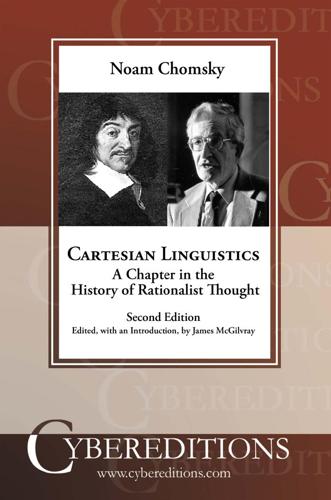
Cartesian Linguistics
by
Noam Chomsky
Published 1 Jan 1966
We may say even 96 Acquisition and Use of Language that it already possesses those truths, if we consider them as the relations of the ideas” (§26).111 Of course, what is latent in the mind in this sense may often require appropriate external stimulation before it becomes active, and many of the innate principles that determine the nature of thought and experience may well be applied quite unconsciously. This Leibniz emphasizes, in particular, throughout his Nouveaux Essais. That the principles of language and natural logic are known unconsciously112 and that they are in large measure a precondition for language acquisition rather than a matter of “institution” or “training” is the general presupposition of Cartesian linguistics.113 When Cordemoy, for example, considers language acquisition (op. cit., pp. 40ff.), he discusses the role of instruction and conditioning of a sort, but he also notices that much of what children know is acquired quite apart from any explicit instruction,114 and he concludes that language learning presupposes possession of “wholly developed reason [la raison toute entiere] for indeed this way of learning to speak is the result of discernment so great and reason so perfect that it is impossible to conceive of any more marvelous” (p. 59).
…
He mentions Immanuel Kant in particular. It is perhaps significant that the Cambridge Platonists had more to say about the scientific issues of language acquisition that Chomsky discusses than Kant, who was primarily interested in epistemological issues and had little to say that could be seen as anticipating Chomsky’s ‘biologizing’ of language.] See also Chomsky, Explanatory Models in Linguistics, and Katz, Philosophy of Language, for discussion of an essentially rationalist approach to the problem of language acquisition and of the inadequacy of empiricist alternatives. In the same connection, see Lenneberg, op. cit. and Biological Foundations of Language (New York: John Wiley, 1967), and §VI of The Structure of Language: Readings in the Philosophy of Language, ed.
…
Similarly, Chomsky claims, we must assume that children know a great deal about language before being put in the presence of other speakers, since otherwise they could not quickly and without effort come to display the rich and intricate knowledge that having a language involves. The linguist’s task is much more complicated and difficult than Plato’s. Solving Plato’s problem for language acquisition involves saying both what is known when one knows a language and how one comes to know it, and doing this with a science of the mind, not philosophical speculation. It is clear that answering the what question is going to be very difficult. Only a few concepts are involved in the Pythagorean Theorem; no matter what language one speaks, they are the same; and they had been identified and well articulated by Plato’s time.

Cognitive Gadgets: The Cultural Evolution of Thinking
by
Cecilia Heyes
Published 15 Apr 2018
It is certainly not easy, but Chomsky (1965) provided an important clue when he argued that language learning must be guided by genetically inherited knowledge of grammar, a “language acquisition device,” because there is “poverty of the stimulus.” In other words, children could not learn grammar exclusively from their environments because those environments do not provide enough information of the right kinds. The information provided by what others say, and by feedback on the child’s efforts to speak, is too incomplete, or “poor,” to explain how children master the grammar of their native languages. The merits of this particular argument, with respect to a genetically inherited language acquisition device, will be discussed in Chapter 8.
…
Third, universals: structuralism attributes commonalities across languages to inborn language-specific information, whereas functionalism assumes that, insofar as linguistic universals exist, they arise from the fact that all humans have the same domain-general cognitive resources, communicative purposes, and channels of communication. Fourth, development: structuralism assumes that the ontogeny of language is the unfolding of a genetic blueprint, or that it is guided by psychological processes dedicated to language learning—a “language acquisition device.” In contrast, functionalism assumes that language acquisition depends on domain-general cognitive processes guided by linguistic and nonlinguistic input from other agents. At least two cultural evolutionary accounts of the origins of language have been developed from functional linguistics, one by Tomasello (2003) and the other by Christiansen and Chater (2016).
…
No one doubts that a wide range of genetically inherited resources are needed for language learning, including memory capacity, domain-general perceptual and motor skills, and dedicated vocal apparatus. What is distinctive about genetic accounts is their commitment to the idea that the genetic resources supporting language acquisition include information about the abstract structure of language; about features of grammar that, they claim, all languages have in common. Views about the content of this language-specific, genetically inherited information have changed radically over time, and there continues to be a wide range of opinion.

Babel No More: The Search for the World's Most Extraordinary Language Learners
by
Michael Erard
Published 10 Jan 2012
Raupach (eds.), Interlingual Processes (Tübingen: Narr, 1989), 5–16. 164 his answer was a resolute yes: Peter Skehan, A Cognitive Approach to Language Learning (Oxford, UK: Oxford University Press, 1998), 211. 164 They “would have a high range of lexicalized exemplars”: Ibid., 250. 164 “do not seem to have unusual abilities with respect to input or central processing”: Ibid., 233. 165 part of the memory system that remembers facts and words, and which remains robust as one ages: This paragraph draws from Michael Ullmann’s Declarative/Procedural Model, described in “A Cognitive Neuroscience Perspective on Second Language Acquisition: The Declarative/Procedural Model,” in Cristina Sanz (ed.), Mind and Context in Adult Second Language Acquisition: Methods, Theory, and Practice (Washington, DC: Georgetown University Press, 2006), 141–78. His account contains many intriguing possibilities for understanding individual variations that might explain very high levels of language abilities, including gender differences and seasonal/hormonal effects, as well as chemical interventions for enhancing procedural and declarative memories. 165 they just have declarative memories with a lot of capacity: One possibility might be that language accumulators choose certain languages to compensate for relative limitations of procedural memory.
…
On his way to tracking down the one man who could be called the most linguistically talented person in the world, Erard meets other living language-superlearners. Among them is Alexander, a modern-day polyglot with dozens of languages who shows him the tricks of the trade and gives him a dark glimpse into the life of obsessive language acquisition. “I came to consider him as a holy man,” writes Erard. “Others do yoga; Alexander does grammatical exercises.” With his ambitious examination of what language is, where it lives in the brain, and the cultural implications of polyglots’ pursuits, Erard explores the upper limits of our ability to learn and to use languages, and illuminates the intellectual potential in everyone.
…
Of course, the more languages you have in your life, the more enriched your experiences are, but keeping them all up requires more travel and contact than most people can do. So I would say that people could do, at the utmost, four or five languages.” I also asked Robert DeKeyser, an expert in language acquisition at the University of Maryland, what he thought about the stories of Mezzofanti. “If you have a good memory and you’re motivated, then learning enough vocabulary in a dozen languages is not a feat at all. The reason more people don’t do so is that very few people are motivated to do so,” DeKeyser said.
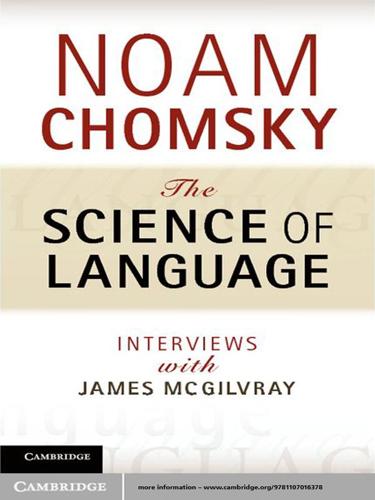
The Science of Language
by
Noam Chomsky
Published 24 Feb 2012
Well, this framework – format, instantiation, simplicity measure, evaluation – that framework lasted pretty much through the seventies, and it did raise serious conceptual barriers to trying to find out what's distinctive about language – what's the third factor, so that we can assign it to something else, and the residue will be what's distinctive about language. It's just a barrier: you could raise the question, and pursue it to an extent, but not too much. That's where the principles and parameters approach was important; it separated the question of language acquisition from the question of the format. Language acquisition under this point of view was a matter of setting the values of parameters, and the format for Universal Grammar no longer has to meet the condition that it is so restrictive and so highly articulated that it leads to a small number of choices only and therefore makes the computational task tractable.
…
Most linguists, and social scientists in general, are so data-oriented that they find it scandalous to accept [methodological] principles that really ought to be obvious – for example, the idea [see Chomsky 1986 and the introduction to Chomsky 1980/2005] that you should try to study language acquisition in a pure case, uncontaminated by the innumerable factors that actually enter – your parents speak one language, and the kids on the street speak another. That's obviously going to have all kinds of complicated effects on language acquisition. But if you really want to find the principles of language, you have to abstract away from that. That's why scientists do experiments. Galileo had to fight this battle, one that you would hope would have been over by now.
…
The physical reasons for that are understood, so you don't need selectional reasons. The question is, how far does it go? The basic questions of what is specific to language really have to do with issues that go beyond those of explanatory adequacy [that is, with dealing with Plato's Problem, or explaining the poverty of the stimulus facts for language acquisition]. So if you could achieve explanatory adequacy – if you could say, “Here's Universal Grammar [UG], feed experience into it, and you get an I-language” – that's a start in the biology of language, but it's only a start.[C] The next step would be, well, why does UG have the properties that it has?

On Language: Chomsky's Classic Works Language and Responsibility and Reflections on Language in One Volume
by
Noam Chomsky
and
Mitsou Ronat
Published 26 Jul 2011
See also cognitive structures and systems; philosophy of knowledge Köhler, Wolfgang, 47 Kolko, Gabriel, 15, 19 Korean language, 186 Kripke, Saul, 72 Ku Klux Klan, 27 Kuhn, Thomas, 73 Labov, William, 53–56 Lakatós, Imre, 73 Lakoff, George, 148, 150, 154, 189; “Generative Semantics,” 150 Langages, 154 language, 48, 51; artificial, 70; as aspect of human nature, 77, 95–96; behavioral analogue, 69; biology of, 94, 98, 133; as cognitive system, 83, 165; creative aspect of, 156; definition of, 190; discovery procedures, 114–16; explanatory theory, 106–7, 109–10, 111–12, 114, 122, 124, 131; facts of, 142, 166; functionalist view, 85–88; of the ghettos, see Black English; individual spoken, 54; infinity of forms, 64; “interesting” phenomena in, 59, 60–62; Markov source models, 125–26, 127, 129; as model of knowledge, 63–65; natural, 73, 105, 126, 166, 167; neurology of, 48, 53; perceptual influences on, 44–45, 84; and power, 191; psychological assumptions about, 50; Saussurean theory, 50, 51, 97–98; social interaction analogue, 69–70; of Stone Age man, 55; structuralist view, 76–77; structure of, 167; uses of, 87–88; word order, 193. See also grammar; language acquisition; language use; linguistic theory; linguistics; syntactic structure Language, 46, 113, 122, 133 language acquisition, 43, 44, 50, 113, 114, 117, 124, 180; and autonomy of syntax, 138–9; boundary conditions, 111–12, 116, 117; critical age for, 98; discovery procedures, 114–16; empirical view, 85; functionalist view, 86–87; and generative semantics, 148; mechanism of, 98.
…
Why are many psychologists reluctant to consider richer and more abstract models of competence? Many linguists too, for the matter. In my opinion, because they are still under the influence of empiricist doctrines that are restricted in principle to quite elementary models of competence. These doctrines maintain that all learning, including language acquisition, proceeds by the accumulation of specific items, by the development of associations, by generalization along certain stimulus dimensions, by abstracting certain properties from a complex of properties. If this is the case, the models of competence are so trivial that it is possible to ignore them. .
…
If they mean that ontogenetic development is directed by functional considerations, that seems just as plausible to me as suggesting that the development of the heart in the individual is guided by the utility of having an organ that pumps blood, and about as well supported by the factual evidence. Or, they might say that questions touching on the basis of language acquisition do not concern them. The crucial point, however, seems to me to be that there is no real debate about the validity of functionalism at the generally vague level on which we discuss the hypothetical evolution of the species, or in the study of language change; and there is no sensible way to invoke functional notions as explanatory concepts at the synchronic or ontogenetic level, so far as I can see.

Text Analytics With Python: A Practical Real-World Approach to Gaining Actionable Insights From Your Data
by
Dipanjan Sarkar
Published 1 Dec 2016
It is important to not only understand what natural language denotes but also how humans interpret, learn, and use the same language so that we are able to emulate some of these concepts programmatically in our algorithms and techniques when we try to extract insights from textual data. Language Acquisition and Cognitive Learning Language acquisition is defined as the process by which human beings utilize their cognitive abilities, knowledge, and experience to understand language based on hearing and perception and start using it in terms of words, phrases, and sentences to communicate with other human beings. In simple terms, the ability of acquiring and producing languages is language acquisition. The history of language acquisition dates back centuries. Philosophers and scholars have tried to reason and understand the origins of language acquisition and came up with several theories, such as language being a god-gifted ability that is passed down from generation to generation.
…
Consequently, Chomsky proposed that children must not only be imitating words they hear but also extracting patterns, syntax, and rules from the same language constructs, which is separate from just utilizing generic cognitive abilities based on behavior. Considering Chomsky’s view, cognitive abilities along with language-specific knowledge and abilities like syntax, semantics, concepts of parts of speech, and grammar together form what he termed a language acquisition device that enabled humans to have the ability of language acquisition. Besides cognitive abilities, what is unique and important in language learning is the syntax of the language itself, which can be emphasized in his famous sentence Colorless green ideas sleep furiously. If you observe the sentence and repeat it many times, it does not make sense.
…
Last, but never least, a big thank you to the entire team at Apress, especially to Celestin Suresh John, Sanchita Mandal, and Laura Berendson for giving me this wonderful opportunity to share my experience and what I’ve learned with the community and for guiding me and working tirelessly behind the scenes to make great things happen! Contents Chapter 1: Natural Language Basics Natural Language What Is Natural Language? The Philosophy of Language Language Acquisition and Usage Linguistics Language Syntax and Structure Words Phrases Clauses Grammar Word Order Typology Language Semantics Lexical Semantic Relations Semantic Networks and Models Representation of Semantics Text Corpora Corpora Annotation and Utilities Popular Corpora Accessing Text Corpora Natural Language Processing Machine Translation Speech Recognition Systems Question Answering Systems Contextual Recognition and Resolution Text Summarization Text Categorization Text Analytics Summary Chapter 2: Python Refresher Getting to Know Python The Zen of Python Applications: When Should You Use Python?

The Stuff of Thought: Language as a Window Into Human Nature
by
Steven Pinker
Published 10 Sep 2007
There is no verb that allows one to talk about covering a board by pinning posters onto it in the container-locative construction. The verb-learnability paradox has attracted attention for another reason. About halfway down our plunge from a wide view of the human mind to the acquisition of locative constructions, I said that language acquisition is an example of the problem of induction—making valid generalizations about the future from limited data available in the present, whether they involve language acquisition by a child, learning by a computer, or theorizing by the scientist. The pickle we find ourselves in is common to induction of all kinds: how to back off from an overly general hypothesis in the absence of negative data.32 If you frame a conclusion too broadly, and don’t have complete corrective feedback from the world (say, you grow up thinking all swans are white, and never get to New Zealand, where you’d see black swans), you are in danger of never finding out that you are wrong.
…
Georgetown Law Journal, 75, 395—422. Bowdle, B., & Gentner, D. 2005. The career Of metaphor. Psychological Review, 112, 193—216. Bowerman, M. 1982a. Evaluating competing linguistic models with language acquisition data: Implications Of developmental errors with causative verbs. Quaderni di Semantica, 3, 5—66. Bowerman, M. 1982b. Reorganizational processes in lexical and syntactic development. In E. Wanner & L. R. Gleitman (Eds.), Language acquisition: The state of the art. New York: Cambridge University Press. Bowerman, M. 1983. Hidden meanings: The role Of covert conceptual structures in children’s development Of language.
…
C. T., & Parkes, S. 1980. Against definitions. Cognition, 8, 263—367. Fodor, J. A., & Pylyshyn, Z. 1988. Connectionism and cognitive architecture: A critical analysis. Cognition, 28, 3—71. Fodor, J. D., & Crain, S. 1987. Simplicity and generality Of rules in language acquisition. In B. MacWhinney (Ed.), Mechanisms of language acquisition. Mahwah, N.J.: Erlbaum. Foley, W. A., & Van Valin, R. D. 1985. Information packaging in the clause. In T. Shopen (Ed.), Language typology and syntactic description I: Clause structure. New York: Cambridge University Press. Foot, P. 1978. Virtues and vices and other essays in moral philosophy.

Learn German: Step by Step Guide For Learning The Basics of The German Language
by
Dave Smith
Published 14 Sep 2018
Becoming a Polyglot Learning a second language is a useful feat, multiplying vocabulary and improving communication skills in one’s native language. Learning languages beyond the second, however, has surprisingly been shown to be easier than it is the first time around. This is especially true for children; they are nature’s greatest linguists. Once the neural networks involved in the process of new language acquisition have been primed, it is much easier for people to pick up more and more words from more and more obscure vernaculars. 8. A Major Boost of Confidence At least as far as Americans are concerned, multilingualism is tantamount regality, and those who can display the skill have been shown to receive massive gains of social currency.
…
Learning and speaking a second language also provides opportunity to learn about other cultures from people with potential first-hand experience with the given culture, German in this case. The benefits of practicing a foreign language far outweigh the costs under virtually any given circumstances. Speaking a foreign language with others can streamline so much of the learning process. It can undermine so much of the complexity and nuance involved in language acquisition, and in a way that won’t jeopardize educational value or accuracy, depending on the person being spoken to. Even speaking with one person who knows German or any other foreign language can expose the student to the entirety of that person’s vernacular. The speech can be absorbed and digested naturally.
…
It could also be added that learning from a native speaker can imbue the student with some of the education that the speaker has received, in a way giving the student a formal education by proxy. While constant studying effort and rote memorization are important factors in learning a new language, the two take on subordinate roles to what is said to the student and what the student reads. These two are the most important factors in new language acquisition. They work together to supply a more useful comprehensible input than other methods of learning do. As the student receives more and more comprehensible input through reading and listening to the language, it becomes easier and easier to absorb more of the vocabulary and grammar of the second language.
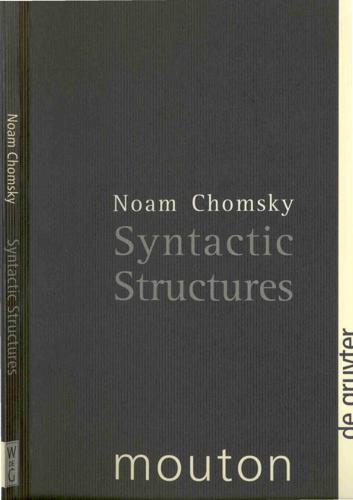
Syntactic Structures
by
Noam Chomsky
Published 17 Oct 2008
(LSLT, II) The language learner (analogously, the linguist) approaches the problem of language acquisition (grammar construction) with a schematism that determines in advance the general properties of human language and the general properties of the grammars that may be constructed to account for linguistic phenomena. (LSLT, 12) XIV Introduction by David W. Lightfoot We thus have two variants of the fundamental problem of linguistics, as it was conceived in this work: under the methodological interpretation, the problem is taken to be the justification of grammars; under the psychologi cal interpretation, the problem is to account for language acquisition ... Under the methodogical interpretation, the selected grammar is the lin guist's grammar, justified by the theory.
…
The easy translation is the reason that the little book, having no discussion of matters of cognition, is nonetheless plausibly seen as the snowball which started it all. The discussion about the goals of linguistic theory, for example, were straightfor wardly translated point-for-point into criteria for a theory of language acquisition by children: the theory provides an evaluation metric by which children rate the success of candidate grammars for the purposes of understanding some finite corpus of data embodied in their initial linguistic experiences, converging ultimately on the most successful grammar. Before he wrote the introduction to LSLT, Chomsky had come to view grammars as representations of fundamental aspects of the knowledge possessed by a speaker-hearer, i.e. as claims about psychol ogy (LSLT, 5).
…
We have learned a vast amount about many languages and we have learned different kinds of things: generativists adopting the biological, cognitive per spective have focused on where generalizations break down, because that reveals poverty-of-stimulus problems which illustrate information conveyed by the linguistic genotype, UG (see The Lin guistic Review 19.1, 2002, for extensive discussion of the role of poverty-of-stimulus arguments). The avalanche has also given rise to new kinds of studies of language acquisition by young children, new experimental tech niques, explorations of language use in various domains, new com puter models, new approaches to language history, all shaped by the core notion of a language organ. It has also spawned new approaches to old philosophical questions, notions of meaning and reference, and Chomsky has taken the lead in this area (for example, Chomsky 2000).
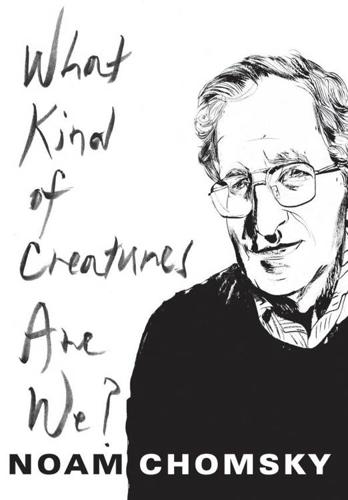
What Kind of Creatures Are We? (Columbia Themes in Philosophy)
by
Noam Chomsky
Published 7 Dec 2015
There is evidence that the auditory system of chimpanzees might be fairly well adapted for human speech,17 though apes cannot even take the first step in language acquisition, extracting language-relevant data from the “blooming, buzzing confusion” surrounding them, as human infants do at once, reflexively, not a slight achievement. And though capacity to control the vocal tract for speech appears to be human-specific, that fact cannot bear too much weight given that production of human language is modality-independent, as recent work on sign language has established, and there is little reason to doubt that apes have adequate gestural capacities. Evidently much deeper cognitive properties are involved in language acquisition and design.
…
Peirce’s concept of abduction is sometimes glossed as inference to the best explanation, but though undeveloped, the concept goes well beyond that. Crucially, Peirce insisted on limits of “admissible hypotheses,” which he took to be quite narrow, a prerequisite for “imagining correct theories.” He was concerned with growth of scientific knowledge, but the same holds for acquisition of commonsense understanding, of language acquisition in particular.3 The same should be expected to be true even of the questions that we can formulate; innate structure provides a rich variety of formulable questions, while barring others that some different mind might recognize to be the right ones to ask. I also cited the somewhat similar ideas of Hume, who recognized that just as for “beasts,” so “the greater part of human knowledge” depends on “a species of natural instincts,” which “derive from the original hand of nature”—in our terms, genetic endowment.
…
It is difficult to see how one can avoid the conclusion that these intricate structures depend on “innate cognoscitive powers” of the kinds explored in interesting ways in the “first cognitive revolution” of the seventeenth century. Intricacies mount rapidly when we proceed beyond the simple elements used to refer, reinforcing the conclusion that innate properties of the mind play a critical role in their acquisition and use. Such considerations seem impossible to reconcile with familiar views of language acquisition as based on ostension, instruction, and habit formation; or with what Dagfinn Føllesdal, in his penetrating study of Quine’s theory of meaning, calls the “MMM thesis: The meaning of a linguistic expression is the joint product of all the evidence that helps learners and users of the language determine that meaning.”29 In an appreciative comment, Quine endorses Føllesdal’s interpretation but with a crucial modification, stating that “what matters is just that linguistic meaning is a function of observable behavior in observable circumstances.”

NurtureShock: New Thinking About Children
by
Po Bronson
and
Ashley Merryman
Published 2 Sep 2008
But there’s another reason—a more powerful reason—why language learning can’t be left to DVDs. Video programming can’t interact with the baby, responding to the sounds she makes. Why this is so important requires careful explanation. Wondering what parents’ prevailing assumptions about language acquisition were, we polled some parents, asking them why they thought one kid picked up language far faster than another. Specifically, we were asking about two typically-developing kids, without hearing or speech impairments. Most parents admitted they didn’t know, but they had absorbed a little information here and there to inform their guesses.
…
By their third birthday, children of professional parents had spoken vocabularies of 1,100 words, on average, while the children of welfare families were less than half as articulate—speaking only 525 words, on average. The complexity, variety, and sheer amount of language a child hears is certainly one driver of language acquisition. But it’s not scientifically clear that merely hearing lots of language is the crucial, dominant factor. For their part, Hart and Risley wrote pages listing many other variables at play, all of which had correlations with the resulting rate at which the children learned to speak. In addition, the words in the English language that children hear most often are words like “was,” “of,” “that,” “in,” and “some”—these are termed “closed class” words.
…
Therefore, he deduced that infants must be born with “deep structure,” some underlying sense of syntax and grammar. By the 1980s, Chomsky was the most quoted living scholar in all of academia, and remained at the top through the millennium. However, in the intervening decades, each step of language acquisition has been partially decoded and, in turn, dramatically demystified. Rather than language arising from some innate template, each step of language learning seems to be a function of auditory and visual inputs, contingent responses, and intuitive scaffolding, all of which steer the child’s attention to the relevant pattern.

Noam Chomsky: A Life of Dissent
by
Robert F. Barsky
Published 2 Feb 1997
The lessons of the near and far past, from McCarthyism to the first stone thrown at the first outsider, were clear to anyone: blend in; use the time allotted to establish scholarly credentials; hide in the mainstream. (135) Chomsky would not adopt these tactics for academic survival, and, as a consequence, he was denigrated by the organs of mainstream propaganda, ostracized or ignored, and scrutinized on all fronts. Language Acquisition in the Animal World In the mid- to late 1970s, linguists seemed, at least publicly, fascinated by language acquisition. Chomsky was no exception, and applied himself to distinguishing between animals and humans by means of his theory of innate language ability. A 25 September 1975 New York Times article, "Experts Labor to Communicate on Animal Talk," outlined the basic issues involved and brought them into the public domain.
…
file:///D|/export3/www.netlibrary.com/nlreader/nlreader.dll@bookid=9296&filename=page_109.html [4/16/2007 3:20:32 PM] Document Page 110 It is rather startling to compare this kind of reflection with the behaviorist and structuralist approach that dominated the field during this time. Here is Humboldt on language acquisition: "Everyone when he learns a language, most notably children who create far more than they memorize, proceeds by darkly felt analogies which allow him to enter the language actively, as it were, instead of just receptively" (Humanist 243). On the relationship of language to the functions of the mind: "The mutual interdependence of thought and word illuminates clearly the truth that languages are not really means for representing already known truths but are rather instruments for discovering previously unrecognized ones" (Humanist 246).
…
Such studiesof common forms of language, of general grammars, and of the conditions that prescribe the forms of human languagebuild on work undertaken by Cartesian linguists, and, in the process, acknowledge "the quite obvious fact that the speaker of a language knows a great deal that he has not learned" (Chomsky, Language and Responsibility 60). Making reference to the work of Herbert de Cherbury, and then to works by Descartes, the English Platonists, Leibniz, Kant, and the Romanticsnotably Schlegel and HumboldtChomsky takes a fresh look at "the preconditions for language acquisition and at the perceptual function of abstract systems of internalized rules" in order to demonstrate the ways in which contemporary linguistic studies were file:///D|/export3/www.netlibrary.com/nlreader/nlreader.dll@bookid=9296&filename=page_111.html [4/16/2007 3:20:34 PM] Document Page 112 "foreshadowed or even explicitly formulated in earlier and now largely forgotten studies" (Language and Responsibility 73).

Who’s Raising the Kids?: Big Tech, Big Business, and the Lives of Children
by
Susan Linn
Published 12 Sep 2022
Research suggests, however, that just as there is a digital divide, there are also divides that are at least exacerbated by the marketing myth that tech is an adequate educational substitute for human interactions and hands-on experiences with the world. Take language acquisition, for instance. By the time children begin kindergarten, there are huge discrepancies in the number of words they know. The disparity in children’s language acquisition appears to be present as early as eighteen months and can affect how well kids do in school—including in fundamentals like math and literacy.27 What makes the difference? Language acquisition is inherently social.28 From infancy, children’s vocabulary and verbal fluency is linked to how much exposure they have to language.
…
For babies to learn language, however—and this is important—it has to be generated by people, not by machines.29 That’s why the American Speech-Language-Hearing Association encourages parents and caregivers to talk, read, and sing to and with children starting from infancy.30 That’s also why our own tech use around infants and toddlers can interfere with language acquisition. When parents or caregivers are on smartphones, they speak less to their babies.31 And, particularly for infants and toddlers, more time with screens of all kinds is associated with diminished language development,32 even when the apps or videos in use claim to build vocabulary. In actuality, scant evidence exists that using technologies to teach babies language, or much of anything else, is effective.
…
Parents talk less to children when they read enhanced e-books and play with electronic toys together.24 The flourishes e-books can bring to text—images that move and talk when tapped or swiped—and the noises generated from electronic toys fill silences that might otherwise be filled with parents and kids talking together. While this reduced conversation is often cited as a concern about decreasing language acquisition, it’s also another example of how devices come between parents and children. We often cuddle with young children when we read books to them. The combination of physical intimacy and shared experience is calming for both parents and children and can be a springboard for wide-ranging conversations that strengthen our connection.

Powers and Prospects
by
Noam Chomsky
Published 16 Sep 2015
Then it should be possible literally to deduce Hungarian or Swahili or any other possible human language by setting the values of the parameters one way or another. And the process of language acquisition would be just the process of fixing those parameters—finding out the answers to a specific ‘list of questions’, in effect. It must be that these questions are readily answered, given the empirical conditions on language acquisition. A large part of the empirical study of language acquisition in varied languages has been framed in these terms in recent years, with encouraging progress, and plenty of new dilemmas. If all of this turns out to be on the right track, it will follow that languages are learnable—a non-obvious conclusion, as noted.
…
That is, its essential properties do not seem to be found in other organisms, perhaps even elsewhere in the organic world. The language faculty changes from its initial state during early life, as do other biological systems. It ‘grows’ from the initial state through childhood, reaching a relatively steady state at some stage of maturation. This is the process of language acquisition, sometimes misleadingly called ‘language learning’; the process seems to bear little resemblance to what is called ‘learning’. It seems that growth levels off before puberty, perhaps as early as six to eight, some investigators believe. After the system stabilises, changes still take place, but they seem to be at the margins: acquisition of new words, social conventions of usage, and so on.
…
The parser for Japanese is the same as for English. The reason for this rather implausible assumption is that we do not know that it is wrong. In a situation of ignorance, one begins with the simplest assumption, expecting it to be disproven as more is learned. On these assumptions, the changes that take place during language acquisition are in the cognitive state alone; in the ‘storage of information’, the language, the generative procedure that distinguishes English from Japanese. A third assumption is that the parser works very efficiently: parsing is ‘easy and quick’, according to a slogan that has motivated a good deal of research seeking to show that language design yields this result.

These Strange New Minds: How AI Learned to Talk and What It Means
by
Christopher Summerfield
Published 11 Mar 2025
Humanlike natural language generation thus only seems to be possible with quite niche computations, which is probably why it took AI researchers the best part of seven decades – from the earliest symbolic models in the 1950s to the massive GPTs of the 2020s – to work out how to generate it. Secondly, Chomsky argued that human infants are born with an innate ability to learn language, conferred by the fabled ‘language acquisition device’. Although he never details how this device might work, Chomsky offers compelling arguments for the innateness of language acquisition in humans. For one thing, humans and humans alone seem able to learn language, whereas Koko and Nim never got past the gimme orange stage. For another, our urge to speak in sentences is incredibly powerful, and propels every single child to learn structured forms of communication, even if (like those twins in Wales) they make up the syntax themselves.
…
NLP researchers tend to have eclectic interests, and the subfield has worked on projects as diverse as text sentiment classification (e.g., judging whether a hotel review is positive or negative), machine translation, and question answering. But the ultimate goal of NLP is to translate our premium biological feat – language acquisition – into computer code. Researchers hope to build a system that can generate fluent and coherent prose, answer questions accurately, and engage in sensible dialogue. This was, of course, the gauntlet that Turing flung down with his famous Imitation Game – could a computer ever successfully disguise itself as a human by generating plausible conversation?
…
Unlike Nim or Washoe or Koko, children can usually speak in fluent sentences by the age of three, irrespective of whether they hear an average of 200 or 20,000 words per day from their adult carers. Chomsky and his many acolytes believe that the only explanation for this observation is that human brains have evolved a ‘language acquisition device’, a special neural mechanism other species lack, forever debarring them from the unparalleled delights offered by rhyming couplets and witty banter. As Chomsky bluntly put it: ‘If you have arms, you can’t learn wings.’ By the 1970s, as bell-bottoms and free love reigned, many saw this claim as being in serious jeopardy.
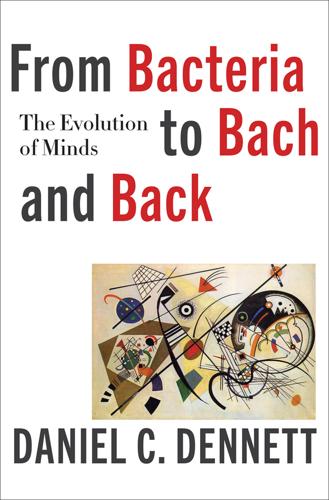
From Bacteria to Bach and Back: The Evolution of Minds
by
Daniel C. Dennett
Published 7 Feb 2017
“what for” questions in, 267–68, 270 imitation in, 251 instinct for cooperation and, 251–52 just-so stories and, 248, 265 as key invention in expansion of cognition, 260, 373–74 mating displays and, 266 natural selection in, 251–52, 262, 292 possible multiple, 179–80 prelinguistic cultural transmission in, 251 prerequisite competences for, 254 productivity and, 250, 267–68 as product of both biological and cultural evolution, 281 proto-linguistic phenomena in, 265–66 recursion in, 277–81 thresholds in, 264–65 see also words, origins of Language, Thought and Other Biological Categories (Millikan), 187 language acquisition, 389 as bottom-up process, 193, 274 by infants and children, 190–204, 273, 274, 275, 276–77, 286, 294–95 paradox of, 275 Language Acquisition Device (LAD), 187, 194, 276–77, 279, 281 “Language as Shaped by the Brain” (Christiansen and Chater), 279n languages: anastomosis (merging) of, 180 combinatorial units in, 275–76 communication and, 191, 250, 253, 263, 267, 270, 286, 291–92, 295 descent trees of, 180, 181, 182 displaced reference in, 262, 264 as dominant in medium of cultural evolution, 226 evolution of, 176–82, 187–90, 207 grammar, in see grammar morphosyntax of, 267 noun/verb distinctions in, 270 phonemes in, see phonemes possible syntactic constraints on, 195–96 presumption of comprehension in, 315 “rule book” for, 70 topic/comment distinctions in, 270 as transmitter of information, 96 variations in complexity of, 270–72 written, see writing see also words La Sagrada Familia, Barcelona, 51, 59, 77 Lascaux cave paintings, 253 latent semantic analysis, 394 law of patents and copyrights, 228, 323 learning: affordances and, 165–66 Baldwin Effect and, 196, 257 Bayesian thinking and, 169 design improvement and, 115, 123, 126 nonhuman, 300 origins of, 331 see also semantic information, extraction of Leibniz, Gottfried Wilhelm, 29–30 Leipzig, 326 Lenat, Douglas, 73n Levin, Michael, 131–32 Levitin, Daniel, 235–36 Lewontin, Richard, 29–30, 32 lexical items, 206, 250 Library of Babel, 320–21, 322 Lieberman, Matthew, 344 life: energy capture in, 6, 27, 29, 115, 145, 150 self-maintenance in, 6, 18, 26 life, origins of, 6–8, 120, 145–46, 145, 147, 285 Darwinian Spaces for, 145 minimum requirements for, 26–27 possible multiple occurrances of, 179–80 reverse engineering of, 28–29 light, information transmitted by, 119–20 Linguistic Society of Paris, 248–49 literature, token/type distinction in, 227 loci, of memes, 235–37 Lucretius, 62 Lycan, William G., 161 MacCready, Paul, 8–9, 87 MacCready Explosion, 8–9, 87, 301 machine learning, see deep learning machines: communication between, 66 self-monitoring of, see self-monitoring, of machines MacKay, D.
…
The version of Microsoft Word currently installed on your laptop is one token, but when we talk about Microsoft Word—even Microsoft Word 14.4.1—we generally mean the type, not the token. The idea that words have evolved by natural selection was obvious to Darwin, and one would think that Noam Chomsky, who pioneered the idea of an innate Language Acquisition Device in the brain, would look with favor on evolutionary accounts of how languages in general, and words in particular, came to have their remarkable features, but he has disparaged evolutionary thinking in linguistics in almost all regards (more on this in chapter 12). Following Chomsky, many linguists and philosophers of language have staunchly resisted evolutionary thinking, with a few notable exceptions.
…
This bald assertion, in the face of all the known complexities of the semantics and syntax of natural languages, may strike theoretical linguists as irresponsibly speculative, but consider how modest a claim it makes: phonology comes first, creating a node or focus in the brain for the auditory signature of the word, and then this becomes the basis, the anchor or collection point, for the semantics and syntax to develop around the sound, along with its articulatory profile—how to say it. I’m not taking sides in the controversies, even where I have convictions; I have more than enough to defend without defending a verdict on how much bias, how much “Universal Grammar,” as the Chomskyans say, must be genetically installed in the “Language Acquisition Device” nor do I stipulate in any way what form this biasing must or might take. One way or another, without deliberate (let alone conscious) “theory construction” of any kind, the infant brain homes in on habits that it will share with its parents, responding sensitively to semantic information present to its senses.52 Today, the installation of a native language in a human infant is a well-designed process, benefiting, no doubt, from the selective impacts on thousands of generations of human-language learners.
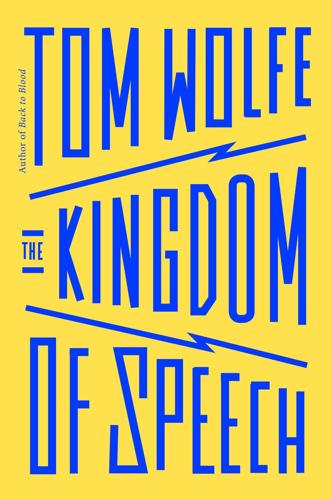
The Kingdom of Speech
by
Tom Wolfe
Published 30 Aug 2016
It is functioning the moment you come into the world, just the way your heart and your kidneys are already pumping and filtering and excreting away.85 To Chomsky, it didn’t matter what a child’s first language was. Whatever it was, every child’s language organ could use the “deep structure,” “universal grammar,” and “language acquisition device” he was born with to express what he had to say, no matter whether it came out of his mouth in English or Urdu or Nagamese. That was why—as Chomsky said repeatedly—children started speaking so early in life…and so correctly in terms of grammar. They were born with the language organ in place and the power ON.
…
The “organ”…the “deep structure”…the “universal grammar”…the “device”—as Chomsky explained it, the system was physical, empirical, organic, biological. The power of the language organ sent the universal grammar coursing through the deep structure’s lingual ducts to provide nutrition for the LAD, which everybody in the field now knew referred to the “language acquisition device” Chomsky had discovered.86 Two years later, in 1957, when he was twenty-eight, Chomsky pulled all this together in a book with the opaque title Syntactic Structures—and was on the way to becoming the biggest name in the 150-year history of linguistics. He drove the discipline indoors and turned it upside down.
…
But this article was an affront aimed straight at him, by name, harping on two points: first, this particular tiny language, Pirahã, had no recursion, none at all, immediately reducing Chomsky’s law to just another feature found mainly in Western languages; and second, it was the Pirahã’s own distinctive culture, their unique ways of living, that shaped the language—not any “language organ,” not any “universal grammar” or “deep structure” or “language acquisition device” that Chomsky said all languages had in common. It was unbelievable, this attack!—because Chomsky remembered the author, Daniel L. Everett, very well. At least twenty years earlier, in the 1980s, Everett had been a visiting scholar at MIT after working toward an ScD in linguistics from Brazil’s University of Campinas (Universidade Estadual de Campinas).

Bastard Tongues: A Trailblazing Linguist Finds Clues to Our Common Humanity in the World's Lowliest Languages
by
Derek Bickerton
Published 4 Mar 2008
Creole: a full language that emerges when children acquire a pidgin as their native language. creolization: any process through which a Creole is formed. decreolization: the process through which a Creole, when spoken alongside its superstrate, loses typically Creole features and . replaces them with superstrate features. diffusion: any means by which a language gets from one place to another. . diffusionism: the belief that Creoles were created in places other than where they are now spoken and subsequently spread . there; ·ist: one who holds this belief. epenthetic vowel: a vowel inserted between adjacent consonants or at the end of words ending with a consonant in order to preserve consonant-vowel syllable structure. generative grammar: the systematic theory of syntax originally developed by Noam Chomsky and taken by him through several mutations; generativist: one who believes in generative grammar. haole: in Hawaii, any person of Caucasian origins (see bakra). implicational scaling: a method for sorting data that displays in logical order the various varieties of a language. irrealis: a modality that expresses actions that have not taken place (covers the same ground as "future" + "conditional" in traditional grammars). irrealis marker: a particle indicating that the following verb expresses irrealis modality. LAD: abbreviation for "language acquisition device." language acquisition device: a mental organ hypotheSized by Chomsky without which children would be unable to learn a language. language bioprogratn:- the biological program for language that underlies the similarities between various Creoles and the human language faculty generally. lexiner: a language that supplies words for a Creole language. locative: anything indicative of where something happens. macaronic: involving a mixture of words from several languages. main lexiner: see superstrate. marker: a particle or affix that expresses a semantic (e.g., tense) or a grammatical (e.g., case) relationship. maroon: a member of a community of escaped slaves, or the descendants of these (from Spanish cimarr6n, "wild").
…
And this, when you considered the relative mental powers of adults and small children, looked like the reverse of what it should be. Chomsky held that each child must be born with a language ac quisition device, usually shortened to LAD (some linguists, terri fied of looking sexist, suggested instead a language acquisition support system-LASS!). This LAD was a black-box mechanism that somehow enabled children to learn any language they were exposed to. But suppose that what they were exposed to wasn't a real language-was a chaotic mishmash like pidgin in Hawaii? If Creoles were produced by children from pidgin input, and if they were substantially similar wherever they were ptoduced, it could be that the LAD contained (or even consisted 00 a biologi cally based program, or "bioprogram" for short-something that would enable children receiving confused and/or inadequate lin guistic input to still create a full human language. 111 Why?
…
If you were going to run for it, the first year was the best, while you still remembered what liberty was like and hadn't been broken, physically and mentally, by years of grueling toiL The longer you left it, the less the chances you'd be able to pluck up the courage and the strength to make your run. Think what the consequences of that would have been in terms of language acquisition. Most slaves who escaped could have had at best a year or so of exposure to what must already have become an unstructured jar gon, an early-stage pidgin probably even more impoverished than the remnants I had found in Hawaii in the seventies. They would have come away with no more than a scattering of words, words drawn from a variety of languages, even' if the core remained En glish.
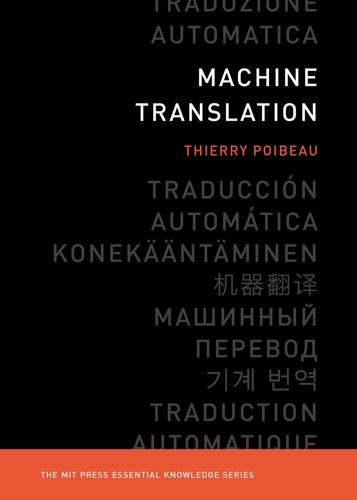
Machine Translation
by
Thierry Poibeau
Published 14 Sep 2017
See Interlingua Intermediate representation, 25–32, 63 Internet, 33, 93, 97, 98, 100, 102, 164, 166, 168–169, 172, 197, 227–233, 238, 242–243, 247–250 link, 98–99 Interpretation, 20, 201 Island of confidence, 102, 108, 150 Isolating language, 215–216 Israel, 60, 69 Japan, 44, 67, 86, 87, 109 Japanese, 11, 88, 117–118, 164–165, 192, 242 Jibbigo, 236 JRC-Acquis corpus, 97, 212–213, 223 Keyword, 92, 99, 238 Kilgarriff, Adam, 18 King, Gilbert, 76 Kircher, Athanasius, 41 Koehn, Philip, 136, 212–213 Korean, 88, 235–236 Language complexity (see Complexity) diversity, 1, 164–170 (see also typology) exposure (see Child language acquisition) family, 30, 106, 138, 172–174 independent representation (see Interlingua) learning (see Child language acquisition) model, 127, 140, 142, 144, 153, 185 proximity, 163 (see also family) typology, 138, 192 (see also family) universal, 56, 66, 67 (see also Universal language) Lavie, Alon, 206 Learning step (or learning phase). See Training step Legislative text, 95, 222.
…
While we are still far from perfect machine translation systems, it is nonetheless interesting to see that the best-performing systems now operate directly at sentence level, make limited use of manually defined syntactic or semantic knowledge, and produce translations on the fly based on huge quantities of data used for training. They thus seem to account for several characteristics of human language: for example, the fact that child language acquisition is based on language exposure (and not on the explicit learning of grammar rules); and the fact that word distribution and linguistic complexity play a role (some words are more frequent than others and are learned before others, and simpler syntactic structures are easier to acquire and easier to translate).
…
See Cognitive plausibility Breton, 172 Brown, Peter F., 126–144 Cambridge Language Research Unit, 66–67 Canada, 69, 84–85, 87, 223, 244 Canadian parliamentary debates. See Hansard corpus Carnap, Rudolf, 60 Case (linguistic), 18, 118, 214 Cell phone. See Mobile phone Centre d’Études sur la Traduction Automatique (CETA), 67–68, 84 Centre National de la Recherche Scientifique (CNRS), 67 Chandioux, John, 87 Child language acquisition, 255 China, 67, 86 Chinese, 56, 88, 163–165, 192, 209, 215, 228, 232, 250 Chomsky, Noam, 63, 65 Church, Kenneth, 105 Co-construction of meaning, 20 Cognate, 11, 107–108, 261 Cognitive plausibility, 20, 23, 178, 181–184, 187, 251–256 Cognitive sciences, 2. See also Cognitive plausibility Cold War, 49, 60 Colmerauer, Alain, 84 Combinatorial explosion, 182 Communication network, 249.

Fluent Forever: How to Learn Any Language Fast and Never Forget It
by
Gabriel Wyner
Published 4 Aug 2014
Then they just listen to their parents, flick a few switches on their language acquisition device (“Verb, then object?” “Object, then verb?”), and poof, they know which grammar they’re supposed to use. Other linguists will point out that Europeans have made most linguistic observations, and that they’ve overlooked the tremendous diversity of non-European languages. If only they looked closer, they’d find hundreds of languages that defy the standard grammatical patterns. To fit all of these languages, we’d need language acquisition devices preprogrammed with an enormous amount of information. Perhaps kids are just good at inferring patterns.
…
However, with regular plurals, the rules become totally rigid. “Rats-infested” just doesn’t exist in English. 2 If you ask linguists how kids do this, most of them will tell you about a language-learning machine hidden within the brain of every child: The inventor of the language machine theory, Noam Chomsky, calls it a “language acquisition device.” Chomsky’s device explains two phenomena: why kids are so good at learning grammar and why the grammar of every language is so weirdly similar. All seven thousand documented languages, for example, seem to possess subjects, verbs, and objects. And if a language puts its objects after its verbs (He eats fish), then that language will use prepositions (from the sea).
…
within your first few weeks of studying English, even though it contains would, the (difficult) English conditional form. Still, that doesn’t mean you’ll correctly spit out “would” in any other contexts until you’ve reached the proper developmental stage. 4 On average, adults learn languages faster than kids do: This fact blew my mind. Check out Ortega, Lourdes. Understanding Second Language Acquisition. London: Hodder Education, 2009, for a lovely summary of the differences and similarities between child and adult language learning. 5 There’s one last tool at your disposal, and it’s where everything comes together: output: Lourdes Ortega does a good job of summarizing the research on output in her aforementioned book.

Jaws
by
Sandra Kahn,Paul R. Ehrlich
Published 15 Jan 2018
Johnson and E. L. Newport. 1989. Critical period effects in second language learning: The influence of maturational state on the acquisition of English as a second language. Cognitive Psychology 21: 60–99. 46. R. M. DeKeyser. 2000. The robustness of critical period effects in second language acquisition. Studies in Second Language Acquisition 22: 499–533. 47. J. R. C. Mew. 2013. The cause and cure of malocclusion. Self-published. 48. C. M. M. Gimenez, A. B. Ad. Moraes, A. P. Bertoz, F. A. Bertoz, and G. B. Ambrosano. 2008. First childhood malocclusion’s prevalence and its relation with breast feeding and oral habits.
…
After having poor oral posture during that critical period, returning to a normal path of jaw development has proven much more difficult, although there have not been scientific studies of the degree of success that can be achieved and the individual variance in it. The situation seems roughly analogous to that of a critical period of language acquisition in the first few years of life,45 though a few people retain the ability to pick up new languages effortlessly far into maturity.46 Image 32. Boy being weaned to hard, chewy food. His first bite, at 6 months, at a raw pear. Writing of the critical period in oral-facial health, John Mew stated: If during infancy the maxilla (upper jaw) receives insufficient occlusal (teeth in touch) and/or lingual (tongue) support it tends to drop down.
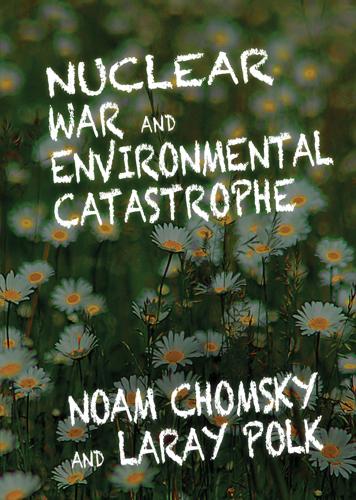
Nuclear War and Environmental Catastrophe
by
Noam Chomsky
and
Laray Polk
Published 29 Apr 2013
Contemporary concerns include opposition to the Trident nuclear weapon system, chemical and biological weapons, missile defense, a nuclear-armed NATO, and expansion of nuclear power. 87 Duff’s published works include Prisoners in Vietnam: The Whole Story (London: ICDP, 1970); Left, Left, Left: Personal Account of Six Protest Campaigns, 1945–65 (London: Allison & Busby, 1971); War or Peace in the Middle East (Nottingham: Spokesman Books, 1978). 88 Carol (née Schatz) Chomsky received her PhD in linguistics from Harvard and served on the faculty of the Harvard Graduate School of Education from 1972 until 1997. She has been described as a “pioneer in the field of child language acquisition,” introducing a technique still in use today for helping children learn the mechanics of reading. The technique, referred to as “repeated listening,” is discussed in “After Decoding: What?,” Language Arts 53 (March 1976): 288–96, 314. See also her work on language acquisition by the deaf-blind, Rich Languages from Poor Inputs, ed. Massimo Piattelli-Palmarini and Robert C. Berwick (New York: Oxford University Press USA, 2012). 89 “A Call to Resist Illegitimate Authority” appeared in the New Republic and the New York Review of Books prior to an antidraft demonstration in Washington, DC, in 1967.
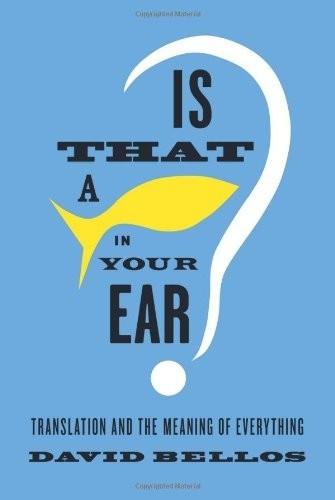
Is That a Fish in Your Ear?: Translation and the Meaning of Everything
by
David Bellos
Published 10 Oct 2011
It is not a neutral term: it is burdened with a complex set of ideas about the relationship between language and selfhood, and it unloads that burden on us as long as we take the term to be a natural, unproblematic way of naming our linguistic home. We may all be born with the potential to acquire a language and a need to do so—with what some linguists have called a “language-acquisition device”—hardwired in our brains. But in practice, we are not born into any particular language at all: all babies are languageless at the start of life. Yet we use the term native speaker as if the contrary were true—as if the form of language acquired by natural but fairly strenuous effort from our infant environment were a birthright, an inheritance, and the definitive, unalterable location of our linguistic identity.
…
But Bible translation in the twentieth century is a different kettle of fish. The agents of modern Bible translation into indigenous languages are closely involved in the missionizing project itself, and many of them are American as well. They work into languages they have learned long after the critical age of language acquisition—they are what we termed L2 translators see here of this book. They therefore run the same kind of risk of creating unintentionally comical or offensive effects as do the creators of international signage in Croatian seaside hotels. Nida’s main concern was to try to ensure they did not. Bible translation into non-European languages, which began with European colonial expansion as early as the seventeenth century, was highly inventive from the start.
…
Austro-Hungarian Empire Avatar (film) axioms: of effability; of grammaticality Azeri Babelfish Babel story Babylon bailo Balzac, Honoré de, Le Père Goriot Bar-Hillel, Yehoshua Bash, Matsuo Basque Batum Worker, The Baudelaire, Charles BBC Beckett, Samuel behavior, linguistic Belgium Bell, Anthea belles infidèles, les Bengali Benjamin, Walter Bergman, Ingmar Berlin Berman, Antoine Berne Convention Berr, Hélène Bible; Babel story; English; German; Hebrew; Spanish; translation bilingualism; dictionaries Bismarck, Otto von Bloomfield, Leonard book reviews book trade; growth of Borges, Jorge Luis Bosavi Breton Browning, Robert Buber, Martin Buddhism Buffon, Georges-Louis Leclerc, Comte de; “Discourse on Style,” Bulgakov, Mikhail, The Master and Margarita Byka, Vasil Byrne, Gabriel calque Cameron, James Camus, Albert, The Outsider cartoons Casanova, Pascale category term Catholicism Cawdrey, Robert; A Table Alphabeticall of hard usual English wordes … Celentano, Adriano Cervantes, Miguel de; Don Quixote Chabon, Michael, The Yiddish Policemen’s Union Champollion, Jean-François Chaplin, Charlie Chapman, George Charlemagne Chatterjee, Upamanyu, English, August Chaucer, Geoffrey cheval children; language acquisition China Chinese ; dictionaries ; poetry; shunkouliu; as UN language Chomsky, Noam; Syntactic Structures Christianity; missionaries chuchotage Churchill, Winston Chuvash Cicero Clifford, James CNN code; breakers; switching Coghill, Neville Colbert Report, The Cold War colonialism color terms Columbus, Christopher commentary, translation computer-aided translation (CAT) computer(s); Google Translate; translation concrete languages Condé, Maryse conference interpreting; simultaneous confidentiality agreements contact language context; meaning and Coptic copyright Council of Europe Coverdale, Miles cribs Crimean War Cuba cultural substitution cuneiform script Cyprian Czech Daghestani d’Alembert, Jean Dangerous Liaisons Danish Dante Danticat, Edwidge Dari Derrida, Jacques Descartes, René DG Translation dialect; translation as; variation dialogue Díaz, Junot Dickens, Charles diction, variety of dictionaries; bilingual; Chinese; French; general purpose; history of; multilingual; pocket; rhyme; size of; special purpose Dictionnaire de l’Académie Diderot, Denis, Encyclopédie diversity of language Doctor Zhivago (film) dog language Dostoyevsky, FyodorThe Brothers Karamazov; Crime and Punishment dragomania dragomans drama Dr.

The Red Queen: Sex and the Evolution of Human Nature
by
Matt Ridley
Published 14 Aug 1993
For if the brain consists of evolved mechanisms, highly specific and intricately designed but flexible in content, then it is impossible to use the fact that a behaviour is flexible as an indication that it is ‘cultural’. The ability to use language is ‘genetic’ in the sense that it is inherent in the genes’ instructions for putting together a human body to include a detailed language-acquisition device. It is also ‘cultural’ in the sense that the vocabulary and syntax of the language are arbitrary and learnt. It is also developmental in the sense that the language-acquisition device grows after birth and feeds off the examples it sees around it. Just because language is acquired after birth does not mean that it is cultural. Teeth are also acquired after birth. ‘There is no more a gene for aggression than there is for wisdom teeth,’ wrote Stephen Jay Gould, implying that behaviour must be cultural and not ‘biological’.5 He is right, of course, but that is exactly why his implication is wrong.
…
The corpus callosum, which connects the two, grows larger in girls. It is as if testosterone has begun to isolate the boy’s right hemisphere from the colonization by verbal skills from the left. These facts are far too few and unsystematic to be regarded as anything more than hints of what actually happens, but the role of language acquisition must be critical. Language is the most human and therefore most recent of our mental skills – the one we share with no other ape. Language seems to come into the brain like an invading Goth, taking the place of other skills, and testosterone appears to resist this. Whatever actually happens, it is an indisputable fact that at the age of five, when they first arrive at school, the average boy has a very different brain from the average girl.
…
You do not assume that because they are owned by different airlines, the two aeroplanes were made in different factories. Why then must we assume that because there are differences between the speech of a Frenchman and an Englishman that they must have brains that are not influenced by genes at all? Their brains are the products of genes – not different genes, the same genes. There is a universal human language-acquisition device, just like there is a universal human kidney and a universal 747 tail structure. Think, too, of the totalitarian implications of pure environmentalism. Stephen Jay Gould once caricatured the views of genetic determinists thus: ‘If we are programmed to be what we are, then these traits are ineluctable.
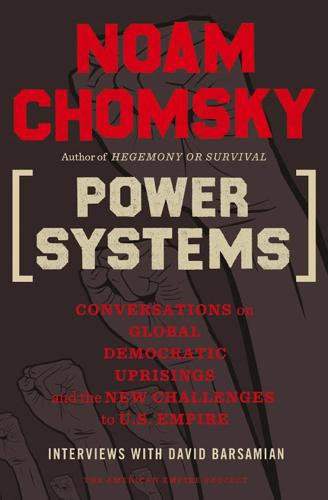
Power Systems: Conversations on Global Democratic Uprisings and the New Challenges to U.S. Empire
by
Noam Chomsky
and
David Barsamian
Published 1 Nov 2012
They may just produce one-word or two-word sentences, but there’s now experimental and other evidence that a lot more is in there. By three or four, a normal child will have extensive language capacity. Either this is a miracle or it’s biologically driven. There are just no other choices. There are attempts to claim that language acquisition is a matter of pattern recognition or memorization, but even a superficial look at those proposals shows that they collapse very quickly. It doesn’t mean that they’re not being pursued. In fact, those lines of inquiry are very popular. In my view, though, they’re just an utter waste of time.
…
ACORN, 31–32 advertising, 80, 102–3 Afghanistan, 1, 13–18, 60, 72, 98, 99 Taliban, 15–16 U.S. war in, 13–18 Africa, 3, 22, 46, 47, 51, 169 African Americans, 48, 152, 166–67, 176 African National Congress, 71 African Union (AU), 50–51 al-Awlaki, Anwar, 114 Alberts, Bruce, 154–55 Ali, Tariq, 52 Allende, Salvador, 61 Alperovitz, Gar, 78 al-Qaeda, 98–99 America, decline of, 4–10, 56, 59–60 American Civil Liberties Union, 175 American Revolution, 155, 156, 172 Apple, 169–70 Arab Spring, 44–55, 60–64, 67, 112–13, 168 Aristotle, on democracy, 84 Armenian genocide, 91, 93–94 Assange, Julian, 113 Australian aboriginal languages, 139–40 Ayalon, Danny, 94 Bagram air base, 14, 72 Bahrain, 49, 52, 53, 144 Baker, Dean, 108 Bakunin, Mikhail, 171–72, 173 banks, 33, 42, 76, 87–88 bailouts, 82 Bartels, Larry, 41 Beinin, Joel, 48 Ben Ali, Zine El-Abidine, 112 Berle, Adolf, 54 Bernays, Edward, 79–80 Propaganda, 80 Bhopal explosion (1984), 174 bin Laden, Osama, 15–16 assassination of, 58–59, 99, 114 biological acquisition of language, 129–36 Bivens, Josh, Failure by Design, 168 Bolivia, 35 books, future of, 103–6 Boston, 37, 67 Bouazizi, Mohamed, 44 Boyce, Michael, 16 brain development, 136 Brazil, 6, 22, 50, 90, 161 BRICS, 50–51 Brooks, David, 81, 82 Bush, George W., 7, 58, 70, 90, 110, 153 Iraq War, 16, 56, 114–16 response to 9/11, 15–26 war crimes, 114–16 business, 25, 36, 38, 39, 40, 76–77, 81, 103, 123, 169 Butler, Smedley, 13, 14 California, 167, 172 campaign finance, 173–74 Canada, 24, 73, 161–64 capitalism, 77–78, 147, 170–73 Caribbean, 7, 161 Carlos the Jackal, (Ilich Ramírez Sánchez), 21 Carothers, Thomas, 62, 64 Carter, Jimmy, 151 Ceauescu, Nicolae, 17 CELAC, 161 Central America, 21, 36 natural resources, 17–18 Chace, James, 61 Chavis, Benjamin, 65 children, 38, 82, 83 language acquisition in, 126–36 Chile, 61 China, 7–10, 50, 57, 77, 106, 107, 164, 169 ecological problems, 12 economic growth, 7–13 -India relations, 20–22 industry, 11–13 labor, 9–12 “loss of,” 57, 60 Maoist, 12 Chun Doo-hwan, 17 Citizens United v. Federal Election Commission, 173–74 civil liberties, 69–73, 175 military detention and, 70–73 civil rights movement, 24, 30–31, 45, 65–66, 72, 150, 167, 176 climate change, 75, 121–25, 159 Clinton, Bill, 58, 83, 90, 170 Clinton, Hillary, 162 COINTELPRO, 73, 74, 120 collective bargaining, 40–41 Colombia, 7, 72, 145, 160, 164 colonialism, 3–5, 9, 46, 51 Communist Party, 23–24, 27, 29, 75, 118 Congress, U.S., 27, 32, 41–42, 85 Congress of Industrial Organizations, 23, 68 consensus, 74–75 Constitution, U.S., 72, 85, 174–75 consumerism, 36, 37, 80 corporations, 10, 24, 26, 27, 31–32, 38, 41, 76–77, 81, 103, 119, 152, 174 piracy issue, 107–8 Cuba, 4, 160, 161 culture, and language, 138–40 deaf-blind, 134–35 debt, 8, 87, 152, 168 student, 152 decolonization, 5, 46 democracy, 47, 54, 62, 79–81, 84–85, 109, 112, 143–44, 150, 151, 158–59, 172 Democratic Party, 32, 41–42 demonstrations, 29–33, 35, 40–43, 73–77 Arab Spring, 44–55, 60–64, 67, 112–13, 168 civil rights, 24, 30–31, 45, 65–66, 72, 150, 167, 176 Occupy, 47, 65–69, 74–77, 118–21, 146, 168, 177 student, 73–74 Depression, 23, 27, 28 deregulation, 48, 173–74 Dewey, John, 147, 148, 149 Dink, Hrant, 89, 91 dissidents, 144–45 doctrinal system, 8, 10, 36, 38, 158, 159 Dönitz, Karl, 116 Draghi, Mario, 169 drugs, 160–62 Durand Line, 99 Duvalier, Jean-Claude, 17 Economic Policy Institute, 168 economy, 4, 32, 76–78, 97, 121, 168, 171 Arab Spring, 44–55, 60–64, 67 Chinese, 7–10 financial crisis, 23, 48, 86–89, 168–69 global shift of power, 5–13, 58, 76–77 Indian, 7, 10–11, 20–23 stimulus, 33 U.S. decline, 4–10, 56, 59–60 education, 37, 82, 147–56, 165–68 battle over, 147–56 higher, 150–53, 165–68 K-to-12, 153–56 privatization of, 38–39, 156, 167–68 public, 37–39, 147–48, 153–56, 166–68 science, 154–55 Egypt, 35, 51, 53, 61, 67 Arab Spring, 44–49, 54, 60–64, 67, 168 Einstein, Albert, 143 Eisenhower, Dwight, 125 electoral politics, 102–13, 117–19 electronic books, 104 Ellsberg, Daniel, 15, 113 El Salvador, 145 Emerson, Ralph Waldo, 148, 156 Enlightenment, 116, 147, 148 environment, 12, 75, 121–25, 158–59, 163–65, 176 climate change, 75, 121–25, 159 fracking, 164–65 Erdoan, Recep Tayyip, 89, 90, 93 Europe, 5, 6, 9, 47, 51, 58, 161 economic crisis, 47, 86–89, 168–69 European Central Bank (ECB), 86–87, 169 European Union, 87, 89, 92 evolution, 128, 129, 137–38 Facebook, 145, 146 Federal Bureau of Investigation (FBI), 15, 71, 73 Federal Reserve, 86–87 financial crisis, 23, 48, 86–89, 168–69 Financial Times, 66, 76, 78, 123 Finland, 153, 154 Foreign Affairs, 59, 61 fossil fuels, 21, 22, 49–55, 122–24, 164, 165 fracking, 123, 164–65 France, 46, 50, 52, 68, 112–13, 170 Fraser, Doug, 25 Freedom of Information Act, 110 Gadhafi, Mu’ammar, 50, 53 Galileo, 143, 144 Gates, Bill, 11 Gaza, 93 General Motors, 33, 80 genetics, 126–27, 129, 140 Germany, 15, 27, 51, 58, 118, 153 economic policy, 88 Nazism, 28–29, 115–16 Weimar Republic, 25, 27–29 World War II, 115–16 GI bill, 152 Ginsberg, Benjamin, The Fall of the Faculty, 168 globalization, 5, 20–22, 170 financial crisis, 86–89, 168–69 labor, 9–12, 76–77, 169–70 shift of power, 5–13, 58, 76–77 Goldman Sachs, 42 Google, 107 government, 78–85, 150, 158 big, 81, 82 security, 107–13 “Grand Area” planning, 57 Great Britain, 5, 8–9, 16, 17, 21, 35, 50, 52, 61, 79, 107, 139, 172 colonialism, 9, 20 government, 79 slavery, 36 World War II, 115, 116 Greece, 87 Guantánamo, 72–73 Guatemala, 21 gun culture, 162–63 Gwadar, 22 Haiti, 11, 13–14, 17 Hale, Kenneth, 136, 139–41 Hanif, Mohammed, A Case of Exploding Mangoes, 106 Haq, Abdul, 16 Harvard University, Institute of Politics, 158 Havel, Václav, 145 health care, 24, 76, 82, 157 Obamacare, 124 Heilbrunn, Jacob, 111 Hindenburg, Paul von, 27–28 historical amnesia, 97–98 Hitler, Adolf, 28–29, 32, 88 Holder v.
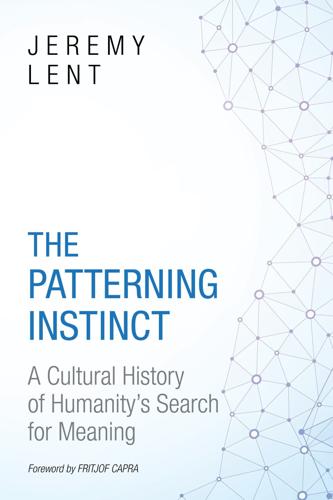
The Patterning Instinct: A Cultural History of Humanity's Search for Meaning
by
Jeremy Lent
Published 22 May 2017
Fuster, The Prefrontal Cortex (New York: Elsevier, 1988), 333–78; Ilka Diester and Andreas Nieder, “Semantic Associations between Signs and Numerical Categories in the Prefrontal Cortex,” PLoS Biology 5, no. 11 (2007): 2684–95. 8. Patricia K. Kuhl, “A New View of Language Acquisition,” Proceedings of the National Academy of Sciences 97, no. 22 (2000): 11850–57; Patricia K. Kuhl, “Early Language Acquisition: Cracking the Speech Code,” Nature Reviews: Neuroscience 5 (2004): 831–43. 9. Cited in Tom Sjöblom, “Spandrels, Gazelles and Flying Buttresses: Religion as Adaptation or as a By-Product,” Journal of Cognition and Culture 7, no. 3–4 (2007): 293–312; Stewart Guthrie, Faces in the Clouds: A New Theory of Religion (New York: Oxford University Press, 1993), 32.
…
Ricardo Garcia, “The Evolutionary Origin of the Language Areas in the Human Brain: A Neuroanatomical Perspective,” Brain Research Reviews 25 (1997): 381–96; and Michael Tomasello, The Cultural Origins of Human Cognition (Cambridge, MA: Harvard University Press, 2000), 94. 20. Patricia K. Kuhl, “A New View of Language Acquisition,” Proceedings of the National Academy of Sciences 97, no. 22 (2000): 11850–57. See also Fauconnier and Turner, Way We Think, 173. 21. Kuhl, “New View.” See also Patricia K. Kuhl, “Early Language Acquisition: Cracking the Speech Code,” Nature Reviews: Neuroscience 5 (2004): 831–43. Another study providing evidence of the human infant's patterning instinct has demonstrated the ability of eight-month-old infants to segment discrete words from fluent speech based solely on the statistical relationship between neighboring speech sounds.
…
The Symbolic Species: The Co-Evolution of Language and the Brain. New York: Norton, 1997. Highly recommended for its analysis of the central role of the prefrontal cortex in the evolution of human cognition and symbolic thought. Chapter 2. The Magical Weave of Language Kuhl, Patricia K. “A New View of Language Acquisition.” Proceedings of the National Academy of Sciences 97, no. 22 (2000): 11850–57. Recommended for its powerful insights into how the human patterning instinct develops in prelinguistic infants. Jackendoff, Ray. “Possible Stages in the Evolution of the Language Capacity.” Trends in Cognitive Sciences 3, no. 7 (1999): 272–79.

The Deep Learning Revolution (The MIT Press)
by
Terrence J. Sejnowski
Published 27 Sep 2018
Here are a few of the many projects that have been undertaken by TDLC researchers: Figure 12.7 New Science of Learning includes machine learning and neuroscience along with insights from psychology and education. From Meltzoff, Kuhl, Movellan, and Sejnowski, “Foundations for a New Science of Learning,” figure 1. 184 Chapter 12 • April Benasich at the Center for Molecular and Behavioral Neuroscience at Rutgers developed a test that can predict whether a baby will have deficits in language acquisition and learning based on the baby’s timing in auditory perception; she showed that these deficits could be corrected by adaptively manipulating the timing of sounds and reward feedback to allow the baby to develop normal hearing, speaking, and learning.22 The experiments on which these results are based followed babies longitudinally from three months to five years of age.
…
See also MIT Artificial Intelligence Laboratory and the AI business, 191–194 as an existential threat, 23–25 Dartmouth Artificial Intelligence Conference of 2006 (AI@50), 256–258 Dartmouth Artificial Intelligence Summer Research Project, 1, 258 dynamic external memory and, 259 early clues for how computers might achieve intelligent behavior, 37–39 Frank Rosenblatt and, 39, 47 historical perspective on, 193–194 human intelligence and, 25 learning how to be more intelligent, 20–21 Marvin Minsky and, 27, 47, 255f, 256–259 neural networks and, 259 322 Artificial intelligence (AI) (cont.) recent progress in, ix, 174 regulation and bans of, 125 terminology, 32 “Artificial life,” 196 Artificial neural networks (ANNies), 57f, 159, 285n1. See also Neural networks Associative learning, 247 ATMs (automated teller machines), 22 Attractor states, 93, 94, 94f, 95b Auditory perception and language acquisition, 184 Automated teller machines (ATMs), 22 Autonomous vehicles. See Self-driving cars Avoid being hit, 148 Backgammon, 34, 144f, 148. See also TD-Gammon backgammon board, 144f learning how to play, 143–146, 148–149 Backpropagation (backprop) learning algorithm, 114f, 217, 299n2 Backpropagation of errors (backprop), 111b, 112, 118, 148 Bag-of-words model, 251 Ballard, Dana H., 96, 297nn11–12, 314n8 Baltimore, David A., 307n5 Bar-Joseph, Ziv, 319n13 Barlow, Horace, 84, 296n8 Barry, Susan R., 294n5 Bartlett, Marian “Marni” Stewart, 181–182, 181f, 184, 308nn19–20 Barto, Andrew, 144, 146f Bartol, Thomas M., Jr., 296n14, 300n18 Basal ganglia, motivation and, 151, 153–154 Bates, Elizabeth A., 107, 298n24 Bats, 263–264 Index Bavelier, Daphne, 189–190, 309n33 Baxter (robot), 177f, 178 Bayes, Thomas, 128 Bayes networks, 128 Bear off pieces, 148 Beck, Andrew H., 287n17 Beer Bottle Pass, 4, 5f Bees, learning in, 151 Behaviorism and behaviorists, 149, 247–248 cognitive science and, 248, 249f, 250, 253 Behrens, M.
…
Jenkins Department of Biophysics, 56, 99, 104, 116, 270, 292n13 Jones, Alan, 226f Jordan, Michael I., 122, 136f, 303n17 Joyce, Gerald F., 316n1 Jung, Tzyy-Ping, 87f, 88f, 90, 296n11 Jutton, Christian, 81, 295n1 Kaas, Jon H., 74, 75, 295n14 Kaggle, 191 Kahneman, Daniel, 301n26 Kales, Alan, 12 Kanade, Takeo, 256 Kant, Immanuel, 132 Index Karmiloff-Smith, Annette, 298n24 Karten, Harvey, 291n15 Kasparov, Gary, 149 Katz, Bernard, 32, 290n8 Kauffman, Stuart, 196, 311n6 Ke Jie, 18, 288nn32–33 Kelley, Darcy B., 293n15 Kennedy, John F., 310n44 Kernel trick/kernel method, 128 Kienker, Paul K., 97f, 100f Kindermann, Sandra S., 88f Kirkpatrick, Scott, 96, 164, 297n13 Koch, Christof, 211, 233–235, 315nn4–6, 316n22 Kohonen, Teuvo, 51–52, 292n4 Kohonen network model, 51–52 Koller, Daphne, 164 Koller, Dominik, 227, 228f Kosik, Kenneth S., 307n5 Krauzlis, Richard J., 242f, 316n20 Kremláček, Jan, 225f Krizhevsky, Alex, 128, 300n15, 302n7 Krogh, Anders S., 94 Kuffler, Stephen W., 58, 59f, 64–65, 66f, 67f, 74, 99, 293n17 Kuhl, Patricia K., 157–158, 183f, 257–258, 305n21, 308n21, 317n10 Kuhn, Thomas S., 127, 302n1 Kunsberg, Benjamin S., 73f La Jolla Group for Explaining the Origin of Humans, 264, 319n10 Lamarr, Hedy, 223, 223f Landis, Story, 58 Langton, Christopher G., 196, 311n7 Language, 252, 253f. See also Linguistics in cognitive science, traditional approach to, 51 Goldilocks problem in, 112 Language acquisition, 184. See also Chomsky, Noam Language disorders, 190 Language translation. See Translation 331 Larochelle, Hugo, 302n4 Law firms, automated deep learning systems and, 15 Lawrence, David T., 44f, 291n9 Learning, 258. See also specific topics Chomsky and, 248f, 249f, 250, 251 forms of, 154–159 how to learn, 22, 23f, 185–189 the science of, 182–185, 183f as a way to understand cognition, 250 Learning algorithms, 3, 119, 201, 267.
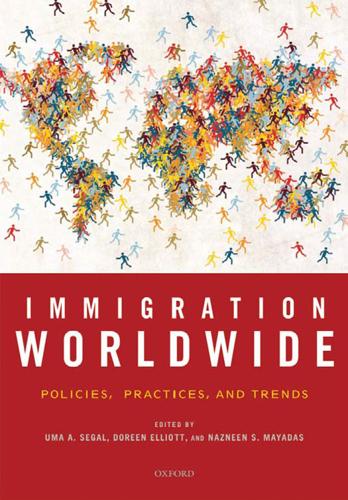
Immigration worldwide: policies, practices, and trends
by
Uma Anand Segal
,
Doreen Elliott
and
Nazneen S. Mayadas
Published 19 Jan 2010
(p. 10) Referring to federal immigration policies, Congress specified in 20 USCS, Sec. 7402–1 (1999) that the collection of language-minority Americans in the United States speak almost all the world’s languages and that there are even greater numbers of children and young people of limited English proficiency. These children face numerous challenges in their efforts to received adequate education and become an integral part of U.S. society. Several decades ago, Congress recommended that elementary and secondary school education be strengthened with bilingual education, language-enhancement, and language-acquisition programs, however, recent immigrant backlash has resulted in ‘‘English only’’ resolutions in a number of states. Congress also proposed an emergency immigrant education policy to help the large number of immigrant children who lack English language skills to make the transition. Free public school education to the secondary school level, furthermore, is available to all residents in the United States regardless of visa status, and children under the age of 16 years are mandated to be enrolled in school.
…
Pillar 2: ‘‘Supportive Integration Policy’’: The foundation here is built upon the offers, made in the Immigration Law, to support the integration process by language and integration courses and by counseling structures for newly immigrated persons. Based on past experiences, the failures regarding German language acquisition and education both for preschool- and schoolaged members of the younger generation should be avoided. Pillar 3: ‘‘Revisited Integration Policy’’: This is the most important pillar of integration policy in Germany. It was only indirectly designated in the broader context of the Immigration Law—beyond a minimal allocation of courses for 50,000–60,000 people, as far as funds were available for the ‘‘first generation.’’
…
This development is directed towards children with migrant background and should have positive affects on their early acquisition of the German language. argues for improving education through the use of budget resources that have been freed as a result of demographic change. will develop a plan for the general promotion of the German language in day cares and preschools promotes research regarding the children’s progress in German language development. They should enable the development of support plans for students and further training for teachers. supports, along with 10 states, the development of a master plan for language education through the program ‘‘FörMig’’ (Language Acquisition Promotion for Children and Youth with migrant background). through its model program ‘‘Truancy—The Second Chance,’’ pursues the goal to reintegrate truants in schools and improve their chances of completing a degree supports states’ research in the field of education and in their development of plans and methods to improve integration.

Speaking Code: Coding as Aesthetic and Political Expression
by
Geoff Cox
and
Alex McLean
Published 9 Nov 2012
The third chapter, “Coding Publics,” builds on many of the same references but focuses more on collective action and reconceptualizing ideas of publicness, again making reference to the writings of Arendt. The voice undermines this public dimension by offering a dual representational function, indicating both the precondition for language acquisition and also the expression of political opinion. That the idea of democracy itself is in crisis, along with the voice, is revealed in a range of paradoxes over the terms in use, and also over key issues that relate to intellectual property and the uneasy interconnections between free software and free speech.
…
Berardi’s understanding of the problem is rather similar to Arendt’s in his observation that we have been acquiring language from machines, not from other humans (namely, from our mothers), in situations where the learning of language and affectivity have been largely separated.3 The problem of language acquisition is extended to intellectual and social behavior, and he calls this a catastrophe of modern humanism, in which we no longer have sufficient attention spans for love, tenderness, and compassion. We are more and more estranged from affect as speech becomes commodified, and is increasingly rendered using devices locked into neoliberal markets that have no interest in the voice as a sign of human solidarity.

Why Machines Learn: The Elegant Math Behind Modern AI
by
Anil Ananthaswamy
Published 15 Jul 2024
See also nearest neighbor rule Krauth, Werner, 225 Krizhevsky, Alex, 375, 379 L Lagerlöf, Selma, 7 Lagrange, Joseph-Louis, 211, 216–20 language acquisition, 356–57, 428–29 large language models (LLMs) applications for, 420 bias in, 420–22 ChatGPT, 415–16 correlation with causation, 422 dangers of, 420–21 energy efficiency, 429 language acquisition, 428–29 Minerva, 412–14, 419 as a perceptron descendant, 1–2, 25 self-supervised learning and, 402–4 sexism in, 422–24 theory of mind and, 415–20, 428 as a transformer, 408–9 learning processes, 357 learning rates, 318–19 least mean squares (LMS) algorithm, 64–65, 86–92, 94 LeCun, Yann, 340–41, 356–60, 374 Leibniz, Gottfried Wilhelm, 31 LeNet, 360, 373–74.
…
Can they help us understand this aspect of human cognition? Not quite. At least, not yet. But cognitive scientists, even if they aren’t convinced of an LLM’s prowess in this arena, are nonetheless intrigued. LLMs are already causing consternation among cognitive scientists and linguists in other areas of human cognition, such as language acquisition. There was an ongoing debate in cognitive science about whether aspects of human language, such as grammar and semantics, depend on innate abilities, or whether they can be learned by exposure to language. (Recall the debate between Chomsky and Piaget from chapter 11.) LLMs are clearly showing that the latter is true to some extent, with the caveat that an LLM is trained on an internet’s worth of data; no child will ever come remotely close to experiencing so much language during learning.
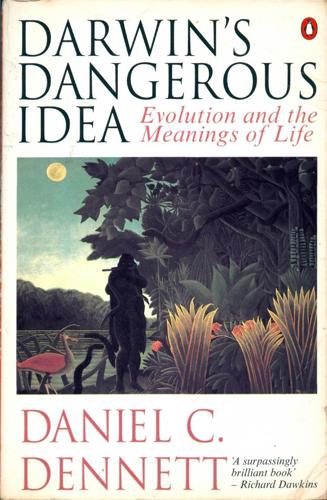
Darwin's Dangerous Idea: Evolution and the Meanings of Life
by
Daniel C. Dennett
Published 15 Jan 1995
That's why it is so effortless, according to Chomsky, for even "slow" children to learn to speak. They aren't really learning at all, any more than birds learn their feathers. Language, and feathers, just develop in species ordained to have them, and are off limits to species that lack the innate equipment. A few developmental triggers set the language-acquisition process in motion, and a few environmental conditions subsequently do some minor pruning or shaping, into whichever mother tongue the child encounters. This claim has encountered enormous resistance, but we can now be sure that the truth lies much closer to Chomsky's end of the table than to that of his opponents (for the details, see the defenses of Chomsky's position in Jackendoff 1993 and Pinker 1994).
…
Just like the biologists' resistance to "Hoyle's Howler," the hypothesis that life didn't begin on Earth but began somewhere else and migrated here, the psychologists' resistance to Chomsky's challenge had a benign explanation: if Chomsky was right, it would just make the phenomena of language and language acquisition that much harder to investigate. Instead of finding the learning process going on before our eyes in individual children, where we could study it and manipulate it, we would have to "pass the buck to biology" and hope that the biologists could explain how our species "learned" to have language competences built in at birth.
…
In the case of Hoyle's hypothesis, one could imagine arguments that fixed a maximal speed of mutation and selection and showed that there had not been enough time on Earth for the whole process to have occurred locally. Chomsky's arguments, from the poverty of the stimulus and the speed of language acquisition, are analogous; they purport to show that there must have been large gifts of design in the infant if we are to explain the speedy development of the mature competence. And while we can take solace in the supposition that we may someday be able to confirm the presence of these innate structures by direct examination of the nervous system (like finding fossils of our extraterrestrial ancestors), we will have to accept the disheartening conclusion that a larger portion than we had hoped of learning theory, considered in its most general form as the attempt to explain the transition from utter ignorance to knowledge, is not the province of psychology at all, but rather of evolutionary biology at its most speculative.

How the Mind Works
by
Steven Pinker
Published 1 Jan 1997
For it alters completely the way one thinks about thinking, and its unforseen consequences probably can’t be contained by a book’ Christopher Lehmann-Haupt, The New York Times ‘A landmark in popular science … A major public asset’ Marek Kohn, Independent ‘The humour, breadth and clarity of thought … make this work essential reading for anyone curious about the human mind’ Raymond Dolan, Observer ABOUT THE AUTHOR Steven Pinker, a native of Montreal, studied experimental psychology at McGill University and Harvard University. After serving on the faculties of Harvard and Stanford universities he moved to the Massachusetts Institute of Technology, where he is currently Peter de Florez Professor of Psychology. Pinker has studied many aspects of language and of visual cognition, with a focus on language acquisition in children. He is a fellow of several scientific societies, and has been awarded research prizes from the National Academy of Sciences and the American Psychological Association, graduate and undergraduate teaching prizes from MIT, and book prizes from the American Psychological Association, the Linguistics Society of America and the Los Angeles Times.
…
Whether or not we establish exact boundaries for the components of the mind, it is clear that it is not made of mental Spam but has a heterogeneous structure of many specialized parts. Our physical organs owe their complex design to the information in the human genome, and so, I believe, do our mental organs. We do not learn to have a pancreas, and we do not learn to have a visual system, language acquisition, common sense, or feelings of love, friendship, and fairness. No single discovery proves the claim (just as no single discovery proves that the pancreas is innately structured), but many lines of evidence converge on it. The one that most impresses me is the Robot Challenge. Each of the major engineering problems solved by the mind is unsolvable without built-in assumptions about the laws that hold in that arena of interaction with the world.
…
How do we know that people aren’t just using dead metaphors uncomprehendingly, as when we talk of breakfast without thinking of it as breaking a fast? For one thing, space and force metaphors have been reinvented time and again, in dozens of language families across the globe. Even more suggestive evidence comes from my own main field of research, child language acquisition. The psychologist Melissa Bowerman discovered that preschool children spontaneously coin their own metaphors in which space and motion symbolize possession, circumstance, time, and causation: You put me just bread and butter. Mother takes ball away from boy and puts it to girl. I’m taking these cracks bigger [while shelling a peanut].

We Are All Completely Beside Ourselves
by
Karen Joy Fowler
Published 29 May 2013
But it seems to me that much of the interesting data is mine. As I grew, my language development not only contrasted with Fern’s but also introduced a perfectly predictable x-factor that undermined all such comparisons. Ever since Day and Davis published their findings in the 1930s, there’s been a perception that twinness affects language acquisition. New and better studies took place in the 1970s, but I’m not sure our parents were looking in their direction yet. Nor would such studies have been completely relevant to a situation such as ours, where the twins had such disparate potentials. Though Fern and I were sometimes separated while the grad students observed us, we spent most of our time together.
…
He didn’t talk, but I was well able to supply both sides of a conversation. I returned a mitten he’d dropped. We ate lunch together, or at least we ate at the same table, and in the classroom he’d been given the desk next to mine on the theory that when I talked out of turn, it might help his language acquisition. The irony was that his English improved due in no small part to my constant yakking at him, but as soon as he could speak, he made other friends. Our connection was beautiful, but brief. As soon as he was genuinely fluent, Dae-jung transferred to the public school. His parents had ambitions for him that included the math classes at North.

Propaganda and the Public Mind
by
Noam Chomsky
and
David Barsamian
Published 31 Mar 2015
The floor was at such an angle that at one end it closed, and the other end was about six inches away from the floor. Everything else was more or less like that. Now you have a number of grandchildren. Have you, as they get older, noticed anything that verifies or even perhaps disproves some of your own notions about language acquisition? How dare you suggest that anything might disprove it? [Laughs.] One set of my grandchildren has an interesting history. I have two grandchildren who live in Nicaragua. Children generally tend to speak the language of their peers, not their parents. So, for example, I don’t speak with my father’s Russian accent or my mother’s New York accent.
…
She’s now two and a half. It’s the normal situation, but in a complicated way. Children do not pick up what their parents speak. Of course their parents have an influence, but they typically speak the language of their peers. Do these observations confirm your ideas about the brain being hard-wired for language acquisition? You could say they confirm it. It’s just not even a serious question, so yes, they confirm it. But these aren’t careful experiments. There is really careful work on these topics. Let’s talk about a theme that we return to periodically, and that is propaganda and indoctrination. As a teacher, how do you get people to think for themselves?
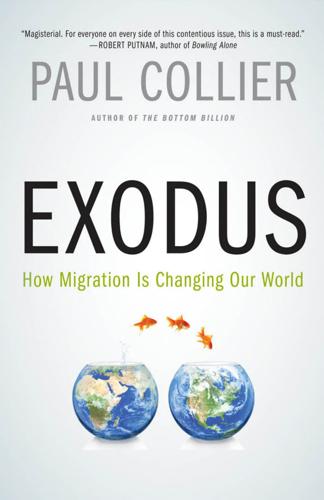
Exodus: How Migration Is Changing Our World
by
Paul Collier
Published 30 Sep 2013
See migration, demographic argument for Akerlof, George, 6, 32–33, 192, 204, 238 Alesina, Alberto, 85 Amin, Idi, 189 Andersen, Torben, 125 Angola, 94 apprenticeship programs, 127–128 Arab Spring, 35, 221–222 assimilation advantages of, 98–99 in European Union countries, 76–77 intermarriage and, 99, 272 language acquisition and, 70, 98–99, 107, 242, 264, 270 in the United States, 69, 76–77, 242, 264 asylum, 160, 249, 262–263 Australia detention of migrants in, 161, 250 happiness in, 249 migration policy in, 12, 51–52, 157–158, 248–250 population density in, 24, 118, 137, 249 Bangladesh, 200, 208, 214 Batista, Catia, 184–185 Belgium, 17–18, 236 Belich, James, 92–93 Besley, Timothy, 64–65, 191 Bhagwati, Jagdish, 150 Boko Haram, 222–223 “bottom billion.”
…
See also under specific countries anti-migration approach to, 136–137 “anxiety phase” of, 140–141 asylum and, 160, 249, 262–263 businesses’ role in, 262 ceilings and, 256–260, 267–268 culturally differentiated controls and, 262 diaspora absorption phase of, 142 education requirements and, 12, 157–158, 164–165, 212–213, 252, 261 emotive perspective on, 11–12 family reunification and, 158–159, 164–165, 212–213, 260 integration and, 264–265, 270 legalizing illegal immigration and, 265–267 lotteries and, 147, 165–166, 259, 261 migration rates and, 50–51, 91, 142, 166, 244, 251–252, 254–260, 268–269, 272 “panic” approach to, 141, 255–256, 267–270 pro-migration approach to, 136 quantitative limits approach to, 139–141 right to control immigration and, 246–251, 270 selectivity and, 260–263 “ugly phase” of, 141 wealth requirements and, 121 Miguel, Edward, 67–68, 76 Mo Ibrahim Index, 193 Moldova, 187 Montalvo, Jose, 77, 98, 191 moral hazard, 249–250 moral values. See ethical values motivation drain, 203–206 Mozambique, 200 Mugabe, Robert, 182, 191 multiculturalism critiques of, 35 as cultural fusion, 97, 99–100, 264 cultural separatism and, 100, 106 impact on integration rates and, 107, 109 impact on language acquisition and, 107 liberalism and, 97, 272 as reaction to assimilation narrative, 97 mutual regard citizenship and, 115–116 cooperation and, 62–63, 67, 83, 87 diminishing returns from, 63, 254 economic redistribution and, 61–62, 68, 83–84, 87, 113, 254 migrants and, 72–73 migration’s impact on, 135–136, 254, 258 neurological foundations of, 234 Smith on, 234 trust and, 62, 254 narratives, Keynes on, 30, 198 National Health Service (NHS, Great Britain), 62, 126, 238 national identity criticisms of, 5, 16–18, 231 economic redistribution and, 18, 235–237 migration’s impact on, 242–244 positive aspects of, 5, 18–19, 25, 131, 242 public sector workers and, 238 racism and, 241 sense of community and, 232, 234–242 violence and, 19, 237, 240–241 Netherlands, 24, 118, 129, 137 neuroscience, 71, 234 New York City (United States) diplomats case study in, 67–68 premier public schools in, 119–120 New Zealand businesses’ role in migration to, 262 migration example featuring, 44–48 migration from Tonga to, 147, 172–173, 259 migration policy in, 128, 147, 173 Niger, 163 Nigeria levels of trust in, 65–66, 68 migrants from, 67–69 terrorism in, 222–223 Norway, 16, 19, 240 Notting Hill Carnival (Great Britain), 82–83 Nunn, Nathan, 65 Nyerere, Julius, 5, 239–240 Okonjo-Iweala, Ngozi, 191 “outsider values,” 203–206, 238 Outtarra, Alassane, 191 Palestinian territories, Jewish settlement in, 93 Paris (France), 216 Philippines, 208, 210–211 Pinker, Steven, 6, 31–32, 65, 80, 233, 240 Plundered Planet, The (Collier), 184, 202 Poland European Union and, 20 Germany and, 240 migration to Great Britain and, 20–21, 262 poor countries.
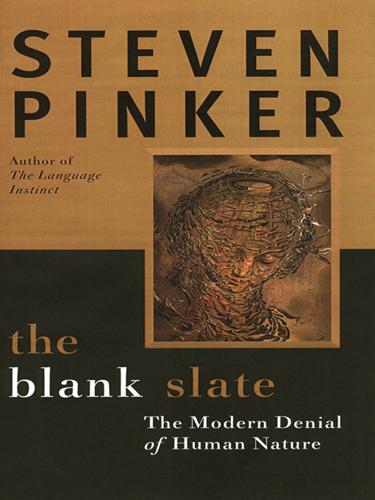
The Blank Slate: The Modern Denial of Human Nature
by
Steven Pinker
Published 1 Jan 2002
But if the adult does the same thing but indicates that he intended the action, the baby will imitate him.9 And when an adult tries and fails to accomplish something (like trying to press the button on a buzzer, or trying to string a loop around a peg), the baby will imitate what the adult tried to do, not what he did do.10 As someone who studies language acquisition in children, I have continually been amazed at how early they “get” the logic of language, availing themselves of most of the spoken vernacular by the age of three.11 That, too, may be an attempt by the genome to get our culture-acquiring apparatus online as early in life as the growing brain can handle it.
…
.: MIT Press. Pinker, S. 2001b. Talk of genetics and vice-versa. Nature, 413, 465–466. Pinker, S., & Mehler, J. (Eds.) 1988. Connections and symbols. Cambridge, Mass.: MIT Press. Pinker, S., & Prince, A. 1988. On language and connectionism: Analysis of a Parallel Distributed Processing model of language acquisition. Cognition, 28, 73–193. Pinker, S., & Prince, A. 1996. The nature of human concepts: Evidence from an unusual source. Communication and Cognition, 29, 307–361. Plamenatz, J. 1963. Man and society: A critical examination of some important social and political theories from Machiavelli to Marx (Vol. 2).
…
Implications of the restricted range of family environments for estimates of heritability and nonshared environment in behavior-genetic adoption studies. Psychological Bulletin, 125, 392–407. Storey, R. 1996. Mimesis and the human animal. Evanston, Ill.: Northwestern University Press. Stromswold, K. 1998. Genetics of spoken language disorders. Human Biology, 70, 297–324. Stromswold, K. 2000. The cognitive neuroscience of language acquisition. In M. S. Gazzaniga (Ed.),The new cognitive neurosciences. Cambridge, Mass.: MIT Press. Stryker, M. P. 1994. Precise development from imprecise rules. Science, 263, 1244–1245. Sulloway, F. J. 1995. Birth order and evolutionary psychology: A meta-analytic overview. Psychological Inquiry, 6, 75–80.
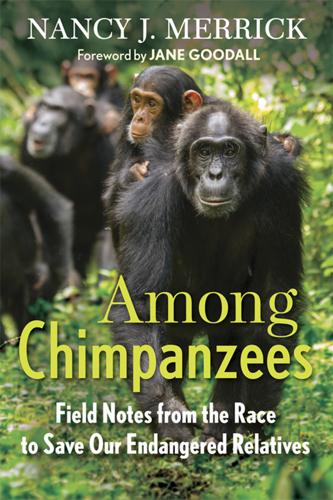
Among Chimpanzees
by
Nancy J. Merrick
One can appreciate his growing concern as the boy began barking and making chimp noises when hungry and progressing slowly in language acquisition. The experiment ultimately proved tragic when the chimp was returned to the primate research center and died shortly thereafter. Although the reasons remain obscure, Kellogg’s son committed suicide years later at age forty-one. Other researchers picked up where Kellogg left off. In the 1940s, scientists Keith and Catherine Hayes raised a chimp named Vicki in their home for seven years. Interested in the chimp’s capacity for language acquisition, they wanted to understand how chimp and human intelligence differ.

The 4-Hour Workweek: Escape 9-5, Live Anywhere, and Join the New Rich
by
Timothy Ferriss
Published 1 Jan 2007
Here are a few examples: Connemara, Ireland: Gaelic Irish, Irish flute, and hurling, the fastest field sport in the world (imagine a mix of lacrosse and rugby played with axe handles) Rio de Janeiro, Brazil: Brazilian Portuguese and Brazilian jujitsu Berlin, Germany: German and locking (a form of upright break-dancing) I tend to focus on language acquisition and one kinesthetic skill, sometimes finding the latter after landing overseas. The most successful serial vagabonds tend to blend the mental and the physical. Notice that I often transport a skill I practice domestically—martial arts—to other countries where they are also practiced. Instant social life and camaraderie.
…
Abraham Maslow, the American psychologist famous for proposing “Mas-low’s Hierarchy of Needs,” would term this goal a “peak experience.” 82. There is a place for koans and rhetorical meditative questions, but these tools are optional and outside the scope of this book. Most questions without answers are just poorly worded. 83. Ellen Bialystok and Kenji Hakuta, In Other Words: The Science and Psychology of Second-Language Acquisition (Basic Books, 1995). The Top 13 New Rich Mistakes If you don’t make mistakes, you’re not working on hard enough problems. And that’s a big mistake. —FRANK WILCZEK, 2004 Nobel Prize winner in physics Ho imparato che niente e impossibile, e anche che quasi niente e facile … (I’ve learned that nothing is impossible, and that almost nothing is easy …) —ARTICOLO 31 (Italian rap group), “Un Urlo” Mistake are the name of the game in lifestyle design.

The Sense of Style: The Thinking Person's Guide to Writing in the 21st Century
by
Steven Pinker
Published 1 Jan 2014
The other is the world of their profession: getting articles published, going to conferences, keeping up with the trends and gossip. Most of a researcher’s waking hours are spent in the second world, and it’s easy for him to confuse the two. The result is the typical opening of an academic paper: In recent years, an increasing number of psychologists and linguists have turned their attention to the problem of child language acquisition. In this article, recent research on this process will be reviewed. No offense, but very few people are interested in how professors spend their time. Classic style ignores the hired help and looks directly at what they are being paid to study: All children acquire the ability to speak a language without explicit lessons.
…
“Intractability” is a controversial concept, which means different things to different people. Resilience to stress is a complex multidimensional construct. Although there is no one universally accepted definition of resilience, it is generally understood as the ability to bounce back from hardship and trauma. The problem of language acquisition is extremely complex. It is difficult to give precise definitions of the concept of “language” and the concept of “acquisition” and the concept of “children.” There is much uncertainty about the interpretation of experimental data and a great deal of controversy surrounding the theories. More research needs to be done.

Names for the Sea
by
Sarah Moss
Published 27 Apr 2018
Oh, he says vaguely, you get used to it all. But if I want to know about Nordic food, I should talk to Mæja’s husband Mads. Mæja? I ask. Yes, Mæja, says Pétur. You know, Mæja. Mæja Garðarsdóttir. Everyone knows Mæja. I don’t, but I soon will. Mæja is a lecturer in linguistics with a special interest in second language acquisition. She grew up above and around her father’s shop, just round the corner from the university, which makes her unusual in her generation because almost everyone else has childhood memories of life on the farm to which they return at every opportunity. Mæja may be unique among Icelanders in being seven generations off the land.
…
She’s talking about what the American soldiers thought when they first arrived in Seyðisfjörður in 1943. Amazing woman, amazing. And such beautiful Icelandic. He puts the handset back to his ear, reverent as an eavesdropper. I’ve never heard a British person say that someone speaks ‘beautiful English’, not unless in patronising approbation of second language acquisition (‘you’d never know she’s French, she speaks beautiful English’). Anglophones merely talk, but several people here have mentioned someone’s excellent speaking, as if conversation in the right hands is a recognised form of performance. But of course, says Pétur, there is an art of speech, of rhetoric, that isn’t just about standing on a platform and going on or trying to persuade or convince.
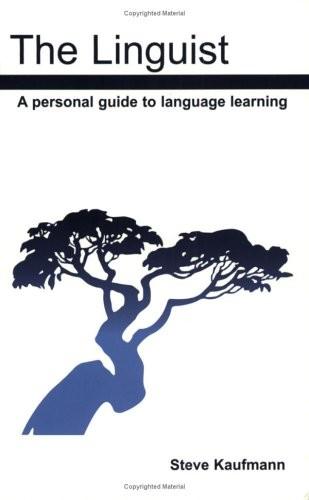
The Linguist: A Personal Guide to Language Learning
by
Steve Kaufmann
Published 15 Jan 2003
French has been made important and meaningful to them because of political changes in the Province of Quebec. As a result, Montreal is a vibrant city with a unique atmosphere of its own. There is an important point here. Obviously it is an advantage for a language learner to live in an environment where the second language is spoken. However, this does not guarantee language acquisition. You must have a positive attitude towards the language and culture you are trying to learn. You cannot learn to communicate if you rely on a classroom where the focus is on trying to pass tests. Only a genuine desire to communicate with another culture can ensure language learning success.

The Last Lingua Franca: English Until the Return of Babel
by
Nicholas Ostler
Published 23 Nov 2010
The Japanese found little anti-American sentiment on which to build solidarity, and after the war the main problem for the resurgence of English lay not in reestablishing the credibility of Americans, but in overcoming the damage that had been done to libraries, and the broken succession of language acquisition from native speakers. National independence was conceded by the USA, as promised, in 1946; yet a resurgence in enthusiasm for English occurred over the next three decades, Americans collaborating again with Filipinos to rebuild their school system. This was not dogmatically English-based. Among other measures recommended from 1958 to 1974 was that the First two grades in primary schools should be in vernacular languages.
…
Traditionally, where sense of social class was strong, members of lower classes who aspired to be upwardly mobile affected features of higher-class speech; but if they did it too much for their peers, they might have been called affected or la-di-da; yet if they did it too little, they might have been called common, rustic, or down-home. With comparable motives but in opposite direction, many people, often adolescents (sometimes individually, sometimes as a group) now have a contrarian, rebellious tendency to diverge from their own elders, whom naturally— by the usual process of language acquisition—they might have been expected to imitate. Instead, they adopt speech features (along with other behaviors) of some group whom they admire, especially if they think those elders disrespect or fear it. They may too misjudge their imitation and end up offending those they hoped to flatter. All these mimics are in effect trying to adopt aspects of someone else’s mother tongue as a useful lingua-franca for themselves, and mistakes can be made.
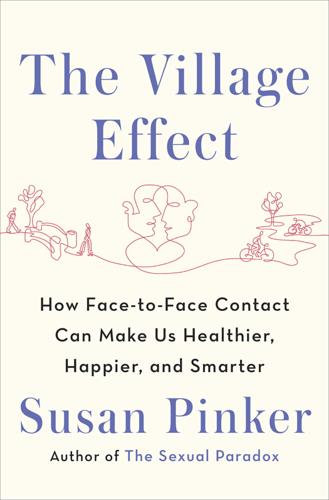
The Village Effect: How Face-To-Face Contact Can Make Us Healthier, Happier, and Smarter
by
Susan Pinker
Published 30 Sep 2013
Family meals trump almost every other activity—including reading books and playing with toys—when it comes to jumpstarting a child’s vocabulary, according to a 2001 study.34 More recently, in an astounding naturalistic experiment called the Human Speechome Project, MIT computer scientist Deb Roy and his wife, Northeastern University psycholinguist Rupal Patel, installed eleven omnidirectional fisheye cameras and fourteen high-performance microphones in the ceilings of their suburban Boston bungalow a few months before their first child was born. They have since recorded more than 250,000 hours of audio and video—nearly every waking moment of their son’s first three years. The point was to capture the uniquely social aspect of human language acquisition right where most babies learn to talk—at home. It will likely take decades to parse the two gigabytes of data recorded every day the pilot project was running. But a preliminary peek shows that there are social hotspots where much of the action happens. These hotspots are also where most of the baby’s “word births” take place, according to Roy, and one of the hottest of those spots is the kitchen.35 A parent’s banter with her toddler over the mashed potatoes turns out to be a pretty good predictor of that child’s vocabulary level a few years later, notwithstanding how high the child’s IQ might be, how educated the parents are, or how much they earn.36 Though Roy has found a strong link between how often a parent says a word and how early the child utters it, it’s not just about the number of words the child produces.37 Face-to-face conversations can prompt empathy too, through reading people’s facial expressions and engaging in back-and-forth dialogue about “counterfactuals,” which developmental psychologist Alison Gopnik defines as thinking about “what might have happened, but didn’t—the woulda-coulda-shouldas of life.”38 It might be mind-numbingly boring to play out a hypothetical scenario involving fictional monsters over and over and over again with a toddler.
…
Snow and Beals, “Mealtime Talk.” 34. Zehava Oz Weizman and Catherine E. Snow, “Lexical Output as Related to Children’s Vocabulary Acquisition: Effects of Sophisticated Exposure and Support for Meaning,” Developmental Psychology 37, no. 2 (2001). 35. Deb Roy, “New Horizons in the Study of Child Language Acquisition,” paper presented at the International Speech Communication Association Proceedings of Interspeech conference, Brighton, UK, 2009; Susan Pinker, “Someone to Watch over Me,” Globe and Mail, December 13, 2008; Brandon Roy, research scientist and doctoral student in the MIT media lab, email received November 21, 2011. 36.

A Framework for Understanding Poverty
by
Ruby K. Payne
Published 4 May 2012
In casual register, the pattern is to go around and around and finally get to the point. For students who have no access to formal register, educators become frustrated with the tendency of these students to meander almost endlessly through a topic. It is simply the manner in which information is organized in casual register. LANGUAGE ACQUISITION IN PRIMARY AND SECONDARY DISCOURSE The other meaning associated with discourse is the notion of primary and secondary discourse issues (Gee, 1987). Primary discourse is the language an individual first acquired. Secondary discourse is the language of the larger society that the individual must be able to use to function in the larger society.

The Rise and Fall of the Third Chimpanzee
by
Jared Diamond
Published 2 Jan 1991
Some starting points in the large literature on early language learning by children include Melissa Bowerman's chapter 'Language Development' m the Handbook of Cross-cultural Psychology: Developmental Psychology, vol. IV, pp. 93-185, edited by Harvey Triandis and Alastair Heron (Allyn and Bacon, Boston, 1981); Eric Wanner and Lila Gleitman, Language Acquisition: the State of the Art (Cambridge University Press, Cambridge, 1982); Dan Slobin, The Crosslinguistic Study of Language Acquisition, vols I—341—and II (Lawrence Erlbaum Associates, Hillsdale, New Jersey, 1985); and Frank S. Kessel, The Development of Language and Language Researchers: Essays in Honor of Roger Brown (Lawrence Erlbaum Associates, Hillsdale, New Jersey, 1988).

Them And Us: Politics, Greed And Inequality - Why We Need A Fair Society
by
Will Hutton
Published 30 Sep 2010
The gap in both cognitive and non-cognitive skills between advantaged and disadvantaged children opens up immediately after birth, and thereafter is quickly self-reinforcing and cross-fertilising.24 Crucially, language skills are learned in the first few years of life. Young children first learn to distinguish acoustically similar sounds (phonemes) that convey different meanings. This provides a foundation for the next phase of language acquisition, which involves segmenting phonemes into words. Sound segmentation then facilitates the task of attaching meaning to words and ultimately the ability to derive meaning from grammar and syntax. The human brain has up to 500 trillion synapses, the key links in the thinking process, and it is in childhood and adolescence that most are formed and hardened, even though learning continues throughout adulthood.
…
INDEX Aberdeen University, 263 ABN AMRO, 150 Abramovitch, Roman, 64, 65, 67 accountancy firms, 296 Acemoglu, Daron, 299 aerospace, 136, 219, 268 Afghanistan, 13, 102, 144, 322 Africa, 71–2, 322, 383, 385 AIG, 152, 175, 176 airline industry, 30, 91, 109, 134, 143 Akerlof, George, 43 Alcoa, 133 alcohol policy, 335 Alessandri, Piergiorgio, 151, 153 Amazon, 253 Anderson, Elizabeth, 79 angels, business, 244, 252 Anglo Irish Bank, 181 Apple Inc., 29–30, 65–6, 71, 253 apprenticeships, 10, 295 Arculus, Sir David, 180 Argentina, 368 Aristotle, 39, 274 ‘arms race’ effects, 105 Arup Group, 66, 67, 93 Asda, 93 Ashcroft, Lord, 344 Ashdown, Paddy, 141 Asian Tiger exports, 149, 208, 355 AT & T, 133–4 Atari, 30 BAA, 8, 257–8 baby boomer generation, 34, 372–3 ‘Baby P’ case, 10, 325–6 Bagehot, Walter, 156–7 Bailey, Bob, 16, 25 Baker, Kenneth, 276 Baldacci, Emanuele, 367 Baldwin, Stanley, 315 Balls, Ed, 138, 147, 338 Bank of America, 152, 158, 175, 192 Bank of England, 4, 7–8, 129, 148, 180, 208, 250, 339, 359; lender-of-last-resort function, 157, 158, 160; Monetary Policy Committee, 185, 186, 264; reserve requirements scrapped (1979), 161, 208 Bank of International Settlements (BIS), 169, 182 Bank of Scotland, 186, 251 bankers, 4–5, 25–6, 62, 63–4, 180, 188; errors that caused the crash, 188–96, 197–204; gambling culture, 7, 8; pay see pay of executives and bankers Bankers Trust (New York), 140, 167 banking and banks: see also under entries for individual organisations; bail-out of, 3, 7–8, 19, 24, 138, 152–3, 172, 175, 176, 181, 204–5, 210, 389, 392; balance sheets, 7, 160, 164, 165, 191, 208, 210; bank runs, 9, 156–7, 158, 175–6, 202; borrow short and lend long principle, 154, 155–6, 157, 158–9; capital ratios, 151, 158, 162–3, 169, 170, 207, 208; credit-rating agencies and, 151, 196, 207; deposit insurance and, 158, 160; diversification, 154–5, 157, 165, 199, 354; fairness/desert and, 64, 206–7; interbank money markets, 164, 170, 176, 187–8, 202, 204; investment banks, 6, 28, 42, 101, 103, 150–1, 158, 165, 166, 170, 172–6, 195–6, 207; maturity transformation, 155–6, 157, 158–9; need for network of specialist banks, 251–2, 265, 371; nineteenth-century collapses, 156–7; post-crunch deleverage pressures, 359; principles and strategies, 154–6, 157; regulation of see regulation; relationship finance, 244, 251–2, 256–7; remoteness of management, 173–4; required reforms of, 205–10, 251–2, 371; short-term structure of lending, 33; banking and banks – continued socially vital role of, 155, 157; subsidiaries and special purpose vehicles, 181; unproductive entrepreneurship and, 28, 101, 103; vast assets/loans/profits, 32, 138, 147, 170, 172, 201; zero loyalty of front-line staff, 174 Barclay brothers, 327 Barclays, 24, 176, 177–8, 181, 215, 296, 363 Barker, Kate, 185 Basel system, 158, 160, 163, 169, 170–1, 196, 385 Baumol, William, 101, 111, 116, 253, 256 Bayerische Landesbank, 196 Bear Stearns, 150, 152, 158–9, 166, 173–4, 187 Bebchuk, Lucian, 198 Becht, Bart, 82–3 Beckwith, John Lionel, 179 behavioural psychology, 44, 47–50, 59–61 Bekar, Clifford, 108, 263 Bell, Alexander Graham, 221 Ben & Jerry’s, 266 Benz, Matthias, 86 Berlusconi, Silvio, 317, 328 Bettelheim, Bruno, 86 Better Government Initiative, 313, 336–7 Better Regulation Task Force, 180 Bhagwati, Jagwad, 163 Big Bang (1986), 90, 162 bin Mahfouz, Khalid Salim, 333 biotechnology, 109, 229, 240, 263, 268 Birt, John, 324 Bischoff Inquiry, 178 BISTRO (broad index secured trust offering), 169, 170, 196 Black, Fisher, 191 Blair, Tony, 5, 17, 138, 141–3, 144, 148–9, 276–7, 313, 328, 342; centralisation of power, 14–15, 313, 334, 337, 341; Iraq War and, 14, 36, 144; Rupert Murdoch and, 318; neo-conservative economics and, 388; ‘third-way’ as enthronement of resignation, 389–90; welfare reforms, 81 Blanchflower, Danny, 264–5 Blanden, Jo, 283–4 Blankfein, Lloyd, 42, 63, 168 BMW, 91 Boeing, 136, 256 Bologna University, 261 Born, Brooksley, 182–3 Bowen, Jeremy, 323 Boyle, Susan, 314 BP, 216–17, 392 Branson, Richard, 30 Brazil, 354–5, 385 Bretton Woods system, 159 Brinkley, Ian, 233 Briscoe, Simon, 294 Bristol University, 263 British Airways (BA), 30, 91 British Broadcasting Company (BBC), 321, 322, 323, 329, 330–1, 350, 389 British National Party (BNP), 16, 24–5, 82 Britishness, 15–16, 124, 392–3, 395 Brompton folding bicycle, 103, 105 Brooks, Clem, 281, 282 Brown, Gordon, 5, 12, 141, 178, 302, 314, 328; centralisation of power, 14, 334, 337, 341; as Chancellor, 138, 143, 145–8, 215, 245; deal with Blair (1994), 148; Gillian Duffy blunder by, 394; general election (2010) and, 20, 378, 394; neo-conservative economics and, 144–8, 388; as visionless, 391; Where There is Greed: Margaret Thatcher and the Betrayal of Britain’s Future (1989), 144 Browne, John, 216 Brunel, Isambard Kingdom, 126 Buffett, Warren, 116, 173, 222 Building Schools for the Future programme, 371 building societies, demutualisation of, 156, 186 Buiter, Wilhelm, 172 Burrows, Paul, 59 Buscombe, Baroness, 332 Bush, George W., 17, 36, 135, 177 Cabinet Office, 218–19, 336, 337 Cable, Vincent, 220 Cambridge University, 9, 363 Cameron, David, 20, 179, 233–4, 235, 318, 338, 342; ‘Big Society’ policy, 19–20, 234, 271, 280 Campbell, Alastair, 141, 142, 224, 312 Canada, 121, 354, 358–9, 383 capital controls, abolition of, 32, 161 capitalism: see also entrepreneurs; innovation; amorality of, 16–19; ‘arms race’ effects, 105; boom and bust cycle, 181–7, 392; deregulation (from 1970s), 159–63, 388; fairness and, ix, x, 23–7, 41, 106, 122–3, 206–7, 210, 249, 385, 386, 394; as immutable force of nature, ix, 23, 40–2; incumbent firms, 29–30, 31, 105, 106, 110, 111–12, 253–5, 257, 297; interconnectedness of markets, 200–2, 204; knowledge-entrepreneurship dynamic, 27–8, 31, 103, 110–11, 112–13; liquidity as totemic, 199, 200, 202, 240, 243; need for ‘circuit breakers’, 197, 199, 202, 203; network theory and, 199–204, 206; required reforms of, 205–9, 215–16; stakeholder, x, 148–9; undue influence of, 32–3 Carlaw, Kenneth, 108, 263 Carnegie, Andrew, 195, 303 cars, motor, 91, 108, 109, 134, 269 Castells, Manuel, 317 Cayne, Jimmy, 173–4 CCTV cameras, 10 celebrity culture, 282, 314 central banks, 154, 157, 158, 160, 182, 185, 187, 208; see also Bank of England; Federal Reserve, 169–70, 176, 177, 183 Cerberus Capital Management, 177 Cervantes, Miguel de, 274 Channel 4, 330, 350 Charles I, King of England, 124–5 Charter One Financial, 150 chavs, mockery of, 25, 83, 272, 286–8 child poverty, 12, 21, 74–5, 83, 278, 279, 288–90, 291 China, x, 101, 112, 140, 144, 160, 226, 230, 354–5, 385; consumption levels, 375–6, 379, 380, 381; economic conflict with USA, 376–7, 378–80, 381, 382, 383; export led growth, 36, 169, 208, 226, 355–6, 375–7, 379–81, 382–3; rigged exchange rates, 36, 169, 355, 377, 378–9; surpluses of capital and, 149, 154, 169, 171, 208, 226, 375; unfairness of world system and, 383, 385 Christianity, 53, 54, 352, 353 Church of England, 128 Churchill, Winston, 138, 273, 313 Churchill Insurance, 150 Cisco, 253 Citigroup, 152, 158, 172, 177, 184, 202, 203, 242, 247 city academies, 278, 307 City of London, 34, 137, 138, 178–9, 252, 359; as incumbent elite, 14, 26, 31, 32–3, 210, 249, 355; in late nineteenth-century, 128–30; light-touch regulation of, 5, 32, 138, 145, 146–7, 151, 162, 187, 198–9; New Labour and, x–xi, 5, 19, 22, 142, 144–5, 355; remuneration levels see pay of executives and bankers civic engagement, 86, 313 civil service, 13, 221, 273, 312, 343 Clasper, Mike, 178 Clayton Act (USA, 1914), 133 Clegg, Nick, 22, 218, 318, 327–8, 342, 391 Clifton, Pete, 321 Clinton, Bill, 140, 177, 183 coalition government (from May 2010), 14, 20, 22, 37, 307, 311, 343, 346, 390–2; abolition of child trust fund, 302; capital spending cuts, 370–1; deficit reduction programme, xi, 19, 34, 214, 227, 357, 360–1, 364, 369–71, 373, 390–2; emergency budget (June 2010), 369–70; market fundamentalism and, 370; political reform commitment, 35, 341, 343–4, 346, 350, 390, 391; proposed financial reforms, 208, 209, 245, 252, 371; repudiation of Keynesian economics, xi, 390–1 Cohan, William, 158–9 Cohen, Ronald, 12, 245 collapse/crash of financial system, x, xi, 4, 9, 41, 144, 146, 152–4, 158–9, 168; costs of, 7, 19, 138, 152–3, 172, 214–15; errors responsible for, 136, 187–96, 197–204; global interconnectedness, 375, 382–3; lessening of internationalism following, 376–83; need to learn from/understand, 36–7; predictions/warnings of, 148, 153, 180, 182–5; recommended policy responses, 215–16; results of previous credit crunches, 358, 359–60, 361–2 collateralised debt obligations (CDOs), 155, 167–8, 174 colonialism, 109, 124 Commodity Future Trading Commission, 182–3 communism, collapse of in Eastern Europe, 16, 19, 135, 140, 163 competition, 29, 30, 33, 51, 156, 185, 186, 207–8, 251; see also ‘open-access societies’; City of London and, 160, 178, 179, 198–9; deregulated banking and, 160, 161, 163, 164, 178, 179, 181; European Union and, 251, 258, 259; fairness and, 89–90, 99, 272; incumbent elites/oligarchs and, 104, 114, 129–30, 131–4, 257; innovation and, 40, 114, 257–60; national authorities/regimes, 201–2, 257–60, 316, 318; state facilitation of, 31 Competition Commission, 257–8 computer games, 233 Confederation of British Industry (CBI), 4, 6–7 Conservative Party, xi, 5, 11, 14, 97–8, 220, 343, 378; broken Britain claims, 16, 227, 271; budget deficit and, 19, 224, 357, 360–1, 368, 379; City/private sector funding of, 179, 257, 344; decline of class-based politics, 341; deregulation and, 32, 160, 161; fairness and, 83, 302, 374, 390; general election (1992) and, 140–1; general election (2010) and, 20, 97, 227, 234, 271, 357, 374, 379, 390; Conservative Party – continued government policies (1979-97), 32, 81, 275–6, 290; inheritance/wealth taxes and, 74, 302–3; market fundamentalism and, 5, 17, 138, 147, 160, 161; poverty and, 21, 279; reduced/small state policy, 20, 22, 233–4, 235 construction industry, 5, 33, 268 consumer goods, types of, 266–7 Continental Illinois collapse, 152, 162 Convention on Modern Liberty, 340 Cook, Robin, 142 Cootner, Paul, 194–5 Copenhagen climate change talks (2009), 226, 231, 385 Corporate Leadership Council, US, 93 Corzine, Jon, 177 county markets, pre-twentieth-century, 90 Coutts, Ken, 363 Cowell, Simon, 314, 315 ‘creative destruction’ process, 111, 112, 134 creative industries, 11, 71, 355 credit cards, 64, 354 credit crunch: see collapse/crash of financial system credit default swaps, 151, 152, 166–8, 170, 171, 175, 176, 191, 203, 207 Crédit Lyonnais collapse, 152 credit-rating agencies, 151, 165, 175, 196, 197, 248, 269, 362, 388; funding of, 151, 196, 207 criminal activity/allegations, 7, 101, 103, 104–5, 138, 167–8 Crosby, James, 178 Cuba, 61 culture, British, 12, 187, 282, 314 Dacre, Paul, 324, 326, 329 Daily Mail, 218, 286, 288, 315, 324, 325–7, 339, 342 Daily Telegraph, 288, 317, 319, 327 Darling, Alistair, 149, 204, 252 Darwin, Charles, 31 Data Monitor, 186 Davies, Howard, 198 Davies, Nick, Flat Earth News, 319, 321, 323–4, 326, 331–2 de Gaulle, Charles, 65 debt, 33, 155, 209, 351–63; corporate/commercial, 8, 29, 181, 245, 248, 352, 354, 359, 363, 374; moral attitudes towards, 351–4, 357, 360–1; necessity of, 155, 351, 353, 354; private, 5, 186, 187, 210, 226, 279–80, 354–7, 359, 363, 373; public, 9, 34, 164, 166, 167, 182, 203, 214, 224–6, 356–7, 362–3, 375, 388, 393; sustainable level of, 356–7, 368–9 Defence Advanced Research Projects Agency (DARPA), 265 defence and armed forces, 34, 372 deficit, public, 4, 34, 213, 224–6, 335, 364–74; coalition’s reduction programme, xi, 19, 34, 214, 227, 357, 360–1, 364, 369–71, 373, 390–2, 393; need for fiscal policy, 224–5, 226, 357–8, 364, 365–9, 370, 374; speed of reduction of, 213, 224–5, 360–1, 368, 371 Delingpole, James, 287 Delong, Brad, 27, 106 democracy, 13–15, 235, 310–16, 333–48; centralisation of power and, 14–15, 35, 217, 313, 334, 337, 342; fair process and, 86, 89, 96–9; incumbent elites and, 35, 99; industrial revolution and, 128; media undermining of, 315–16, 317–18, 321–9, 333, 350; ‘open-access societies’ and, 136, 314 Democratic Party, US, 18, 140, 183, 379 Demos, 289 Deng Xiao Ping, 140 Denham, John, 21 deprivation and disadvantage, 10, 34, 288–93, 307–8, 393; low-earning households, 11–12, 13, 291, 361; weight of babies and, 13; young children and, 74–5, 83, 288–90 derivatives, 140, 145, 150–1, 164–8, 171, 175, 188, 207, 209; City of London and, 32, 137, 150–1, 157, 199; mathematical models (‘quants’) and, 188, 191; regulation and, 183, 197–8, 199 desert, due, concept of, 4, 24, 38–43, 45–7, 50–63, 64–8, 73–7, 80–2, 223, 395; see also effort, discretionary; proportionality; big finance and, 40–2, 82, 167, 174, 176, 210; debt and, 351–2; diplomacy/international relations and, 385–6; Enlightenment notions of, 53–6, 58–9, 112; luck and, 70, 73–7, 273; poverty relief systems and, 80–2, 277–8; productive entrepreneurship and, 102–3, 105–6, 112, 222, 392–3; taxation and, 40, 220, 266 Deutsche Bank, 170 developing countries, 71–2, 160, 354–5, 375, 376, 385 Diamond, Bob, 24 Dickens, Charles, 353 digitalisation, 34, 231, 320, 349, 350 Doepke, Matthias, 115–16 dot.com bubble, 9, 193 Drugs Advisory Panel, 11 Duffy, Gillian, 394 Durham University, 263 Dworkin, Ronald, 70 Dyson, James, 28, 33 East India Company, 130 Easyjet, 28, 233 eBay, 136 economic theory, 43–4, 188–9, 366; see also Keynesian economics; market fundamentalism economies of scale, 130–1, 254–5, 258 The Economist, 326, 330, 349 economy, British: see also capitalism; financial system, British; annual consumption levels, 375; balance of payments, 363–4; as ‘big firm’ economy, 254; change in landscape of trading partners, 230–1; coalition capital spending cuts, 370–1; collapse of tax base, 224, 368; cumulative loss of output caused by crash, 138, 153, 172, 214–15; desired level of state involvement, 234–5; domination of market fundamentalism, 16–17; economic boom, 3–4, 5–6, 12, 143, 173, 181–7, 244–5; fall in volatility, 365; fiscal deficit, 368; fiscal policy, 208, 224–5, 226, 357–8, 364–9, 370, 374; growth and, 9–10, 214–15, 218–19, 224, 359, 363; inefficient public spending, 335; investment in ‘intangibles’, 232–3; in late nineteenth-century, 128–30; ‘leading-edge’ sectors, 218–19; need for engaged long term ownership, 240–4, 249–51; as non-saver, 36, 354; potential new markets/opportunities, 231–3; public-private sector interdependence and, 219–22, 229–30, 261, 265–6, 391, 392; required reforms of, 20, 239–44, 249–52, 264–6, 371–4 see also national ecosystem of innovation; ‘specialising sectors’, 219; urgent need for reform, 36–7; volatility of, 297–8; vulnerability of after credit crunch, 358–64 economy, world: acute shortfall of demand, 375–6; Asian and/or OPEC capital surpluses and, 149, 153–4, 169, 171, 208, 226, 354, 375; conflicts of interest and, 137, 138; deregulation (from 1970s), 159–63; emerging powers’ attitudes to, 226; entrenched elites and, 137–8, 210; fall in volatility, 365; international institutions as unfair, 383, 385; London/New York axis, 149, 150–1, 157–8, 160, 187, 202; need for international cooperation, 357–8, 379–80, 381–3, 384, 385–6; post-crunch deleverage pressures, 359–60, 374–5; protectionism dangers, 36, 358, 376–7, 378, 379, 382, 386; savers/non-savers imbalance, 36, 169, 208, 222, 355, 356, 375–6, 378–83; shift of wealth from West to East, 36, 383–4; sovereign debt crises, 167, 203, 214; unheeded warnings, 182–5; wrecking of European ERM, 140, 144 Edinburgh University, 145 education, 10, 20–1, 128, 131, 272–4, 276, 278, 292–5, 304–8, 343; Building Schools for the Future programme, 371; cognitive and mental skills, 288–90, 304–6; private, 13, 114, 264–5, 272–3, 276, 283–4, 293–5, 304, 306 effort, discretionary, 50, 53, 54–5, 58–60, 80, 90–1, 114, 134; see also desert, due, concept of; fair process and, 91–4; indispensability and, 65–7; innovation and invention, 62, 65, 102–3, 105–6, 112, 117, 131, 223, 262–3, 392–3; luck and, 26–7, 65, 67, 70, 71, 73–4, 75–7; productive/unproductive, 43, 46–7, 51–2, 62, 64–5, 102–3, 392–3; proportionate reward for, 26, 39–40, 44, 47, 61, 74, 76–7, 84, 122, 272, 273, 2 84 egalitarianism, 27, 53–4, 55–6, 61, 75, 78–80, 144, 341, 343; Enlightenment equal worth concept, 53, 55, 59–60 Ehrenfeld, Rachel, 333 Eisman, Steve, 207 electoral politics: see also general election (6 May 2010); general elections, 97, 138, 277, 315; fair process and, 96–9; franchise, 128; general election (1992), x, 138, 140–1, 144, 148, 277; general election (1997), x, 138, 141 electricity, 134, 228, 256 electronic trading, 105 elites, incumbent, 23, 31–3, 99, 131; City of London, 14, 26, 31, 32–3, 210, 249, 355; competition and, 104, 113, 114, 129–30, 131–4, 257; democracy and, 35, 99; Enlightenment and, 122; history of (from 1880s), 131–4; history of in Britain (to 1900), 124–30; innovation and, 29–30, 110, 111–12, 113, 114, 115, 116; modern big finance and, 135, 137–8, 180, 210, 387–9; in ‘natural states’, 111, 113, 114–15, 116, 123–4, 127; New Labour’s failure to challenge, x–xi, 14, 22, 388, 389–90; world economy and, 137–8, 210 EMI, 28, 247, 248 employment and unemployment, 6, 75, 291–3, 295, 300, 373, 393; employment insurance concept, 298–9, 301, 374; lifelong learning schemes, 300, 301; lifelong savings plans, 300; unemployment benefit, 81, 281 Engels, Friedrich, 121–2 English language as lingua franca, 124 Enlightenment, European, 22, 30–1, 146, 261, 314–15; economics and, 104, 108–9, 116–17, 121–3; notions of fairness/desert, 53–6, 58–9, 112, 122–3, 394; science and technology and, 31, 108–9, 112–13, 116–17, 121, 126–7 Enron affair, 147 entrepreneurs: see also innovation; productive entrepreneurship; capitalist knowledge dynamic, 27–8, 31, 110–11, 112–13; challenges of the status quo, 29–30; Conservative reforms (1979-97) and, 275; private capital and, 241; public-private sector interdependence and, 219–22, 229–30, 261, 265–6, 391, 392; rent-seeking and, 61–2, 63, 78, 84, 101, 105, 112, 113–14, 116, 129, 135, 180; unproductive, 28–9, 33, 61–2, 63, 78, 84, 101–2, 103–5, 180 environmental issues, 35–6, 71–2, 102, 226, 228, 231, 236, 385, 390, 394; due desert and, 68; German Greens and, 269 Erie Railroad Company, 133 Essex County Council, 325, 332 European Commission, 298 European Exchange Rate Mechanism (ERM), 140, 144, 166 European Union (EU), 11, 82, 179, 379–80, 383–4, 385; British media and, 15, 328, 378; Competition Commissioner, 251, 258, 259; scepticism towards, 15, 36, 328, 377, 378, 386 eurozone, 377 Fabian Society, 302–3 factory system, 126 fairness: see also desert, due, concept of; proportionality; abuse/playing of system and, 24–5, 27; asset fairness proposals, 301–3, 304; behavioural psychology and, 44, 47–50, 59–61; Blair’s conservative view of, 143; Britishness and, 15–16, 392–3, 395; capitalism and, ix, x, 23–7, 41, 106, 122–3, 206–7, 210, 249, 385, 386, 394; challenges to political left, 78–83; coalition government (from May 2010) and, 22, 37; commonly held attitudes, 44, 45–7; deficit reduction and, 226, 227, 374; economic and social determinism and, 56–8; Enlightenment notions of, 53–6, 58–9, 112, 122–3, 394; fair process, 84–94, 96, 98–9, 272; as foundation of morality, 24, 26, 45, 50; individual responsibility and, 39, 78–9; inequality in Britain, 78, 80, 275–6, 277–8, 342; international relations and, 226, 385–6; ‘Just World Delusion’, 83; luck and, 72–7; management-employee relationships, 90–2; models/frameworks of, 43–58; need for shared understanding of, 25, 37, 43; partisanship about, 42–3; politicians/political parties and, 22, 83, 271–2, 302–3, 374, 391–2; popular support for NHS and, 75, 77, 283; pre-Enlightenment notions, 52–3; shared capitalism and, 66, 92–3; state facilitation of, ix–x, 391–2, 394–5; welfare benefits to migrants and, 81–2, 282, 283, 284 Farnborough Sixth Form College, 294 Federal Reserve, 169–70, 176, 177, 183 Fees Act (1891), 128 Fertile Crescent, 106 feudalism, European, 53–4, 74, 104, 105 financial instruments, 103, 148, 157, 167–8 Financial Services and Markets Act (2001), 198 Financial Services Authority (FSA), 24, 147, 162, 178, 198–9, 208 financial system, British: see also capitalism; economy, British; Asian and/or OPEC capital surpluses and, 149, 154, 354; big finance as entrenched elite, 136, 137–8, 176, 178–80, 210, 387–9; declining support for entrepreneurship, 241; deregulation (1971), 161; fees and commissions, 33; importance of liquidity, 240, 243; lack of data on, 241; London/New York axis, 149, 150–1, 157–8, 160, 187, 202; massive growth of, 137, 138, 209, 219; need for tax reform, 209–10; regulation and see regulation; required reforms to companies, 249–50; savings institutions’ share holdings, 240–1; short termism of markets, 241, 242–3; unfairness of, 138, 210 Financial Times, 12, 149, 294, 330, 349, 361 Fink, Stanley, 179 fiscal policy, 208, 224–5, 226, 357–8, 364–9, 374; coalition rejection of, 370 fish stocks, conservation of, 394 Fitch (credit-rating agencies), 248 flexicurity social system, 299–301, 304, 374 Forbes’ annual list, 30 Ford, Henry, 195, 302 foreign exchange markets, 32, 161, 164, 165, 168, 363, 367; China’s rigged exchange rate, 36, 169, 355, 377, 378–9; currency options, 166, 191; eurozone, 377 foreign takeovers of British firms, 8, 388 Fortune magazine, 94 Foster, Sir Christopher, 313 foundation schools, 307 France, 51–2, 123–4, 163, 372, 375, 377 free trade, 163, 334, 379 Frey, Bruno, 60, 86 Friedman, Benjamin, 282–3 Fukuyama, Francis, 140 Fuld, Dick, 192 Future Jobs Fund, 373 G20 countries, 209, 358, 368, 374 Galliano, John, 143 Gardner, Howard, 274, 305–6 gated communities, 13 Gates, Bill, 71 Gates, Bill (Senior), 222 Gaussian distribution, 190–1, 194 ‘gearing’, 6 general election (6 May 2010), 97, 142, 179, 214, 217, 227, 234, 271, 314, 318, 327–8, 334, 378; Gillian Duffy incident, 394; result of, xi, 20, 345–6, 390 ‘generalised autoregressive conditional heteroskedasicity’ (GARCH), 194 genetically modified crops, 232 Germany, 36, 63, 244, 262, 269, 375–6, 379, 380; export led growth, 355–6, 375, 381–2; Fraunhofer Institutes, 252, 264; Greek bail-out and, 377; pre-1945 period, 128, 129, 134, 382, 383 Gieve, Sir John, 339–40 Gilligan, Andrew, 329 Gladwell, Malcolm, 76–7 Glasgow University, 323 Glass-Steagall Act, 162, 170, 202–3 Glastonbury festival, 143 globalisation, 32, 98, 140, 143, 144, 153–4, 163, 182, 297, 363, 366, 380 Goldman Sachs, 42, 63, 103, 150, 167–8, 174, 176, 177, 205 Goodwin, Sir Fred, 7, 150, 176, 340 Google, 131, 136, 253, 255, 258, 262 Goolsbee, Austin, 52 Gorbachev, Mikhail, 140 Gough, Ian, 79 Gould, Jay, 133 Gould, Philip, 142 government: see also democracy; political system, British; cabinet government, 312, 334, 337; centralisation of power, 14–15, 35, 217, 313, 334, 337, 341, 342; control of news agenda, 14, 224, 313; disregard of House of Commons, 14–15, 223, 339, 345; Number 10 Downing Street as new royal court, 14, 337, 338, 346, 347; press officers/secretaries, 14, 180, 224, 312; Prime Ministerial power, 337, 344, 345, 346 GPS navigation systems, 233, 265 Gray, Elisha, 221 Great Depression, 159, 162, 205, 362 Greece: classical, 25, 26, 38, 39, 44–5, 52–3, 59, 96, 107, 108; crisis and bail-out (2010), 167, 371, 377, 378 Green, Sir Philip, 12, 29, 33 Green Investment Bank, proposed, 252, 371 Greenhead College, Huddersfield, 294 Greenspan, Alan, 145–6, 165, 177, 183, 184, 197–8 Gregory, James, 277 growth, economic: Britain and, 9–10, 214–15, 219, 221, 359, 364; education and, 305–6; export led growth, 36, 169, 208, 226, 355–6, 375–7, 378–83; social investment and, 280–1 GSK, 219, 254 the Guardian, 319, 330, 349 Gupta, Sanjeev, 367 Gutenberg, Johannes, 110–11 Habsburg Empire, 127 Haines, Joe, 312 Haji-Ioannous, Stelios, 28 Haldane, Andrew, 8, 151, 153, 193, 214, 215 the Halifax, 186, 251 Hamilton, Lewis, 64, 65 Hammersmith and Fulham, Borough of, 167 Hampton, Sir Philip, 173 Hands, Guy, 28, 178, 246–8 Hanley, Lynsey, 291, 293, 302 Hanushek, Eric, 305–6 Hart, Betty, 289 Harvard University, 47, 62, 198 Hashimoto administration in Japan, 362 Hastings, Max, 217–18 Hauser, Marc, 47–50 Hawley, Michael, 65–6 Hayward, Tony, 216–17 HBOS, 157, 158, 178, 251 health and well-being, 9, 75, 77, 106, 232, 233, 290–1; see also National Health Service (NHS) Heckman, James, 290 hedge funds, 6, 21, 103, 157–8, 167–8, 172, 203, 205, 206, 240; collapses of, 152, 173–4, 187, 202; as destabilisers, 166–7, 168; destruction of ERM, 140, 144, 166; near collapse of LTCM, 169–70, 183, 193, 200–1 hedging, 164, 165–6 Heinz, Henry John, 302 Hermes fund management company, 242 Herrman, Edwina, 179 Herstatt Bank collapse, 152 Hetherington, Mark, 84 Hewitt, Patricia, 180 Hewlett-Packard, 30 Hills Report on social housing, 290 Hilton, Paris, 304 Himmelfarb, Gertrude, 146 Hirst, Damien, 12 history, economic, 121–36, 166, 285–6, 353–4 Hobhouse, Leonard, 220, 222, 234, 235, 261, 266 Hobsbawm, Eric, 100 Hoffman, Elizabeth, 60 Holland, 113, 124, 230 Honda, 91, 269 Hong Kong, 168 Hopkins, Harry, 300 Horton, Tim, 277 House of Commons, 14–15, 223, 312–13, 337–9, 345 House of Lords, 15, 128, 129, 312, 334, 344, 346–7 housing, social, 10, 289, 290–1, 292, 308–9 housing cost credits, 308–9 HSBC, 181, 251 Huhne, Chris, 346 Hunt family, sale of cattle herds, 201 Hurka, Thomas, 45–6 Hutton, Will, works of, x; The State We’re In, x, 148–9 IBM, 29, 164, 254 Iceland, 7, 138 ICT industry, 9, 29–30, 109, 134, 135–6, 182, 229 immigration, 11, 143, 326, 328, 342, 343, 386, 394; from Eastern Europe, 82, 281–2, 283; welfare state and, 81–2, 281–2, 283, 284 incapacity benefit, 27 the Independent, 93, 330 Independent Safeguarding Authority, 339 India, 144, 226, 230, 254, 354–5 individual responsibility, 17, 38, 39, 78–9 individualism, 54, 57, 66, 111, 221, 281, 341, 366; capitalism/free market theories and, ix, 17, 19, 27, 40, 145, 221, 234–5 Indonesia, 168 Industrial and Commercial Finance Corporation (now 3i), 250 industrial revolution, 28, 112, 115, 121–3, 124, 126–8, 130, 315 inflation, 6, 32, 355, 364, 365; targets, 163, 165, 208, 359 Ingham, Bernard, 312 innovation: see also entrepreneurs; national ecosystem of innovation; as collective and social, 40, 131, 219–22, 261, 265–6, 388; comparisons between countries, 67; competition and, 40, 114, 257–60; development times, 240, 243; discretionary effort and, 62, 65, 102–3, 105–6, 131, 222, 392–3; dissemination of knowledge and, 110–11, 112–13, 219–22, 265–6; due desert and, 40, 62, 67, 112, 117; ‘financial innovation’, 63–4, 138, 147, 149, 153–4, 182; general-purpose technologies (GPTs), 107–11, 112, 117, 126–7, 134, 228–9, 256, 261, 384; high taxation as deterrent, 104, 105; history of, 107–17, 121–7, 131–4, 221; increased pace of advance, 228–9, 230, 266–7; incremental, 108, 254, 256; incumbent elites and, 29–30, 104, 106, 109, 111–12, 113, 114, 115, 116, 257; large firms and, 251–2, 254–5; as natural to humans, 106–7, 274; need for network of specialist banks, 251–2, 265, 371; in ‘open-access societies’, 109–13, 114, 116–17, 122–3, 126–7, 131, 136, 315; patents and copyright, 102, 103, 105, 110, 260–1, 263; private enterprise and, 100–1; regulation and, 268–70; risk-taking and, 6, 103, 111, 189; short term investment culture and, 33, 242–3, 244; small firms and, 252, 253–4, 255–6; universities and, 261–5 Innovation Fund, 21, 251, 252 Institute of Fiscal Studies, 275–6, 363, 368–9, 372 Institute of Government, 334, 335, 337, 343 insurance, 165–6, 187, 240, 242 Intel, 255, 256 intellectual property, 260–1 interest rates, 164, 191, 352–3, 354, 357, 359, 360, 361, 362, 367, 380 internal combustion engine, 28, 109, 134 International Monetary Fund (IMF), 9, 152–3, 177–8, 187, 207, 226, 383, 384; Asian currency crisis (1997) and, 168–9; proposed bank levy and financial activities tax, 209; support for fiscal policy, 367 internet, 11, 28, 52, 109, 134, 227, 256, 265; news and politics on, 316–17, 321, 349; pay-walls, 316, 349; as threat to print media, 324, 331, 349 iPods, 105, 143 Iraq War, 14–15, 18, 36, 144, 329 Ireland, 138 iron steamships, 126 Islam, 352, 353 Islamic fundamentalism, 283, 384 Israel, 251, 322–3 Italy, 101, 103, 317, 328 ITN, 330, 331 James, Howell, 180 Japan, 36, 67, 140, 163, 168, 244, 369, 375, 376, 385, 386; credit crunch (1989-92), 359–60, 361–2, 382; debt levels, 356, 362, 363; incumbent elites in early twentieth-century, 134; Tokyo Bay, 254; Top Runner programme, 269 Jenkins, Roger, 296 Jobcentre Plus, 300 Jobs, Steve, 29–30, 65–6, 71 John Lewis Group, 66, 67, 93, 246 Johnson, Boris, 179 Johnson, Simon, 177 Jones, Tom, 242 Joseph Rowntree Foundation, 21, 278–9 journalism, 318–21, 323–4, 326–7 Jovanovic, Boyan, 256 JP Morgan, 169, 191–2, 195–6 judges, 15 justice systems, 30–1, 44–5, 49; symbolised by pair of scales, 4, 40 Kahneman, Daniel, 94–5 Kant, Immanuel, 73, 112, 274 Kay, John, 175 Kennedy, Helena, 340 Keynesian economics, x, xi, 184, 190, 196–7, 354, 362, 390–1 Kindleberger, Charles, 184 King, Mervyn, 213 Kinnock, Neil, 142 kitemarking, need for, 267 Klenow, Peter, 52 Knetsch, Jack, 94–5 Knight, Frank, Risk, Uncertainty and Profit (1921), 189, 191, 196–7 knowledge: capitalist advance of, 27–8, 31, 110–11, 112–13; public investment in learning, 28, 31, 40, 131, 220, 235, 261, 265 knowledge economy, 8, 11–12, 34, 135–6, 229–33, 258, 273–4, 341, 366; credit growth and, 355; graduate entry to, 295; large firms and, 251–2, 254–5; small firms and, 252, 253–4, 255–6, 261; state facilitation of, 219–22, 229–30 Koizumi administration in Japan, 362 Koo, Richard, 360, 361–2 Kuper, Simon, 352 Kwak, James, 64, 177 labour market, 52, 62, 83, 95; flexibility, 5, 275, 276, 299, 364–5, 387 laissez-faire ideology, 153, 198–9, 259 Laker, Freddie, 30 Lambert, Richard, 6–7 language acquisition and cognitive development, 288, 289 Large Hadron Collider, 263 Latin American debt crisis, 164 Lavoisier, Antoine, 31 Lazarus, Edmund, 179 Leahy, Sir Terry, 295 Learning and Skills Council, 282, 300 left wing politics, modern, 17, 38, 78–83 Lehman Brothers, 150, 152, 165, 170, 181, 192, 204 lender-of-last-resort function, 155, 158, 160, 187 Lerner, Melvin, 83 leverage, 6, 29, 154–6, 157, 158, 172, 179, 180, 198, 204, 209–10, 254, 363; disguised on balance sheet, 181, 195; effect on of credit crunches, 358, 359, 360, 361, 374–5; excess/massive levels, 7, 147–8, 149, 150–1, 158, 168, 170, 187, 192, 197, 203; need for reform of, 206, 207, 208; private equity and, 245–6, 247 Lewis, Jemima, 282, 287 Lewis, Joe, 12 libel laws, 332–3, 348–9 Liberal Democrats, xi, 11, 98, 141, 343, 360–1, 368; general election (2010) and, 97, 142, 179, 271, 390 libertarianism, 234 Likierman, Sir Andrew, 180 limited liability (introduced 1855), 353–4, 363 Lind, Allan, 85 Lindert, Peter, 280–1 Lipsey, Richard, 108, 263 Lisbon earthquake (1755), 54 Lisbon Treaty Constitution, 328 literacy and numeracy, 20–1 livestock fairs, pre-twentieth-century, 90 Lloyds Bank, 176, 178, 186, 202, 204, 251, 259 Lo, Andrew, 195 loan sharks, illegal, 291 local government, 307, 347–8 Locke, John, 54–5, 59 London School of Economics (LSE), 246 London Stock Exchange, 90, 162 London Underground, financing of, 336, 389 lone parent families, 292 Long Term Capital Management (LTCM), 169–70, 183, 193, 194, 200–1 long-term incentive plans (LTIPs), 6 Loomes, Graham, 59 luck, 23, 26–7, 38, 39, 40, 41, 67, 68, 69–77, 222, 273, 393–4; diplomacy/international relations and, 385–6; disadvantaged children and, 74–5, 83, 288–90; executive pay and, 138; taxation and, 73–4, 75, 78, 303 Luxembourg, 138 MacDonald, Ramsey, 315 Machiavelli, Niccolo, 62 Machin, Steve, 283–4 Macmillan Committee into City (1931), 179 Madoff, Bernie, 7 mafia, Italian, 101, 104–5 Major, John, 138, 180, 279, 334 Malaysia, 168 malls, out-of-town, 143 Mandelbrot, Benoit, 194, 195 Mandelson, Peter, 21, 24, 142, 148, 220 manufacturing sector, decline of, 5, 8, 219, 272, 292, 341, 363 Manza, Jeff, 281, 282 Marconi, 142–3 market fundamentalism, 9–19, 32–3, 40–2, 366; belief in efficiency of markets, 188–9, 190, 193, 194, 235–9, 366; coalition government (from May 2010) and, 370; collapse of, 3–4, 7–9, 19, 20, 219–20, 235, 392; Conservative Party and, 5, 17, 138, 147, 160, 161; domination of, 5–6, 14, 16–17, 163, 364–5, 387–90; likely resurgence of, 5, 8; New Labour and, x–xi, 5, 19, 144–9, 388, 389–90; post-communist fiasco in Russia, 135; rejection of fiscal policy, 224–5, 364–5, 367 mark-to-market accounting convention, 175 Marland, Lord Jonathan, 179 Marquand, David, 328 Marsh, Jodie, 64, 65 Marx, Karl, 56–8, 121–2 Maslow’s hierarchy of needs, 232, 274–5 mass production, 109, 134, 182 Masters, Blythe, 196 mathematical models (‘quants’), 105, 149, 151, 152, 165, 169, 188, 190–6, 203; extensions and elaborations, 194; Gaussian distribution, 190–1, 194; JP Morgan and, 195–6 Matthewson, Sir George (former chair of RBS), 25 Maude, Francis, 180 Mayhew, Henry, 285–6 McCartney, Paul, 247 McGoldrick, Mark, 174 McKinsey Global Institute, 253, 358–9, 360, 363 McQueen, Alexander, 143 media, mainstream, 6, 35, 312, 315–20, 321–32, 348–50; commoditisation of information, 318–20, 321; communications technology and, 316, 320, 349; domination of state by, 14, 16, 223–4, 338, 339, 343; fanatical anti-Europeanism, 15, 328, 378; foreign/tax exile ownership of, 218; hysterical tabloid campaigns, 10–11, 298, 319–20; ‘info-capitalism’, 317–18, 327, 328, 342; lauding of celebrity, 281, 314; modern 24/7 news agenda, 13, 224, 321, 343; regional newspapers, 331; as setter of agenda/narrative, 327–31, 342; television news, 330–1; undermining of democracy, 315–16, 317–18, 321–9, 333, 350; urgent need for reform, 35, 218, 344, 348–50, 391; view of poverty as deserved, 25, 53, 83, 281, 286; weakness of foreign coverage, 322, 323, 330 Mencken, H.L., 311 mergers and takeovers, 8, 21, 33, 92, 245, 251, 258, 259, 388 Merkel, Angela, 381–2 Merrill Lynch, 150, 170, 175, 192 Merton, Robert, 169, 191 Meucci, Antonnio, 221 Mexico, 30, 385 Meyer, Christopher, 332 Michalek, Richard, 175 Microsoft, 71, 114, 136, 253, 254, 258–9 Milburn, Alan, 273 Miles, David, 186–7 Milgram, Stanley, 200 millennium bug, 319 Miller, David, 70, 76, 77 minimum wage, 142, 278 Minsky, Hyman, 183, 185 Mirror newspapers, 319, 329 Mlodinow, Leonard, 72–3 MMR vaccine, 327 mobile phones, 30, 134, 143, 229, 349 modernity, 54–5, 104 Mokyr, Joel, 112 monarchy, 15, 312, 336 Mondragon, 94 monetary policy, 154, 182, 184, 185, 208, 362, 367 monopolies, 74, 102, 103, 160, 314; history of, 104, 113, 124, 125–6, 130–4; in the media, 30, 317, 318, 331, 350; modern new wave of, 35, 135–6, 137–8, 201–2, 258–9; ‘oligarchs’, 30, 65, 104 Monopolies and Mergers Commission, 258, 318 Moody’s (credit-ratings agency), 151, 175 morality, 16–27, 37, 44–54, 70, 73; see also desert, due, concept of; fairness; proportionality; debt and, 351–4, 357, 360–1 Morgan, JP, 67 Morgan, Piers, 329 Morgan Stanley, 150 Mulas-Granados, Carlos, 367 Murdoch, James, 389 Murdoch, Rupert, 317–18, 320, 327 Murphy, Kevin, 62, 63 Murray, Jim ‘Mad Dog’, 321 Myners, Paul, 340 Nash bargaining solution, 60 National Audit Office, 340 National Child Development Study, 289–90 national ecosystem of innovation, 33–4, 65, 103, 206, 218, 221, 239–44, 255–9, 374; state facilitation of, 102, 219–22, 229–30, 233, 251–2, 258–66, 269–70, 392 National Health Service (NHS), 21, 27, 34, 92, 265, 277, 336, 371–2; popular support for, 75, 77, 283 national insurance system, 81, 277, 302 national strategy for neighbourhood renewal, 278 Navigation Acts, abolition of, 126 Neiman, Susan, 18–19 neo-conservatism, 17–18, 144–9, 387–90 network theory, 199–201, 202–4, 206; Pareto curve and, 201–2 New Economics Foundation, 62 New Industry New Jobs strategy, 21 New Labour: budget deficit and, 224, 335, 360, 368, 369; business friendly/promarket policies, x–xi, 139–40, 142, 145, 146–7, 162, 198–9, 382; City of London and, x–xi, 5, 19, 22, 142–3, 144–5, 355; decline of class-based politics, 341; failure to challenge elites, x–xi, 14, 22, 388, 389–90; general election (1992) and, 138, 140–1, 144, 148, 277; general election (2005) and, 97; general election (2010) and, 20, 271, 334, 374, 378; light-touch regulation and, 138, 145, 146–7, 162, 198–9; New Industry New Jobs strategy, 21; one-off tax on bank bonuses, 26, 179, 249; record in government, 10–11, 19, 20–2, 220, 276–80, 302, 306, 334–6, 366–7, 389–90; reforms to by ‘modernisers’, 141; responses to newspaper campaigns, 11 New York markets, 140, 152, 162; Asian and/or OPEC capital surpluses and, 169, 171, 354; London/New York axis, 149, 150–1, 157–8, 160, 188, 202 Newsweek, 174 Newton, Isaac, 31, 127, 190 NHS Direct, 372 Nicoli, Eric, 13 non-executive directors (NEDs), 249–50 Nordhaus, William, 260 Nordic countries, 262; Iceland, 7, 138; Norway, 281; Sweden, 264, 281 North, Douglas, 113, 116, 129–30 Northern Rock, 9, 156, 157, 158, 186, 187–8, 202, 204, 251, 340–1 Norton Publishing, 93 Nozick, Robert, 234, 235 nuclear non-proliferation, 226, 384, 394 Nussbaum, Martha, 79 Obama, Barack, 18, 183, 380, 382–3, 394–5 the Observer, 141, 294, 327 Office for Budget Responsibility, 360 Office of Fair Trading (OFT), 257, 258 OFSTED, 276 oil production, 322; BP Gulf of Mexico disaster (2010), 216–17, 392; finite stocks and, 230, 384; OPEC, 149, 161, 171; price increase (early 1970s), 161; in USA, 130, 131, 132 Olsen, Ken, 29 Olympics (2012), 114 open markets, 29, 30, 31, 40, 89, 92, 100–1, 366, 377, 379, 382, 384; see also ‘open-access societies’; as determinants of value, 51–2, 62; fairness and, 60–1, 89–91, 94–6; ‘reference prices’ and, 94–6 ‘open-access societies’, 134, 135, 258, 272, 273, 275, 276, 280–1, 394; Britain as ‘open-access society’ (to 1850), 124, 126–7; democracy and, 136, 314; Enlightenment and, 30–1, 314–15, 394; innovation and invention in, 109–13, 114, 116–17, 122–3, 126–7, 131, 136, 315; partial political opening in, 129–30; US New Freedom programme, 132–3 opium production, 102 options, 166, 188, 191 Orange County derivatives losses, 167 Organisation for Economic Co-operation and Development (OECD), 180, 337, 373 Orwell, George, 37 Osborne, George, 147, 208, 224, 245, 302, 338 Overend, Gurney and Co., 156–7 Oxbridge/top university entry, 293–4, 306 Oxford University, 261 Page, Scott, 204 Paine, Tom, 347 Pareto, Vilfredo, 201–2 Paribas, 152, 187 Parkinson, Lance-Bombardier Ben, 13 participation, political, 35, 86, 96, 99 Paulson, Henry, 177 Paulson, John, 103, 167–8 pay of executives and bankers, 3–4, 5, 6–7, 22, 66–7, 138, 387; bonuses, 6, 25–6, 41, 174–5, 176, 179, 208, 242, 249, 388; high levels/rises of, 6–7, 13, 25, 82–3, 94, 172–6, 216, 296, 387, 393; Peter Mandelson on, 24; post-crash/bail-outs, 176, 216; in private equity houses, 248; remuneration committees, 6, 82, 83, 176; shared capitalism and, 66, 93; spurious justifications for, 42, 78, 82–3, 94, 176, 216 pension, state, 81, 372, 373 pension funds, 240, 242 Pettis, Michael, 379–80 pharmaceutical industry, 219, 255, 263, 265, 267–8 Phelps, Edmund, 275 philanthropy and charitable giving, 13, 25, 280 Philippines, 168 Philippon, Thomas, 172–3 Philips Electronics, Royal, 256 Pimco, 177 piracy, 101–2 Plato, 39, 44 Player, Gary, 76 pluralist state/society, x, 35, 99, 113, 233, 331, 350, 394 Poland, 67, 254 political parties, 13–14, 340, 341, 345, 390; see also under entries for individual parties political system, British: see also democracy; centralised constitution, 14–15, 35, 217, 334; coalitions as a good thing, 345–6; decline of class-based politics, 341; devolving of power to Cardiff and Edinburgh, 15, 334; expenses scandal, 3, 14, 217, 313, 341; history of (to late nineteenth-century), 124–30; lack of departmental coordination, 335, 336, 337; long-term policy making and, 217; monarchy and, 15, 312, 336; politicians’ lack of experience outside politics, 338; required reforms of, 344–8; select committee system, 339–40; settlement (of 1689), 125; sovereignty and, 223, 346, 347, 378; urgent need for reform, 35, 36–7, 218, 344; voter-politician disengagement, 217–18, 310, 311, 313–14, 340 Pommerehne, Werner, 60 population levels, world, 36 Portsmouth Football Club, 352 Portugal, 108, 109, 121, 377 poverty, 278–9; child development and, 288–90; circumstantial causes of, 26, 283–4; Conservative Party and, 279; ‘deserving’/’undeserving’ poor, 276, 277–8, 280, 284, 297, 301; Enlightenment views on, 53, 55–6; need for asset ownership, 301–3, 304; political left and, 78–83; the poor viewed as a race apart, 285–7; as relative not absolute, 55, 84; Adam Smith on, 55, 84; structure of market economy and, 78–9, 83; view that the poor deserve to be poor, 25, 52–3, 80, 83, 281, 285–8, 297, 301, 387; worldwide, 383, 384 Power2010 website, 340–1 PR companies and media, 322, 323 Press Complaints Commission (PCC), 325, 327, 331–2, 348 preventative medicine, 371 Price, Lance, 328, 340 Price, Mark, 93 Prince, Chuck, 184 printing press, 109, 110–11 prisoners, early release of, 11 private-equity firms, 6, 28–9, 158, 172, 177, 179, 205, 244–9, 374 Procter & Gamble, 167, 255 productive entrepreneurship, 6, 22–3, 28, 29–30, 33, 61–2, 63, 78, 84, 136, 298; in British history (to 1850), 28, 124, 126–7, 129; due desert/fairness and, 102–3, 105–6, 112, 223, 272, 393; general-purpose technologies (GPTs) and, 107–11, 112, 117, 126–7, 134, 228–9, 256, 261, 384 property market: baby boomer generation and, 372–3; Barker Review, 185; boom in, 5, 143, 161, 183–4, 185–7, 221; bust (1989-91), 161, 163; buy-to-let market, 186; commercial property, 7, 356, 359, 363; demutualisation of building societies, 156, 186; deregulation (1971) and, 161; Japanese crunch (1989-92) and, 361–2; need for tax on profits from home ownership, 308–9, 373–4; property as national obsession, 187; residential mortgages, 7, 183–4, 186, 356, 359, 363; securitised loans based mortgages, 171, 186, 188; shadow banking system and, 171, 172; ‘subprime’ mortgages, 64, 152, 161, 186, 203 proportionality, 4, 24, 26, 35, 38, 39–40, 44–6, 51, 84, 218; see also desert, due, concept of; contributory/discretionary benefits and, 63; diplomacy/ international relations and, 385–6; job seeker’s allowance as transgression of, 81; left wing politics and, 80; luck and, 73–7, 273; policy responses to crash and, 215–16; poverty relief systems and, 80–1; profit and, 40, 388; types of entrepreneurship and, 61–2, 63 protectionism, 36, 358, 376–7, 378, 379, 382, 386 Prussia, 128 Public Accounts Committee, 340 Purnell, James, 338 quantitative easing, 176 Quayle, Dan, 177 race, disadvantage and, 290 railways, 9, 28, 105, 109–10, 126 Rand, Ayn, 145, 234 Rawls, John, 57, 58, 63, 73, 78 Reagan, Ronald, 135, 163 recession, xi, 3, 8, 9, 138, 153, 210, 223, 335; of 1979-81 period, 161; efficacy of fiscal policy, 367–8; VAT decrease (2009) and, 366–7 reciprocity, 43, 45, 82, 86, 90, 143, 271, 304, 382; see also desert, due, concept of; proportionality Reckitt Benckiser, 82–3 Regional Development Agencies, 21 regulation: see also Bank of England; Financial Services Authority (FSA); Bank of International Settlements (BIS), 169, 182; Basel system, 158, 160, 163, 169, 170–1, 196, 385; big as beautiful in global banking, 201–2; Big Bang (1986), 90, 162; by-passing of, 137, 187; capital requirements/ratios, 162–3, 170–1, 208; dismantling of post-war system, 149, 158, 159–63; economists’ doubts over deregulation, 163; example of China, 160; failure to prevent crash, 154, 197, 198–9; Glass-Steagall abolition (1999), 170, 202–3; light-touch, 5, 32, 138, 151, 162, 198–9; New Deal rules (1930s), 159, 162; in pharmaceutical industry, 267–8; as pro-business tool, 268–70; proposed Financial Policy Committee, 208; required reforms of, 267, 269–70, 376, 377, 384, 392; reserve requirements scrapped (1979), 208; task of banking authorities, 157; Top Runner programme in Japan, 269 Reinhart, Carmen, 214, 356 Repo 105 technique, 181 Reshef, Ariell, 172–3 Reuters, 322, 331 riches and wealth, 11–13, 272–3, 283–4, 387–8; see also pay of executives and bankers; the rich as deserving of their wealth, 25–6, 52, 278, 296–7 Rickards, James, 194 risk, 149, 158, 165, 298–302, 352–3; credit default swaps and, 151, 152, 166–8, 170, 171, 175, 176, 191, 203, 207; derivatives and see derivatives; distinction between uncertainty and, 189–90, 191, 192–3, 196–7; employment insurance concept, 298–9, 301, 374; management, 165, 170, 171, 189, 191–2, 193–4, 195–6, 202, 203, 210, 354; securitisation and, 32, 147, 165, 169, 171, 186, 188, 196; structured investment vehicles and, 151, 165, 169, 171, 188; value at risk (VaR), 171, 192, 195, 196 Risley, Todd, 289 Ritchie, Andrew, 103 Ritter, Scott, 329 Robinson, Sir Gerry, 295 Rogoff, Ken, 214, 356 rogue states, 36 Rolling Stones, 247 Rolls-Royce, 219, 231 Rome, classical, 45, 74, 108, 116 Roosevelt, Franklin D., 133, 300 Rothermere, Viscount, 327 Rousseau, Jean-Jacques, 56, 58, 112 Rousseau, Peter, 256 Rowling, J.K., 64, 65 Rowthorn, Robert, 292, 363 Royal Bank of Scotland (RBS), 25, 150, 152, 157, 173, 181, 199, 251, 259; collapse of, 7, 137, 150, 158, 175–6, 202, 203, 204; Sir Fred Goodwin and, 7, 150, 176, 340 Rubin, Robert, 174, 177, 183 rule of law, x, 4, 220, 235 Russell, Bertrand, 189 Russia, 127, 134–5, 169, 201, 354–5, 385; fall of communism, 135, 140; oligarchs, 30, 65, 135 Rwandan genocide, 71 Ryanair, 233 sailing ships, three-masted, 108 Sandbrook, Dominic, 22 Sands, Peter (CEO of Standard Chartered Bank), 26 Sarkozy, Nicolas, 51, 377 Sassoon, Sir James, 178 Scholes, Myron, 169, 191, 193 Schumpeter, Joseph, 62, 67, 111 science and technology: capitalist dynamism and, 27–8, 31, 112–13; digitalisation, 34, 231, 320, 349, 350; the Enlightenment and, 31, 108–9, 112–13, 116–17, 121, 126–7; general-purpose technologies (GPTs), 107–11, 112, 117, 126–7, 134, 228–9, 256, 261, 384; increased pace of advance, 228–9, 253, 297; nanotechnology, 232; New Labour improvements, 21; new opportunities and, 33–4, 228–9, 231–3; new technologies, 232, 233, 240; universities and, 261–5 Scotland, devolving of power to, 15, 334 Scott, James, 114–15 Scott Bader, 93 Scott Trust, 327 Second World War, 134, 313 Securities and Exchanges Commission, 151, 167–8 securitisation, 32, 147, 165, 169, 171, 186, 187, 196 self-determination, 85–6 self-employment, 86 self-interest, 59, 60, 78 Sen, Amartya, 51, 232, 275 service sector, 8, 291, 341, 355 shadow banking system, 148, 153, 157–8, 170, 171, 172, 187 Shakespeare, William, 39, 274, 351 shareholders, 156, 197, 216–17, 240–4, 250 Sher, George, 46, 50, 51 Sherman Act (USA, 1890), 133 Sherraden, Michael, 301 Shiller, Robert, 43, 298, 299 Shimer, Robert, 299 Shleifer, Andrei, 62, 63, 92 short selling, 103 Sicilian mafia, 101, 105 Simon, Herbert, 222 Simpson, George, 142–3 single mothers, 17, 53, 287 sixth form education, 306 Sky (broadcasting company), 30, 318, 330, 389 Skype, 253 Slim, Carlos, 30 Sloan School of Management, 195 Slumdog Millionaire, 283 Smith, Adam, 55, 84, 104, 112, 121, 122, 126, 145–6 Smith, John, 148 Snoddy, Ray, 322 Snow, John, 177 social capital, 88–9, 92 social class, 78, 130, 230, 304, 343, 388; childcare and, 278, 288–90; continued importance of, 271, 283–96; decline of class-based politics, 341; education and, 13, 17, 223, 264–5, 272–3, 274, 276, 292–5, 304, 308; historical development of, 56–8, 109, 115–16, 122, 123–5, 127–8, 199; New Labour and, 271, 277–9; working-class opinion, 16, 143 social investment, 10, 19, 20–1, 279, 280–1 social polarisation, 9–16, 34–5, 223, 271–4, 282–5, 286–97, 342; Conservative reforms (1979-97) and, 275–6; New Labour and, 277–9; private education and, 13, 223, 264–5, 272–3, 276, 283–4, 293–5, 304; required reforms for reduction of, 297–309 social security benefits, 277, 278, 299–301, 328; contributory, 63, 81, 283; flexicurity social system, 299–301, 304, 374; to immigrants, 81–2, 282, 283, 284; job seeker’s allowance, 81, 281, 298, 301; New Labour and ‘undeserving’ claimants, 143, 277–8; non-contributory, 63, 79, 81, 82; targeting of/two-tier system, 277, 281 socialism, 22, 32, 38, 75, 138, 144, 145, 394 Soham murder case, 10, 339 Solomon Brothers, 173 Sony, 254–5 Soros, George, 166 Sorrell, Martin, 349 Soskice, David, 342–3 South Korea, 168, 358–9 South Sea Bubble, 125–6 Spain, 123–4, 207, 358–9, 371, 377 Spamann, Holger, 198 special purpose vehicles, 181 Spitzer, Matthew, 60 sport, cheating in, 23 stakeholder capitalism, x, 148–9 Standard Oil, 130–1, 132 state, British: anti-statism, 20, 22, 233–4, 235, 311; big finance’s penetration of, 176, 178–80; ‘choice architecture’ and, 238, 252; desired level of involvement, 234–5; domination of by media, 14, 16, 221, 338, 339, 343; facilitation of fairness, ix–x, 391–2, 394–5; investment in knowledge, 28, 31, 40, 220, 235, 261, 265; need for government as employer of last resort, 300; need for hybrid financial system, 244, 249–52; need for intervention in markets, 219–22, 229–30, 235–9, 252, 392; need for reshaping of, 34; pluralism, x, 35, 99, 113, 233, 331, 350, 394; public ownership, 32, 240; target-setting in, 91–2; threats to civil liberty and, 340 steam engine, 110, 126 Steinmueller, W.

"They Take Our Jobs!": And 20 Other Myths About Immigration
by
Aviva Chomsky
Published 23 Apr 2018
Bilingual education is based on the premise that “there is no need to hold children back in English while they learn school subjects in their native language, or to hold them back academically while they acquire English. Quite the contrary. A generation of research and practice has shown that developing academic skills and knowledge in students’ vernacular supports their acquisition of English.”15 Most voters, though, don’t have the time or the resources to explore the research on language acquisition, and they don’t know much about how bilingual programs work. Furthermore, as Crawford explains, “because bilingual education is controversial, it is reported less as a pedagogical field than a political issue, with opposing ‘sides’ given equal time.”16 Rather like the issue of evolution, or global warming: there is an overwhelming scientific consensus on the basic issues, but because they are politically controversial, they are often presented in the media as if there were equal scientific validity to the opposing political views.

Natural language processing with Python
by
Steven Bird
,
Ewan Klein
and
Edward Loper
Published 15 Dec 2009
, http://www.joe lonsoftware.com/articles/Unicode.html 122 | Chapter 3: Processing Raw Text The problem of tokenizing Chinese text is a major focus of SIGHAN, the ACL Special Interest Group on Chinese Language Processing (http://sighan.org/). Our method for segmenting English text follows (Brent & Cartwright, 1995); this work falls in the area of language acquisition (Niyogi, 2006). Collocations are a special case of multiword expressions. A multiword expression is a small phrase whose meaning and other properties cannot be predicted from its words alone, e.g., part-of-speech (Baldwin & Kim, 2010). Simulated annealing is a heuristic for finding a good approximation to the optimum value of a function in a large, discrete search space, based on an analogy with annealing in metallurgy.
…
CSLI Publications, Stanford, CA, 2005. [BNC, 1999] BNC. British National Corpus, 1999. [http://info.ox.ac.uk/bnc/]. [Brent and Cartwright, 1995] Michael Brent and Timothy Cartwright. Distributional regularity and phonotactic constraints are useful for segmentation. In Michael Brent, editor, Computational Approaches to Language Acquisition. MIT Press, 1995. [Bresnan and Hay, 2006] Joan Bresnan and Jennifer Hay. Gradient grammar: An effect of animacy on the syntax of give in New Zealand and American English. Lingua 118: 254–59, 2008. [Budanitsky and Hirst, 2006] Alexander Budanitsky and Graeme Hirst. Evaluating wordnet-based measures of lexical semantic relatedness.

The Alignment Problem: Machine Learning and Human Values
by
Brian Christian
Published 5 Oct 2020
For more on the idea of a machine-learning approach to a learning “curriculum,” see, e.g., Bengio et al., “Curriculum Learning.” 24. Selfridge, Sutton, and Barto, “Training and Tracking in Robotics.” 25. Elman, “Learning and Development in Neural Networks.” However, see also, e.g., Rohde and Plaut, “Language Acquisition in the Absence of Explicit Negative Evidence,” which reported different findings from Elman’s in this regard. 26. This particular experiment was noteworthy for the way that the pig’s performance deteriorated over time, something that challenged classical models of behaviorism. See Breland and Breland, “The Misbehavior of Organisms.” 27.
…
“Learning Decision Lists.” Machine Learning 2, no. 3 (1987): 229–46. Roder, Beverly J., Emily W. Bushnell, and Anne Marie Sasseville. “Infants’ Preferences for Familiarity and Novelty During the Course of Visual Processing.” Infancy 1, no. 4 (2000): 491–507. Rohde, Douglas L. T., and David C. Plaut. “Language Acquisition in the Absence of Explicit Negative Evidence: How Important Is Starting Small?” Cognition 72, no. 1 (1999): 67–109. Roland, Alex, and Philip Shiman. Strategic Computing: DARPA and the Quest for Machine Intelligence, 1983–1993. MIT Press, 2002. Romanes, George John. Animal Intelligence. New York: D.
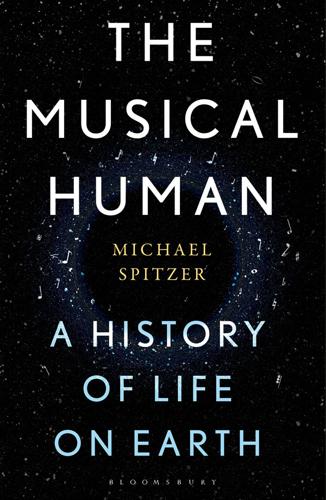
The Musical Human: A History of Life on Earth
by
Michael Spitzer
Published 31 Mar 2021
The propensity to perform has been taught out of them and an iron curtain has come down. On the one side of this barrier there are the creative composers and musicians. On the other side sits the audience. One symptom of this divide is the idea of creativity as God-given genius, rather than as a universal birthright, like language acquisition. The contrast with the rest of the world is stark. In the 1960s and 1970s, the British anthropologist John Blacking wrote a series of ground-breaking books on the Venda people of the Northern Transvaal region of South Africa, including Venda Children’s Songs and How Musical is Man?24 Blacking showed that, for the Venda, music-making – or ‘musicking’ as many scholars now call music as an activity – was communal, participatory and seemingly as natural as breathing.
…
The difficulty for Mithen’s theory is that it is impossible to prove that Hmmmmm protomusic wasn’t sung by earlier hominins, such as heidelbergensis. Conversely, it is rather more likely that Neanderthals had proper language, the issue being whether it was as advanced as that of sapiens. In a remarkable modern development, a strain of the FOXP2 gene – the gene associated with language acquisition – was recovered from Neanderthal fossils.45 This seems strongly to suggest that Neanderthals had evolved complex vocal learning just like us. On the other hand, it was later shown that humans express FOXP2 in a more refined way.46 So the current consensus is that Neanderthals and humans both evolved language, although theirs was probably a less sophisticated version.

How Emotions Are Made: The New Science of the Mind and Brain
by
Lisa Feldman Barrett
Published 6 Mar 2017
Working with Emotional Intelligence. New York: Bantam. ———. 2006. Emotional Intelligence. New York: Random House. Golinkoff, Roberta Michnick, Dilara Deniz Can, Melanie Soderstrom, and Kathy Hirsh-Pasek. 2015. “(Baby) Talk to Me: The Social Context of Infant-Directed Speech and Its Effects on Early Language Acquisition.” Current Directions in Psychological Science 24 (5): 339–344. Goodkind, Madeleine, Simon B. Eickhoff, Desmond J. Oathes, Ying Jiang, Andrew Chang, Laura B. Jones-Hagata, Brissa N. Ortega, Yevgeniya V. Zaiko, Erika L. Roach, and Mayuresh S. Korgaonkar. 2015. “Identification of a Common Neurobiological Substrate for Mental Illness.”
…
Kuhl, Patricia K. 2007. “Is Speech Learning ‘Gated’ by the Social Brain?” Developmental Science 10 (1): 110–120. ———. 2014. “Early Language Learning and the Social Brain.” Cold Spring Harbor Symposia on Quantitative Biology 79: 211–220. Kuhl, Patricia, and Maritza Rivera-Gaxiola. 2008. “Neural Substrates of Language Acquisition.” Annual Review of Neuroscience 31: 511–534. Kuhn, Thomas S. 1966. The Structure of Scientific Revolutions. Chicago: University of Chicago Press. Kundera, Milan. 1994. The Book of Laughter and Forgetting. New York: HarperCollins. Kupfer, Alexander, Hendrik Müller, Marta M. Antoniazzi, Carlos Jared, Hartmut Greven, Ronald A.
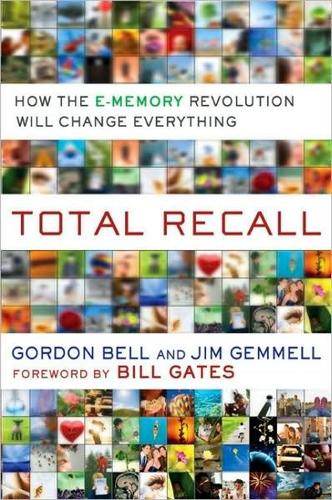
Total Recall: How the E-Memory Revolution Will Change Everything
by
Gordon Bell
and
Jim Gemmell
Published 15 Feb 2009
See also World Wide Web and cloud computing and data backup services and gossip and higher learning and implementation of Total Recall and information availability and the Millennial Generation and social values and unified communications inventory management IOgear iPhone Iraq War iTunes J Jaimes, Alexandro Jim Gray Endowed Chair in Computer Systems Joe Bill Jones, William JPEG files. See also pictures and photographs K Kaiser Permanente Kandel, Eric keywords Kindle knowledge mining L La Femme Nikita (television) language, development of language acquisition laptops. See also notebook computers large-format scanners Laura (virtual health coach) law and legal issues. See also privacy issues and audio recordings and copyrights and data entanglement and data storage and health documents and institutional memory and legal documents and lie detectors and recorded imagery and total data collection learning styles lectures LeDoux, Joseph Lee, Sharon legacy media legacy.com Leopard operating system LexisNexis libraries Library of Congress lie detectors life blogging vs. lifelogging life lines LifeLog lifelogging adapting to and data availability described and digital immortality and implementation of Total Recall and life blogging and memory aids and MyLifeDisk and recordings and time management and the Total Recall revolution lifetime periods LinkedIn links.

Emotional design: why we love (or hate) everyday things
by
Donald A. Norman
Published 10 May 2005
Moreover, the learning is automatic: we may have to go to school to learn to read and write, but not to listen and speak. Spoken language—or signing, for those who are deaf—is natural. Although languages differ, they all follow certain universal regularities. But once the first language has been learned, it highly influences later language acquisition. If you have ever tried to learn a second language beyond your teenage years, you know how different it is from learning the first, how much harder, how reflective and conscious it seems compared to the subconscious, relatively effortless experience of learning the first language. Accents are the hardest thing to learn for the older language-learner, so that people who learn a language later in life may be completely fluent in their speech, understanding, and writing, but maintain the accent of their first language.
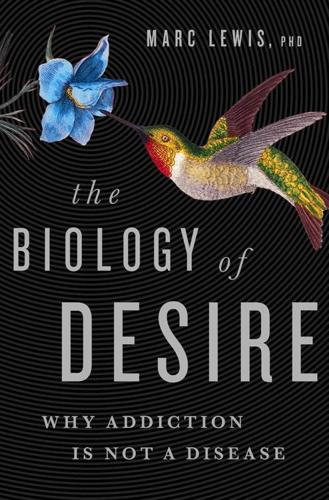
The Biology of Desire: Why Addiction Is Not a Disease
by
Marc Lewis Phd
Published 13 Jul 2015
Brain change underlies the transformations in thinking and feeling that characterize early adolescence. In fact, developmental neuroscientists estimate that “as many as 30,000 synapses may be lost per second over the entire cortex during the pubertal/adolescent period.”24 Brain change is necessary for language acquisition and impulse control in early childhood, and for learning to drive a car, play a musical instrument, or appreciate opera later in life. Brain change underlies religious conversion, becoming a parent, and, not surprisingly, falling in love. Brains have to change for learning to take place. Without physical changes in brain matter, learning is impossible.
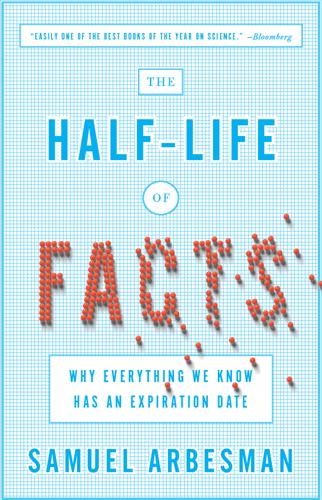
The Half-Life of Facts: Why Everything We Know Has an Expiration Date
by
Samuel Arbesman
Published 31 Aug 2012
For example, while lengthening voice onset time causes a similar change in a listener, doing the opposite, shortening one’s voice onset time, does not cause the conversant to also shorten theirs. Henry Kissinger, who has lived in the United States for well over seventy years, still has a very strong German accent; his idiolect has not changed one bit. Understanding language acquisition and change at the individual level is a complex and highly multidimensional issue. But ultimately, seeing how language changes, and how we mentally respond to this, can give us insights into how we adapt to the facts around us. In an article about taboos and curse words, the linguist John McWhorter examines how this linguistic change happens around us: One reads with bemusement at scientists once perplexed at unearthing enormous bones of creatures now nonexistent.

Poorly Made in China: An Insider's Account of the Tactics Behind China's Production Game
by
Paul Midler
Published 18 Mar 2009
Chinese contained thousands of characters, which were acquired only through rote memorization. While some argued that English was just as difficult for native Chinese speakers to learn as Chinese was for Americans, the Chinese at least had a great deal of experience in cramming information. The level of skill required to achieve fluency in Mandarin turned Chinese into language acquisition machines. Americans almost always felt more intimidated to learn Chinese than the other way around. I had just begun to wonder what Tina might be doing with herself when she called from her cell phone. She sounded upset, like she was in some kind of trouble. She was sobbing and could not speak clearly.

Talk on the Wild Side
by
Lane Greene
Published 15 Dec 2018
W. 37, 160–61 frames 183–207, 213 Franklin, Benjamin 52 Freeman, Tom 42 French 35, 96, 113, 136–9, 151, 155 Academy 95 in Canada 134, 143–9 gender 71–2 Revolution 137 spelling 103 fusional languages 116–17, 120–21, 124, 125 G Galileo 45–6 Garner, Bryan 53–8, 210 gender French 71–2 he/she 33–5 Georgetown University 67–8, 69–70 German 4, 21, 35, 96, 106, 108, 129, 133, 140–41 spelling 102, 104 syntax 113 gerunds 39 Gilman, Ward 52 Gingrich, Newt 183, 184 glide-deletion 127 Gomorrah 133 Google Books 54, 55, 58, 107 Google Translate 83–4, 86 Gove, Michael 171–2, 201 Graham, Steve 172 grammaticalisation 118, 120 Gray, Thomas 106–7 Great Vowel Shift (GVS) 96–7, 99–102, 109 Greek 49–51, 53 Grégoire, Abbé 137 Grice, Elizabeth 47 Grizzard, Lewis 130–31 Gwynne, Nevile Martin 32–4, 36–7, 39–42, 44, 45–50, 51, 52, 56, 57, 61, 64, 162, 210 H “habeo” 117–18 Halpern, Mark 182 Hansard 81–2 Hardy, Thomas 38 hashtags 110–11 Hawaiian 124 “he/him” 3–4, 33–4, 50, 51, 54, 61–2, 160, 162 Hebrew 149–50 Heffer, Simon 48–9, 162, 210 Heller, Nathan 61, 62 Hemingway, Ernest 38 Hitler, Adolf 149, 200 homophones 24, 85, 96–7, 100 Hong Kong 140 Hooke, Robert 16 How to Speak Southern 127–30 human rights 133 hybrid approach to language acquisition 87–8 I “I/me” 13, 50, 51, 52, 62, 157, 170 IBM 67–8, 69–70, 81–3 Icelandic 123, 135, 154 idioms 74, 128, 158, 159 imitation game 65–7 inflections 4–5, 117, 120–21, 122–4 Irish 134, 146 irregular verbs 87–8, 129 Islam 138 isolating language 115, 117, 119, 120–21 “it was” see “to be” Italian 96, 113, 118, 133, 136–7 Izzard, Eddie 104 J James, Henry 38 Japan 135, 154 jargon 13, 137, 199 Jeantel, Rachel 178 Jenner, Henry 151 Johns, Esther 153 Johnson, Boris 201 Johnson, Mark 191–2 Johnson, Samuel 37, 105–7, 110, 111–12 Jones, Van 198 Jonson, Ben 157, 167 Judaism 149–50 k Kamm, Oliver 45, 47 Kant, Immanuel 213 Kennedy, Ted 189 Key, Keegan-Michael 175–6 Kierkegaard, Søren 62 Kipling, Rudyard 38 L labelling 183–90 Labov, William 98 Lakoff, George 191–3, 194–7, 198, 200, 213 “language governs thought” idea 22–3, 25, 30, 33, 42–5, 64 language instinct hypothesis 29 language models in language technology 82, 86 language policy 134–6 The Last Man on Earth 156–7 Latin 3–4, 49–51, 53, 117–18, 136, 151, 157 Law 101 144–5, 146, 148 Le Chevalier, Bob 26, 27, 29 learnability score 24 Lecas, Massimo 145 legal writing 53–7 legalese 53 Leibniz, 65 Levesque, Hector 80 Liberman, Mark 43 linguistic relativity 22 linguistic technology 43–4 Little, Tony 48 logic 61, 67, 78 Chapter 2, passim Logical Language Group 26 logical languages 15–31, 78, 209–10 Loglan 23–7, 209 Lojban 10, 26–31, 78, 209 Lowth, Bishop Robert 158 lumpers 132–3 Luntz, Frank 183–4, 185–6 M machines 64–91, 210–11 McWhorter, John 12 Majonæse War 102–3 La Mama Grilled Cheese 146 Mandarin 23, 113, 121, 122, 124, 139–40 Martin, Trayvon 178 “masterly/masterful” 55 Merriam-Webster’s Dictionary of English Usage (MWDEU) 52–3, 57–8 metaphors 7–8, 154, 190–94, 197, 199, 206, 212 Microsoft 86 Mitchell, Steve 127–30 modal verbs 57, 118–19, 172, 174 mondegreens 24 Moore, Benjamin 51 Moore, Charles 47 morphemes 115–16, 117, 119–20 morphological inflection 122–4 multilingualism 131–55, 212 Munroe, Randall 44 Murray, Lindley 158 Myaamia (Miami) 150 N National Academy of Sciences 70 “nauseous” 109 Navi’i language 20 negations 60 neural networks 86, 87, 89, 211 New Zealand 134 Newspeak 10, 213–14 Newton, Isaac 45 “nice” 108, 159 Nineteen Eighty-Four 10, 206, 213–14 nominative case 3, 50, 51, 61, 160, 173 Northern Cities Shift 98–9, 100 Norwegian 123 “nucular/nuclear” 103 numbers 43–4 O Obama, Barack 163–4, 174, 204 objective form 3–4, 51 Office Québécois pour la Langue Française (OQLF) 145 Ogden, C.
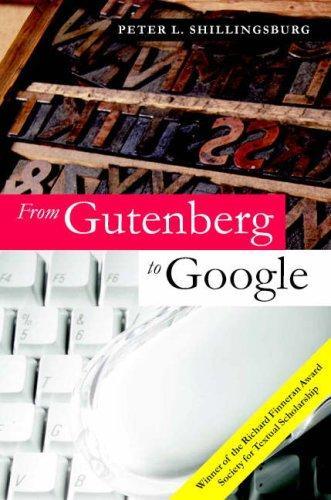
From Gutenberg to Google: electronic representations of literary texts
by
Peter L. Shillingsburg
Published 15 Jan 2006
The extent to which language is ‘‘hard wired’’ biologically into the neuron capacities of the brain, though a debated topic, is one indication of possible, if not probable, success in communication by way of language. That is to say, if – as is more and more widely accepted among neurologists and linguists who study language acquisition, particularly in children – if language capacity and the principles of language development and use have a biological base shared by all humans, then it follows that, at some level, language is likely to work successfully. This idea entails the notions, also upheld by both neurologists and linguists that the capacity to think precedes the capacity to put thoughts into words – that the ability to perceive, to categorize, to generalize, to imagine, and to conceive abstract thoughts existed before a language of expression with its semantic and syntactic rules and conventions was developed.3 But this biological view of language is complicated by the even more widely held view that language has been socially and culturally developed beyond the biological rudimentary capacities.

Most Likely to Succeed: Preparing Our Kids for the Innovation Era
by
Tony Wagner
and
Ted Dintersmith
Published 17 Aug 2015
Programs and curricula that emphasize speaking and ‘living’ the culture from the get go can create a genuine learning atmosphere (using a variety of techniques) that will acclimate students and generate a feeling of ‘being there.’ Our goal is for every classroom to have comfortable and engaged students who are willing to take linguistic risks; progress comes when one is not restricted by the fear of making mistakes. And, of course, the younger one is when one begins the language acquisition journey, the better.” College admissions generally value an applicant who completed four full years of foreign language study in high school. They review grades and AP test scores—none of which indicate whether the student has gained speaking proficiency. And since AP exams represent the high-water mark of high school foreign language accomplishment, teachers focus on an approach that will lead to high AP exam scores.
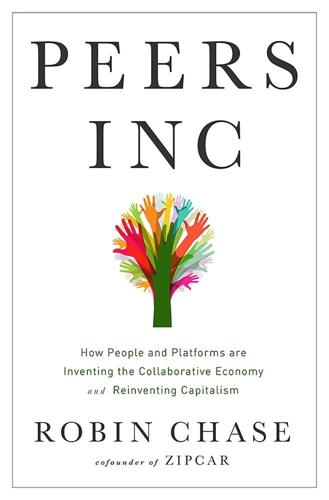
Peers Inc: How People and Platforms Are Inventing the Collaborative Economy and Reinventing Capitalism
by
Robin Chase
Published 14 May 2015
The translations happen quickly as well: Duolingo’s algorithms turn the real-time efforts of those thousands of students into translations as accurate as those of skilled professionals in a matter of hours. But the real beauty of Duolingo is the spectacular iterative learning, the kind that can only take place with a Peers Inc company. To understand how, let’s first look at the standard unit for language acquisition—one semester of college-level instruction, or about 130 hours of instruction. Now put yourself into the shoes of a professor. During your first semester of teaching, you have perhaps thirty students. By the end of the semester, you’ll have learned what you are bad at, how you might improve your teaching techniques, and what works (or doesn’t) among those thirty students.
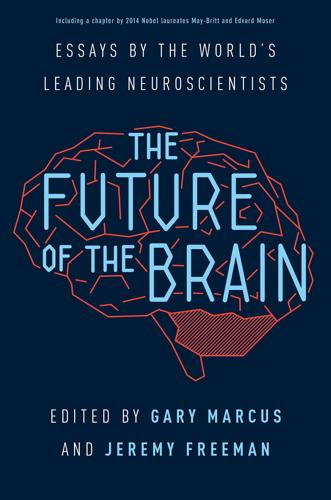
The Future of the Brain: Essays by the World's Leading Neuroscientists
by
Gary Marcus
and
Jeremy Freeman
Published 1 Nov 2014
The infrastructure of linguistics—building on formally specified concepts such as syllable or noun phrase or discourse representation, and such—provides a structured body of concepts that allows linguists to investigate generalizations about languages that speakers bring to bear, about the course of language acquisition, about online language processing, about historical change of languages, and so on. The neurosciences—defining units of analysis such as dendrite or cortical column or long-term potentiation—outline the structural and functional features of the brain. But how do these ostensibly different units of analysis relate?

I, Warbot: The Dawn of Artificially Intelligent Conflict
by
Kenneth Payne
Published 16 Jun 2021
The researchers thought the difference might lie in our large, but nonetheless still limited, brain capacity—perhaps we’d lost the sort of pattern recognition skills that the chimps still clearly retained when we developed language? Possibly. There is something to the idea of a trade-off, and language acquisition may be a part of that. But an alternative possibility is that humans developed social skills that became our default way of tackling adversarial, dynamic interactions like these. Specifically, we developed that rich ‘theory of mind’. Richer at least than the chimpanzees. For humans, match-mismatch, like chess and Go, is a game of intuiting what the other player is thinking.
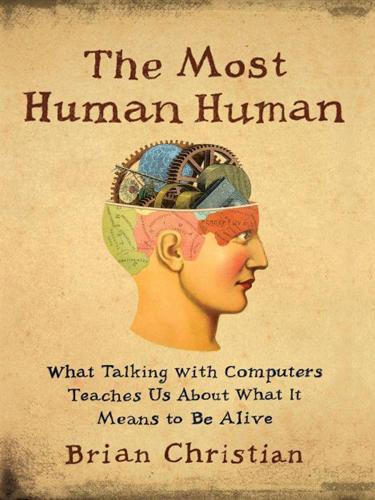
The Most Human Human: What Talking With Computers Teaches Us About What It Means to Be Alive
by
Brian Christian
Published 1 Mar 2011
This Shannon entropy spike-and-decay pattern (incidentally, this is also what a musical note looks like on a spectrograph), this downward sloping ramp, may be closer to the root of what a word is than anything having to do with the spacebar.18 And we see the Lempel-Ziv chunking process not just in language acquisition but in language evolution as well. From “bullpen” to “breadbox” to “spacebar” to “motherfucker,” pairings that occur frequently enough fuse into single words.19 (“In general, permanent compounds begin as temporary compounds that become used so frequently they become established as permanent compounds.
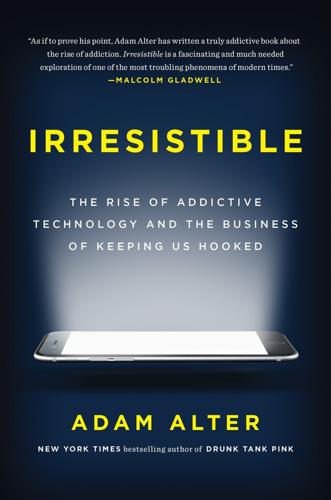
Irresistible: The Rise of Addictive Technology and the Business of Keeping Us Hooked
by
Adam L. Alter
Published 15 Feb 2017
Using head-mounted cameras, researchers have shown that infants instinctively follow their parents’ eyes. Distracted parents cultivate distracted children, because parents who can’t focus teach their children the same attentional patterns. According to the paper’s lead researcher, “The ability of children to sustain attention is known as a strong indicator for later success in areas such as language acquisition, problem-solving, and other key cognitive development milestones. Caregivers who appear distracted or whose eyes wander a lot while their children play appear to negatively impact infants’ burgeoning attention spans during a key stage of development.” Kids aren’t born craving tech, but they come to see it as indispensable.
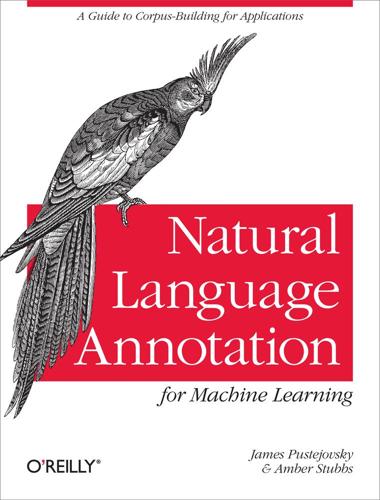
Natural Language Annotation for Machine Learning
by
James Pustejovsky
and
Amber Stubbs
Published 14 Oct 2012
The COBUILD (Collins Birmingham University International Language Database) dictionary is published, the first based on examining usage from a large English corpus, the Bank of English. The Survey of English Usage Corpus inspires the creation of a comprehensive corpus-based grammar, Grammar of English. The Child Language Data Exchange System (CHILDES) Corpus is released as a repository for first language acquisition data. 1990s: The Penn TreeBank is released. This is a corpus of tagged and parsed sentences of naturally occurring English (4.5 million words). The British National Corpus (BNC) is compiled and released as the largest corpus of English to date (100 million words). The Text Encoding Initiative (TEI) is established to develop and maintain a standard for the representation of texts in digital form. 2000s: As the World Wide Web grows, more data is available for statistical models for Machine Translation and other applications.
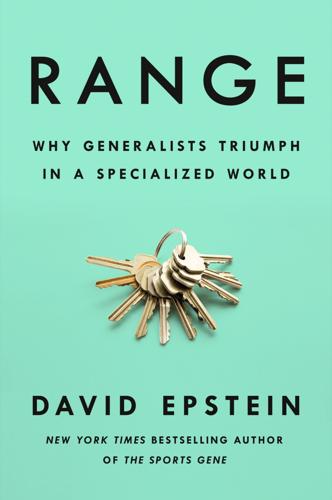
Range: Why Generalists Triumph in a Specialized World
by
David Epstein
Published 1 Mar 2019
But despite a lifetime of masterful interpretation of notes on the page, he said, “I can’t improvise at all.” * * * • • • Cecchini’s analogy to language learning is hardly unique. Even the Suzuki Method of music instruction, synonymous in the public consciousness with early drilling, was designed by Shinichi Suzuki to mimic natural language acquisition. Suzuki grew up around his father’s violin factory, but considered the instrument nothing more than a toy. When he fought with his siblings, they beat one another with violins. He did not attempt to play the instrument until he was seventeen, moved by a recording of Ave Maria. He brought a violin home from the factory and tried to imitate a classical recording by ear.
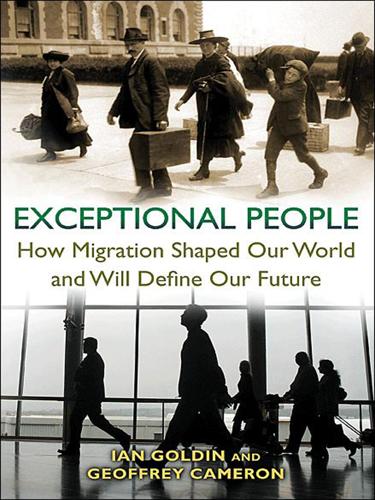
Exceptional People: How Migration Shaped Our World and Will Define Our Future
by
Ian Goldin
,
Geoffrey Cameron
and
Meera Balarajan
Published 20 Dec 2010
However, when new migrants become integrated into an urban underclass that is afflicted with social pathologies (poverty, violence, and criminal activity), aspirations for social mobility are undermined. Second-generation children may end up with worse life prospects than their parents. A primary obstacle to integration and social mobility for migrant parents and children is language acquisition. Migrants who do not speak the language of their host country tend to become more socially and geographically isolated. A vicious cycle results, where migrant enclaves form and become increasingly inward-looking. The formation of enclaves is also catalyzed by the experience of racism and xenophobia, which leads to what some sociologists call “reactive ethnicity.”47 Providing the education and skills to participate fully in mainstream society is key to breaking out of this cycle.

The Moral Landscape: How Science Can Determine Human Values
by
Sam Harris
Published 5 Oct 2010
Boyer argues, therefore, that explicit theologies and consciously held dogmas are not a reliable indicator of the real contents or causes of a person’s religious beliefs. Boyer may be correct in his assertion that we have cognitive templates for religious ideas that run deeper than culture (in the same way that we appear to have deep, abstract concepts like “animal” and “tool”). The psychologist Justin Barrett makes a similar claim, likening religion to language acquisition: we come into this world cognitively prepared for language; our culture and upbringing merely dictate which languages we will be exposed to.30 We may also be what the psychologist Paul Bloom has called “common sense dualists”—that is, we may be naturally inclined to see the mind as distinct from the body and, therefore, we tend to intuit the existence of disembodied minds at work in the world.31 This propensity could lead us to presume ongoing relationships with dead friends and relatives, to anticipate our own survival of death, and generally to conceive of people as having immaterial souls.

Inside the Nudge Unit: How Small Changes Can Make a Big Difference
by
David Halpern
Published 26 Aug 2015
It is thought that the disruption of the rapid mother–child interaction, or ‘meshing’, in early life stunts the infant’s development of the social skills and engagement in their environment in a way that leaves a permanent mark. Similarly, it appears that children exposed to more than one language as young children, despite an initial delay in language acquisition, later acquire fluency in both languages in a way that is distinctive throughout life. Such ‘critical periods’ matter in childhood and adult life, too. Most of us have the experience of picking up bad habits somewhere along the line, such as in a sport, driving or the use of language, that we later find it hard to shake off.
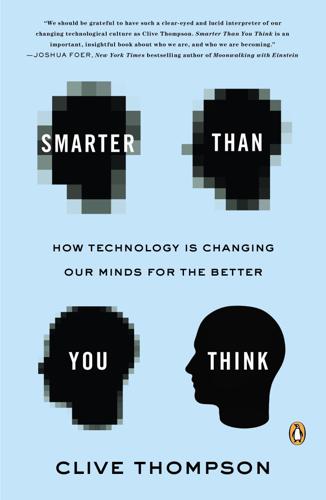
Smarter Than You Think: How Technology Is Changing Our Minds for the Better
by
Clive Thompson
Published 11 Sep 2013
And location turned out to be important: The boy tended to learn words more quickly when they were linked to a particular space. It’s a tantalizing finding, Roy points out, because it suggests we could help children learn language more effectively by changing where we use words around them. The data is still being analyzed, but his remarkable experiment has the potential to transform how early-language acquisition is understood. It has also, in an unexpected way, transformed Roy’s personal life. It turns out that by creating an insanely nuanced scientific record of his son’s first two years, Roy has created the most detailed memoir in history. For example, he’s got a record of the first day his son walked.

A People’s History of Computing in the United States
by
Joy Lisi Rankin
Its strategy of highlighting BASIC apart from time-sharing targeted different audiences. While executives might have considered a GE time-sharing system for their corporations, small-business owners, scientists, engineers, and academics may have sought out BASIC —a nd therefore a GE time-sharing service—for their work. The brochure for GE BASIC celebrated the ease of language acquisition (“BASIC is for beginners”) and the computing power held within the deceptively simply structure (“BASIC is for experienced programmers, too”). The back of the brochure featured user endorsements: “I do not program by profes- The Promise of Computing Utilities 121 sion, but use BASIC in the solution of everyday problems when necessary.”

The Great Experiment: Why Diverse Democracies Fall Apart and How They Can Endure
by
Yascha Mounk
Published 19 Apr 2022
In the United States, for example, more than two out of every three new citizens are proud to be American and believe that their adopted home is “better than most other countries.” The evidence that, belying projections by alarmists like Thilo Sarrazin, immigrants are rapidly integrating is even more stark when it comes to easily observed behavior like language acquisition. It is true that poorer immigrants tend to arrive in their new country with little or no command of its language. If they settle in communities with a lot of coethnics—like the Chinatowns that remain prevalent in many of America’s major metropoles or the banlieues that now surround France’s biggest cities—they may go to their graves without ever learning it.

Visual Thinking: The Hidden Gifts of People Who Think in Pictures, Patterns, and Abstractions
by
Temple Grandin, Ph.d.
Published 11 Oct 2022
Guardian, December 3, 2016. Baron-Cohen, S. The Pattern Seekers. New York: Basic Books, 2020. Behrmann, M., et al. “Intact Visual Imagery and Impaired Visual Perception in a Patient with Visual Agnosia.” Journal of Experimental Psychology 20, no. 5 (1994): 1068–87. Birner, B. “FAQ: Language Acquisition.” Linguistic Society of America. https://www.linguisticsociety.org/resource/faq-how-do-we-learn-language. Blazhenkova, O., and M. Kozhevnikov. “Creative Processes during a Collaborative Drawing Task in Teams of Different Specializations.” Creative Education 11, no. 9 (2020). Article ID 103051.
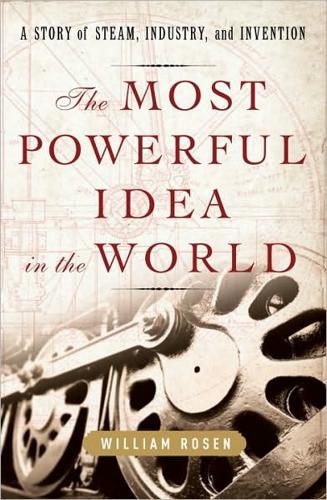
The Most Powerful Idea in the World: A Story of Steam, Industry, and Invention
by
William Rosen
Published 31 May 2010
Bruce Lahn, a geneticist at the University of Chicago, has documented an intriguing discontinuity in the evolutionary history of two genes—microcephalin and abnormal spindle-like microcephaly associated (ASPM)—which, when damaged, are complicit in some fairly onerous genetic disorders affecting intelligence (including big reductions in the size of cerebellums). That history shows substantial changes that can be dated to roughly 37,000 years ago and 5,800 years ago, which are approximately the dates of language acquisition and the discovery of agriculture. This is the first hard evidence that arguably the two biggest social changes in human history are associated with changes in brain size, and presumably function. No such changes dating from the birth of industrialization have been found, or even suspected.

The Mind in the Cave: Consciousness and the Origins of Art
by
David Lewis-Williams
Published 16 Apr 2004
The following chapters try to answer that question and, at the same time, show that what appears to be a ‘revolution’ was something much more complex.We need to ask wider questions than those that are usually posed.Essentially, we need to know how human consciousness evolved – not just intelligence. In what ways is consciousness linked to the making of art? Or, to put the question another way, is art-making simply a part of being human, as language appears to be, and therefore hardly in need of explanation (though the how, where and when of language acquisition are debated)? The ways in which writers have tried to answer these questions and explain Upper Palaeolithic art lead through labyrinths of Western thought, social circumstances and philosophy. CHAPTER 2 Seeking Answers The end of the controversy over the antiquity and authenticity of Upper Palaeolithic art simply started another one that has endured to this day.
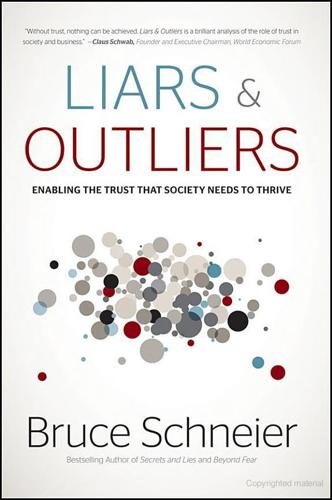
Liars and Outliers: How Security Holds Society Together
by
Bruce Schneier
Published 14 Feb 2012
Neuroscience may also help explain altruism, most recently using mirror neurons. These are neurons in our brain that fire both when we perform an action24 and when we observe someone else performing the same action. First discovered in 1992, mirror neurons are theorized to be critical in imitation and learning, language acquisition, developing a theory of mind, empathy, and a variety of other prosocial behaviors. Additionally, a large body of neuroscience research supports the notion that we are altruistic innately, even if we receive no direct benefit, because at a deep level we want to be. Studies using functional magnetic resonance imaging (fMRI) show that the amygdala, the primitive part of the brain associated with fear and anger, is involved in decisions about fairness and justice.

AI 2041: Ten Visions for Our Future
by
Kai-Fu Lee
and
Qiufan Chen
Published 13 Sep 2021
A famous test of machine intelligence known as the Turing Test hinges on whether NLP conversational software is capable of fooling humans into thinking that it, too, is human. Scientists have been developing NLP to analyze, understand, and even generate human language for a long time. Starting in the 1950s, computational linguists attempted to teach natural language to computers according to naïve views of human language acquisition (starting from vocabulary sets, conjugation patterns, and grammatical rules). Recently, however, deep learning has superseded these early approaches. The reason, as you may have guessed, is that advances in deep learning have demonstrated the capability of modeling complex relationships and patterns in ways that are uniquely suitable for computers, and scalable with the increasing availability of very large training data sets.
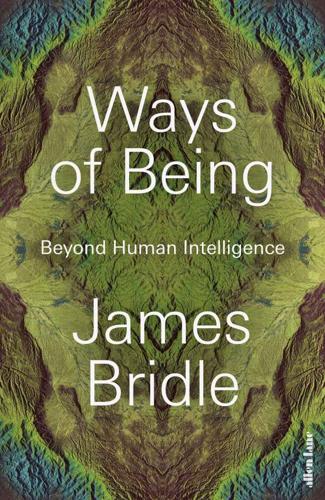
Ways of Being: Beyond Human Intelligence
by
James Bridle
Published 6 Apr 2022
All our conscious thinking, that which is expressible in language, is constrained by this arrangement of muscle, bone and atmosphere. Yo-he-ho theory is similar, but instead of involuntary bodily sounds, it holds that the first words were associated with action and exertion. Yo-he-ho is related to heave ho, a back-and-forth chant enabling rhythmic labour and synchronized teamwork; it was the first theory to root language acquisition in sociality and collaboration, which best chimes with modern theories of language as an emergent property of increasing social complexity. Language, according to yo-he-ho theory, is a response to our need to communicate, in order to work together to hunt, eat and survive. It also accounts for musicality and playfulness, because not all human needs are directly related to bare survival.

The Six: The Untold Story of America's First Women Astronauts
by
Loren Grush
Published 11 Sep 2023
Eventually, thankfully, her mom would seek therapy and emerge from her depression, though life was never quite the same again in the Sullivan household. As Kathy approached the end of high school, she set a concrete goal for herself: She was going to live abroad. And to do that, she figured that foreign languages would be her passport, granting her access to countries that would otherwise be off-limits. That language-acquisition journey didn’t last long, though. During freshman year at the University of California, Santa Cruz, an advisor insisted that Kathy had to take at least three science classes. It was not something Kathy wanted to do. Her advisor held firm, though, and he suggested a couple classes she might enjoy, such as oceanography and geology.
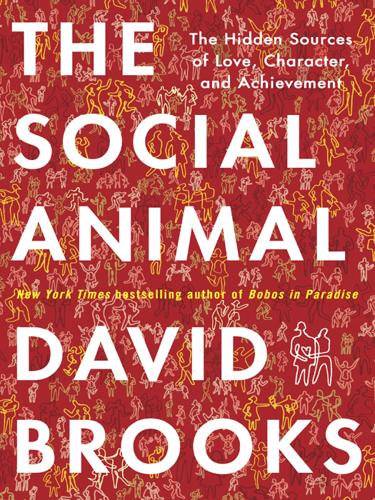
The Social Animal: The Hidden Sources of Love, Character, and Achievement
by
David Brooks
Published 8 Mar 2011
Harold had decided, or been cajoled, into doing his senior honors paper on some as yet undetermined aspect of ancient Greek life, and Ms. Taylor was going to be his faculty advisor. So Harold sat there listening to her as she went on excitedly about the project ahead. Her enthusiasm was contagious. It was fun to talk with her one-on-one. Studies of language acquisition have found that the quickest learning comes from face-to-face tutoring. The slowest learning comes from video- or audiotapes. Plus, there was something alluring about having a smart, attractive older woman talking about a mystery of intense interest to him. Ms. Taylor’s theory about Harold was that he was a popular, athletic high-school boy who also showed flashes of idealism.

The Master and His Emissary: The Divided Brain and the Making of the Western World
by
Iain McGilchrist
Published 8 Oct 2012
F., ‘Dissociation of autonomic and subjective responses to emotional slides in right hemisphere damaged patients’, Neuropsychologia, 1994, 32(7), pp. 847–56 Mednick, S. A., ‘The associative basis of the creative process’, Psychological Review, 1962, 69(3), pp. 220–32 Mehler, J., Bertoncini, J., Barrière, N. et al., ‘Infant recognition of mother’s voice’, Perception, 1978, 7(5), pp. 491–7 Mehler, J., Jusczyk, P., Lambertz, G. et al., ‘A precursor of language acquisition in young infants’, Cognition, 1988, 29(2), pp. 143–78 Meister Eckhart, Meister Eckhart: A Modern Translation, ed. R. B. Blakney, Harper Torchbooks, New York, 1957 ——, The Selected Works of Meister Eckhart, trans. O. Davies, Penguin, Harmondsworth, UK, 1994 Melsbach, G., Wohlschläger, A., Spiess, M. et al., ‘Morphological asymmetries of motoneurons innervating upper extremities: clues to the anatomical foundations of handedness?’
…
(eds.), Culture and Self: Philosophical and Religious Perspectives, East and West, Westview, Boulder CO, 1997, pp. 145–62 Miller, S. M., Liu, G. B., Ngo, T. T. et al., ‘Interhemispheric switching mediates perceptual rivalry’, Current Biology, 2000, 10(7), pp. 383–92 Mills, D. L., Coffey-Corina, S. A. & Neville, H. J., ‘Language acquisition and cerebral specialization in 20-month-old infants’, Journal of Cognitive Neuroscience, 1993, 5(3), pp. 317–34 Mills, L. & Rollman, G. B., ‘Hemispheric asymmetry for auditory perception of temporal order’, Neuropsychologia, 1980, 18(1), pp. 41–8 Milner, B., ‘Visual recognition and recall after right temporal-lobe excision in man’, Neuropsychologia, 1968, 6(3), pp. 191–209 (reprinted in Epilepsy & Behavior, 2003, 4(6), pp. 799–812) ——, Hemispheric Specialization and Interactions, Massachusetts Institute of Technology Press, Cambridge MA, 1975 Milner, B. & Taylor, L., ‘Right-hemisphere superiority in tactile pattern-recognition after cerebral commissurotomy: evidence for nonverbal memory’, Neuropsychologia, 1972, 10(1), pp. 1–15 Milo, R.
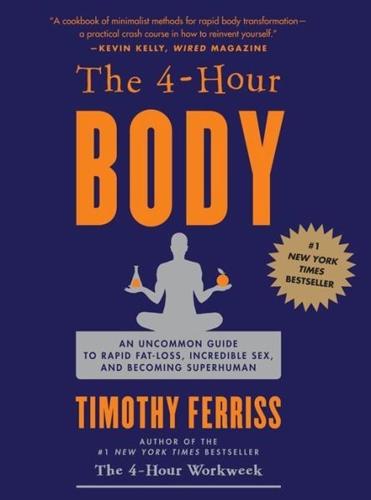
The 4-Hour Body: An Uncommon Guide to Rapid Fat-Loss, Incredible Sex, and Becoming Superhuman
by
Timothy Ferriss
Published 1 Dec 2010
Huperzine-A, an extract of Huperzia serrata, slows the breakdown of the neurotransmitter acetylcholine.2 It is a popular nootropic (smart drug), and I have used it in the past to accelerate learning and increase the incidence of lucid dreaming. I now only use huperzine-A for the first few weeks of language acquisition, and no more than three days per week to avoid side effects. Ironically, one documented side effect of overuse is insomnia. The brain is a sensitive instrument, and while generally well tolerated, this drug is contraindicated with some classes of medications. Speak with your doctor before using. 4.

Stranger Than Fiction: Lives of the Twentieth-Century Novel
by
Edwin Frank
Published 19 Nov 2024
* * * The novel had been imported from the West to Japan as part of the Meiji’s forced march to modernity. (The celebrated medieval Tale of Genji figured as something else altogether.) No Western books had been known in Japan before the Meiji, and translation first served largely as an aid to language acquisition and to introduce Western ways and ideas. Samuel Smiles’s Self-Help and John Stuart Mill’s On Liberty both made a big impression in the early years of the Meiji. The first novel to find an appreciative audience was Ernest Maltravers, by the popular Victorian writer Sir Edward Bulwer-Lytton, translated as A Spring Tale of Blossoms and Willows in 1879.
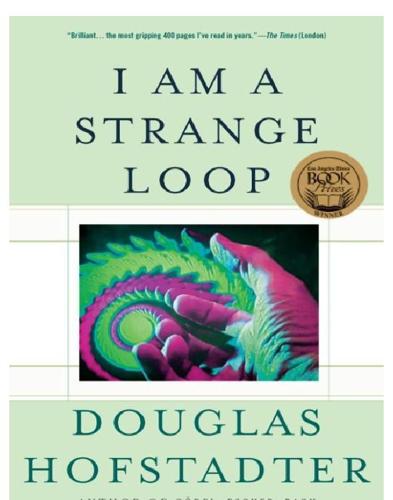
I Am a Strange Loop
by
Douglas R. Hofstadter
Published 21 Feb 2011
kits, electronic KJ, Himalayan peak, unscalability of Klagsbrun, Francine Klee, Paul Klüdgerot, the Klüdgerotic condition knees: awareness level of; as candidates for consciousness; reflex behavior of knobs of Twinwirld knowing, elusive nature of knurking and glebbing; not physical processes but subjective sensations; reliably evoked independently of brain’s wiring koans Kolak, Daniel Krall, Diana Kriegel, Uriah Külot, Gerd, drama critic, review of Prince Hyppia: Math Dramatica by L lambs as edible beings landmark integers language: acquisition of; as unperceived code; without self-reference “language”, vagueness of the term lap loop; photo of large-souled vs. small-souled beings Latin leaf piles: as endowed with Leafpilishness; intrinsic nature of; as macroscopic entities Leafpilishness, Capitalized Essence of leather, purchase of leatherette dashboard Leban, Roy and Bruce leg that is asleep Leibniz, Gottfried Wilhelm von Le Lionnais, François Leonardo di Pisa (Fibonacci) letters of the alphabet, as meaningless level-confusion, prevalence of, in discussions of brain/mind level-crossing feedback loops level-shifts, perceptual levels of description: causality at different; oscillation between Lexington (in “Pig”) liar paradox liberty and imprisonment as flipped sensations life: defined; as illusion; in Universe Z Life, John Conway’s Game of “light on inside”; suddenly extinguished linguistic sloppiness in reference to robots Linus (“Peanuts”) lions: compassion of; conscience of; possible vegetarianism of liphosophy lists: abstract patterns having great reality for us; abstractions in brain having causal powers; accidental attachments of Leafpilishness dollops; actions launched by self; brain structures, in descending order; Carol’s losses; causes and effects; composers whose style the author borrowed from; concepts in canine minds; concepts involved in “grocery store checkout stand”; concepts involved in “soap digest rack”; conscious entities, according to panpsychists; copycat actions by the author; determining factors of identity; emotionladen verbs; entities without selves; epiphenomena at human size; episodes in one’s memory; famous achievements influencing the author; high-level causal agents; high-level phenomena in brain; high-level phenomena in mind; ideas beyond Ollie’s ken; importable mannerisms of other people; items of dubious reality in newspaper; items in hog’s environment; leaf-pile enigmaslist of principal lists in I Am a Strange Loop; low-level phenomena in brain; macroscopic reliabilities; macroscopic unpredictables; magnanimous souls; memories from Carol’s youth; mentalistic verbs; mundane concepts beginning with “s”; mythical symbols; names morphing from “Derek Parfit” to “Napoleon Bonaparte”; objects of study in literary criticism; obstacles that crop up at random in life; Parfit book’s chapter titles; people with diverse influences on the author; phrases denying interpenetration of souls; physical phenomena that lack consciousness; physical structures lacking hereness; potential personal attributes; potential symbols in mosquito brain; problems with Consciousness as a Capitalized Essence; prototypically true sentences; qualia; questions triggered by Gödel’s theorem; rarely thought-of things; realest things of all; recipients of dollops of Consciousness; scenic events perceived by no one; self-referential sentences; shadowy abstract patterns in brain; simultaneous experiences in one brain; small-souled beings; stuff without inner light; synonyms for “consciousness”; synonyms for “eagerness”; things I wasn’t but could imagine being; things of unclear reality beginning with “g”; traits of countries; unlikely substrates for “I”ness; video-feedback epiphenomena; video-feedback knobs; what makes the world go round; words with ill-defined syllable-counts; words for linguistic phenomena literary criticism, objects of study in Little Tyke, allegedly vegetarian lion living inside someone else; see also survival; visitation Löb, Martin Hugo locking-in: of epiphenomena on TV screen: of “I”; of perceptions; of self lockstep synchrony of Gödel numbers and PM formulas logic of simmballs’ dance Logical Syntax of Language, The (Carnap) logicians’ use of blurry concepts long sentence loophole in set theory, Russell’s love: for children leading to soul-entanglement; halo of concepts with which we understand love; as cause for marriage; inseparability from “I” concept; poorly understood so far in terms of quantum electrodynamics; profound influence on us of those whom we “lower” animals, see hierarchy lower-level events, see substrate lower-level meaning of Gödel’s formula; ignoring of low-level view of brains low notes gliding into rumbles low-resolution copies, see fidelity Lucas, see Natalie Lucy (“Peanuts”) M Machine Q vs.

Adaptive Markets: Financial Evolution at the Speed of Thought
by
Andrew W. Lo
Published 3 Apr 2017
Instead of a child having to act as an expert cryptographer to decode a language from scratch, the human brain evolved a capacity to pick up contextual cues and quickly learn grammatical rules from its interaction with other speakers of the language nearly automatically, before the child’s brain becomes less plastic (have you ever tried learning a new language as an adult?). There’s a parallel here between Pinker’s ideas on the evolution of language acquisition and the psychological experiments using fear-based learning we encountered in chapter 3. Evolution has apparently developed several ways for human beings to learn vital concepts in a hurry. But can evolution tell us anything more about human intelligence? AN EVOLUTIONARY PECKING ORDER The neurological experiments performed on rats, monkeys, and other creatures we encountered in chapters 3 and 4 relied on the basic assumption that similar brain structures function similarly in evolutionarily related species.
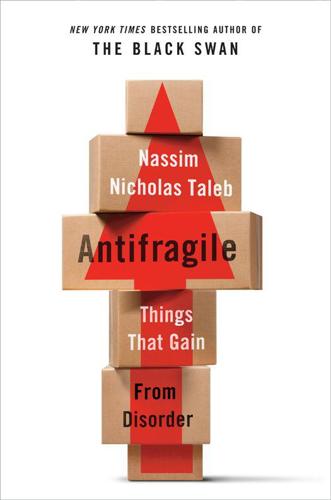
Antifragile: Things That Gain From Disorder
by
Nassim Nicholas Taleb
Published 27 Nov 2012
There is another danger: in addition to harming children, we are harming society and our future. Measures that aim at reducing variability and swings in the lives of children are also reducing variability and differences within our said to be Great Culturally Globalized Society. Punished by Translation Another forgotten property of stressors is in language acquisition—I don’t know anyone who ever learned to speak his mother tongue in a textbook, starting with grammar and, checked by biquarterly exams, systematically fitting words to the acquired rules. You pick up a language best thanks to situational difficulty, from error to error, when you need to communicate under more or less straining circumstances, particularly to express urgent needs (say, physical ones, such those arising in the aftermath of dinner in a tropical location).
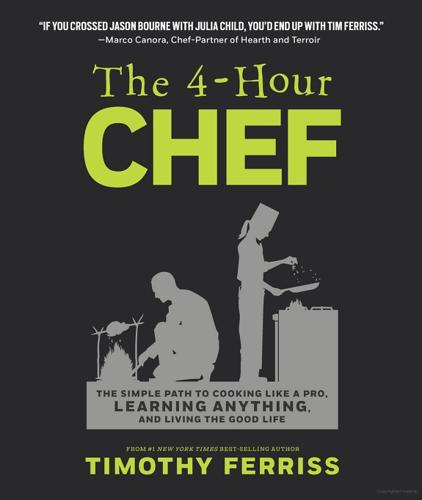
The 4-Hour Chef: The Simple Path to Cooking Like a Pro, Learning Anything, and Living the Good Life
by
Timothy Ferriss
Published 1 Jan 2012
I worked for Berlitz, then—itching to test new ideas immediately—traveled to Taiwan, where many of the pieces started to fall into place for “DiSSS” (coming in a couple of pages). Then I did something odd. I applied the same DiSSS process to learning kickboxing and, less than two months later, won the Chinese national kickboxing championships at 165 lbs. Flash forward to 2005. I had spent six years testing different approaches to natural languages. Here’s what my language acquisition times looked like in order, using standardized testing for all but Chinese: Recall that, at age 15, I’d failed to learn enough Spanish to hold a basic conversation. Now people were lauding me for being “good at languages” or congratulating me on being “gifted.” It was hysterical. I just had a better instruction manual.

The Secret of Our Success: How Culture Is Driving Human Evolution, Domesticating Our Species, and Making Us Smarter
by
Joseph Henrich
Published 27 Oct 2015
. ———. 1958. “Sign language inquiry.” International Journal of American Linguistics 24 (1):1–19. doi:10.2307/1264168. Kroll, Y., and H. Levy. 1992. “Further tests of the Separation Theorem and the Capital Asset Pricing Model.” American Economic Review 82 (3):664–670. Kuhl, P. K. 2000. “A new view of language acquisition.” Proceedings of the National Academy of Sciences, USA 97 (22):11850–11857. doi:10.1073/pnas.97.22.11850. Kumru, C. S., and L. Vesterlund. 2010. “The effect of status on charitable giving.” Journal of Public Economic Theory 12 (4):709–735. Kwok, V., Z. D. Niu, P. Kay, K. Zhou, L. Mo, Z. Jin, K.

The Last Empire: The Final Days of the Soviet Union
by
Serhii Plokhy
Published 12 May 2014
He would not necessarily stay in Ukraine if he was a passport Ukrainian and/or be sent away if he was a passport Russian or Armenian. What mattered no less was the officer’s place of birth and family ties, as well as other links to Ukraine. Last but not least, the officer would have to manifest a desire to serve Ukraine. If those criteria were met, he would be welcome: language acquisition could wait. Kravchuk was trying to build a political nation out of Ukraine’s multiethnic population, and Morozov was recruiting the Ukrainian officer corps on the same principle. Nuclear arms presented another challenge to the idea of Ukrainian independence. Morozov wanted an independent Ukrainian army, but initially neither he nor his political masters challenged the principle that nuclear forces on Ukrainian territory should be commanded from Moscow.

Blueprint: The Evolutionary Origins of a Good Society
by
Nicholas A. Christakis
Published 26 Mar 2019
P. Patterson, G. Francine, and R. W. Byrne, “The Development of Spontaneous Gestures in Zoo-Living Gorillas and Sign-Taught Gorillas: From Action and Location to Object Representation,” Journal of Developmental Processes 1 (2006): 69–102; J. D. Bonvillian and F. G. P. Patterson, “Early Sign-Language Acquisition: Comparisons Between Children and Gorillas,” in S. T. Parker, R. W. Mitchell, and H. L. Miles, eds., The Mentalities of Gorillas and Orangutans (New York: Cambridge University Press, 1999), pp. 240–264; and H. S. Terrance, Nim: A Chimpanzee Who Learned Sign Language (New York: Columbia University Press, 1987). 28.

NeuroTribes: The Legacy of Autism and the Future of Neurodiversity
by
Steve Silberman
Published 24 Aug 2015
Schopler believed that an approach to autism that took into account: “The Anatomy of a Negative Role Model,” p. 183. After reading the manual and watching a thirty-minute video: The Autism Matrix, p. 235. As a result, it became wildly popular: A History of Autism, p. 177. “Fifty percent of the autistic population are mute”: “Speech and Language Acquisition and Intervention: Behavioral Approaches,” Marjorie Charlop and Linda Haymes. Autism in Children and Adults, Johnny Matson, ed. Brooks/Cole, 1994, p. 213. The first international conference on Asperger’s: The Complete Guide to Asperger’s Syndrome, Tony Attwood. Kingsley, 2006, p. 36. “Odd and unusual behaviors do not, in and of themselves, constitute a ‘disorder’”: “Clinical Case Conference: Asperger’s Disorder,” Fred R.
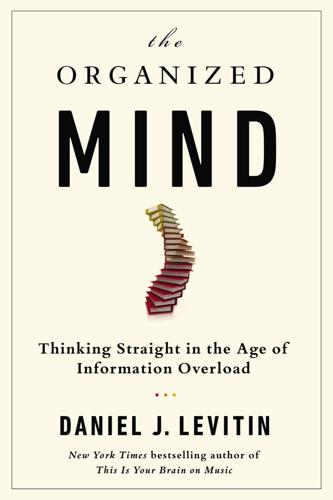
The Organized Mind: Thinking Straight in the Age of Information Overload
by
Daniel J. Levitin
Published 18 Aug 2014
The Prehistory of Mental Categorization Cognitive psychology is the scientific study of how humans (and animals and, in some cases, computers) process information. Traditionally, cognitive psychologists have made a distinction among different areas of study: memory, attention, categorization, language acquisition and use, decision-making, and one or two other topics. Many believe that attention and memory are closely related, that you can’t remember things that you didn’t pay attention to in the first place. There has been relatively less attention paid to the important interrelationship among categorization, attention, and memory.

Energy and Civilization: A History
by
Vaclav Smil
Published 11 May 2017
But even in much simpler societies than ours a great deal of labor was always mental rather than physical—deciding how to approach a task, how to execute it with the limited power available, how to lower energy expenditures—and the metabolic cost of thinking, even very hard thinking, is very small compared to strenuous muscular exertion. On the other hand, mental development requires years of language acquisition, socialization, and learning by mentoring and the accumulation of experience, and as societies progressed, this learning process became more demanding and longer lasting through formal schooling and training, services that have come to require considerable indirect energy inputs to support requisite physical infrastructures and human expertise.

Artificial Intelligence: A Modern Approach
by
Stuart Russell
and
Peter Norvig
Published 14 Jul 2019
Tech. rep., MIT Artificial Intelligence Laboratory. de Kleer, J. (1989). A comparison of ATMS and CSP techniques. In IJCAI-89. de Kleer, J. and Brown, J. S. (1985). A qualitative physics based on confluences. In Hobbs, J. R. and Moore, R. C. (Eds.), Formal Theories of the Commonsense World. Ablex. de Marcken, C. (1996). Unsupervised Language Acquisition. Ph.D.thesis, MIT. De Morgan, A. (1864). On the syllogism, No. IV, and on the logic of relations. Transaction of the Cambridge Philosophical Society, X, 331–358. de Salvo Braz, R., Amir, E., and Roth, D. (2007). Lifted first-order probabilistic inference. In Getoor, L. and Taskar, B. (Eds.), Introduction to Statistical Relational Learning.
…
Pineau, J., Gordon, G., and Thrun, S. (2003). Point-based value iteration: An anytime algorithm for POMDPs. In IJCAI-03. Pinedo, M. (2008). Scheduling: Theory, Algorithms, and Systems. SpringerVerlag. Pinkas, G. and Dechter, R. (1995). Improving connectionist energy minimization. JAIR, 3, 223–248. Pinker, S. (1995). Language acquisition. In Gleitman, L. R., Liberman, M., and Osherson, D. N. (Eds.), An Invitation to Cognitive Science (2nd edition). MIT Press. Pinker, S. (2003). The Blank Slate: The Modern Denial of Human Nature. Penguin. Pinto, D., McCallum, A., Wei, X., and Croft, W. B. (2003). Table extraction using conditional random fields.

The Best of Best New SF
by
Gardner R. Dozois
Published 1 Jan 2005
So I’ll show them the old videotapes of my sessions at the looking glass, and the sessions that the other linguists conducted; the tapes are instructive, and they’ll be useful if we’re ever visited by aliens again, but they don’t generate many good anecdotes. When it comes to language-learning anecdotes, my favorite source is child language acquisition. I remember one afternoon when you are five years old, after you have come home from kindergarten. You’ll be coloring with your crayons while I grade papers. “Mom,” you’ll say, using the carefully casual tone reserved for requesting a favor, “can I ask you something?” “Sure, sweetie. Go ahead.”

Lonely Planet Mexico
by
John Noble
,
Kate Armstrong
,
Greg Benchwick
,
Nate Cavalieri
,
Gregor Clark
,
John Hecht
,
Beth Kohn
,
Emily Matchar
,
Freda Moon
and
Ellee Thalheimer
Published 2 Jan 1992
With so many teaching styles and options, prospective students should research the choices carefully. Contact the tourist office Click here for an extensive list of schools. The following are among the most frequently and highly recommended: Cemanahuac ( 318-64-07; www.cemanahuac.com; San Juan 4, Colonia Las Palmas) Established in the 1970s, this place has an emphasis on language acquisition and social awareness, with many courses available taking in political and social issues in modern Mexico. Center for Bilingual Multicultural Studies ( 317-10-87, in the US 1800-574-1583, 1800-770-8646; www.bilingual-center.com; San Jerónimo 304, Colonia San Jerónimo) Part of the Universidad Internacional, the CBMS is accredited by the Universidad Autónoma del Estado de Morelos and affiliated with many foreign universities.